Best Graphics Cards for Gaming in 2025
Discover the top gaming graphics cards, ranging from premium to affordable options.

The most crucial component of a gaming PC is its graphics card. It serves as the powerhouse for generating stunning visuals, making it indispensable for gamers.
best CPUs for gaming
Achieving optimal performance in graphics depends on various factors. Given that preferences and budgets vary, we offer a range of choices to cater to diverse needs. Whether you seek speed, value, or quality within your budget, we have suitable options for you.
Where our
GPU benchmarks
Our ranking of the top graphics cards goes beyond performance, considering the overall value each card provides.
GPU pricing
When evaluating graphics cards, performance, features, efficiency, and availability are key factors, albeit subject to individual interpretation. Taking all these aspects into account, here are the top-performing graphics cards currently on the market.
It is time to update our selection of the top graphics cards. Considering the current market situation, we have refined our choices, focusing mainly on the latest generation models. There is no point in investing more in an older, slower version. This update brings a completely new list of recommendations.
It's common knowledge that the current state of the graphics card market is characterized by inflated prices. The scarcity of older GPU models since late 2024, coupled with the limited release of new generation components, has led to an imbalance between supply and demand. Addition of new tariffs in the U.S. and the growing need for AI data center components have further exacerbated the situation, resulting in a significant surge in prices.
Over the last four months, eight new GPU releases have taken place, marking significant industry advancements.
Intel Arc B580
kicked things off in mid-December, with the new
Arc Battlemage B-series GPUs
Back then, the signs were clear that challenges lay ahead. While our initial review dubbed it the "$249 favorite," the product's typical price settled at $400. This triggered the follow-up.
Intel Arc B570
The performance was not as remarkable as expected, yet the pricing has significantly increased its appeal in hindsight.
The
Nvidia Blackwell RTX 50-series GPUs
were teased at
CES
2025, with the
RTX 5090
and
RTX 5080
Scheduled for release by the end of January. All units were quickly purchased.
real-world scalper GPU prices
have been up to twice (or more) the MSRPs. The
RTX 5070 Ti
and
RTX 5070
The majority faced similar outcomes, with the latter moving towards its suggested retail price of $549. Recent listings show cards selling for around $650, indicating a slight trend.
Having been postponed for a few months, it's time to catch up.
AMD RDNA 4 RX 9000-series GPUs
landed on March 6. The
RX 9070 XT at $599
Seems like a fantastic offer considering specifications and performance, opposed to the basic version.
RX 9070 at $549
The initial pricing seems appealing, yet in reality, the cost typically ranges from $700 to $900, making the initial figures seem like a fantasy.
Are you considering older GPU models? Availability of the latest ones is limited.
Nvidia Ada Lovelace RTX 40-series
,
AMD RDNA 3 RX 7000-series
, and
Intel Alchemist Arc A-series GPUs
The availability of graphics cards has significantly decreased lately, except for the entry-level models priced at $300 or below. Even those have seen price hikes, with top-tier cards sometimes costing more than newer models. Purchasing an older card over a newer one would not be a wise decision.
RTX 4080 Super for $1,698
when you can buy an
RTX 5080 for $1,359
. The newer GPU isn't
massively
With increased speed and approximately 10% better performance compared to the previous model, you can now purchase it for $1,500 or less.
Best graphics cards for gaming, at a glance
| Graphics Card | 1080p FPS | 1440p FPS | 4K FPS | Price (MSRP) | Avg. Power |
|---|---|---|---|---|---|
| GeForce RTX 5090 | 168.3 | 138.0 | 98.2 | $3,999 ($2,000) | 394W |
| GeForce RTX 5080 | 149.7 | 105.4 | 64.8 | $1,400 ($1,000) | 253W |
| GeForce RTX 5070 Ti | 139.9 | 94.3 | 56.4 | $960 ($750) | 259W |
| Radeon RX 9070 XT | 136.3 | 90.9 | 54.6 | $850 ($600) | 280W |
| Radeon RX 9070 | 124.5 | 80.3 | 47.2 | $670 ($550) | 215W |
| GeForce RTX 5070 | 119.0 | 75.0 | 42.8 | $600 ($550) | 220W |
| Intel Arc B580 | 65.8 | 41.0 | 23.1 | $341 ($250) | 152W |
| GeForce RTX 4060 | 66.2 | 37.2 | 16.1 | $320 ($300) | 123W |
| Intel Arc B570 | 56.9 | 33.5 | 13.9 | $296 ($220) | 136W |
| Radeon RX 7600 | 52.9 | 24.5 | 11.3 | $260 ($270) | 144W |
| Intel Arc A750 | 47.2 | 29.4 | 15.2 | $200 ($200) | 184W |
Please be informed that the table above displays current online prices compared to the official launch MSRPs, sorted by GPU performance. Retail prices are subject to frequent changes; thus, the listed prices are accurate at the time of publication. Kindly consider that the "average power draw" column represents the.
Mean power consumption during testing for each GPU.
The 5090 model stands out for its efficient power usage when the CPU is the limiting factor at 1080p resolution, impacting the overall average positively.
The list above displays the most recent graphics cards available, in addition to a selection of older models that still offer good performance. These graphics cards represent our top recommendations at the moment. We have excluded all but the most affordable older generation GPUs from the list. These GPUs are particularly attractive to budget-conscious users and individuals seeking a temporary solution until prices stabilize, which could be a lengthy process.
Currently, there are just eight cutting-edge GPUs available, with expectations for the imminent release of around five more (RTX 5060 Ti 16GB/8GB, RTX 5060, RX 9060 XT, and RX 9060). To compare the performance of these GPUs with past models, explore our comprehensive analysis.
GPU benchmarks hierarchy
.
The performance rating includes 21 games from our revised test set, averaging results for rasterization and ray tracing equally. Please be aware that.
not
Incorporating upscaling or frame generation outcomes into the chart may heavily influence results, contingent on game selection and supported "performance-enhancing" versions.
Brief overview: DLSS 4 introduces enhanced image accuracy through multi-frame generation (MFG) on GPUs in the 50 series; DLSS 3 and 2 maintain comparable upscaling quality, with framegen support extended to 40 series GPUs. FSR 4 presents AI-driven upscaling and framegen improvements, exclusive to AMD's RX 9000-series cards; FSR 3.1 and older versions remain compatible.
any
XeSS 2 technology, although promising, lacks widespread support and mandates an Arc GPU. Meanwhile, XeSS 1.3.1 offers satisfactory performance but lags in game compatibility compared to FSR or DLSS.
Performance is a crucial aspect for many gamers, yet it is not the sole factor to consider. Our rankings take into account price, capabilities, and features, influenced by our expert evaluations. While other opinions may vary slightly, every card mentioned here deserves your attention.
1. Nvidia GeForce RTX 5070

Specifications
Reasons to buy
Reasons to avoid
The
GeForce RTX 5070
This product boasts significant advantages. It offers up to a 20% increase in speed compared to the previous RTX 4070 model, all for the same price of $549. Finding it at such a reasonable price might be challenging, as current retail costs often exceed Nvidia's recommended price.
Blackwell RTX 50-series GPUs
This one appears to be the most accessible choice currently.
Over the last few weeks, we've observed several 5070 cards fluctuating between $600 and $650, just slightly above the recommended retail price. We are currently monitoring this situation closely.
MSI Ventus 3X at Newegg for $599
, or there's even an
MSI Shadow 2X OC direct from MSI for $549
A remarkable fact is that the product has been on the market for quite a few hours now. Perhaps we are witnessing an adequate supply of the 5070. The latest 4070 and 4070 Super models are almost sold out (starting at prices exceeding $800), and there are no alternative GPUs offering superior performance at a lower cost. This positions the RTX 5070 as the top graphics card currently available, with the usual consideration of availability and pricing variations.
The most direct competition comes from
AMD's Radeon RX 9070
Our second choice is the product with a base MSRP of $549, but the current prices are hovering around $669. Despite being 12% more expensive, it offers 33% more VRAM. However, according to our tests, the 9070 model is only 7% faster at 1440p ultra settings (and 3% faster at 1080p). There is little doubt that Nvidia leads in ray tracing performance this time due to advancements in AMD's RDNA 4 chips. Nevertheless, Nvidia hardware still prevails in full RT games, with superior DLSS quality and support.
$600 or more used to be the realm of high-end GPUs, but these days it's more of a mainstream price point for graphics cards. Nvidia (and AMD) have really stretched out the range of performance you can find. The RTX 3090 for example was only about 37% faster than the RTX 3070 while costing three times as much back in early 2021 (and we'll just ignore the real-world pricing that was going on during those dark days). The RTX 4090 was basically twice as fast as the RTX 4070, still for triple the price. Today, the RTX 5090 continues that trend and effectively doubles the performance of the 5070 for more than triple the price.
If the price range of $600 to $700 is beyond your budget for gaming, we have compiled a list of more affordable GPUs below. While some may seem inflated compared to last year, the current market is saturated with high-priced cards, except for our top two recommendations. Explore our alternative suggestions if you are looking for a temporary solution until prices stabilize, although it remains uncertain when that will happen.
Read:
Nvidia GeForce RTX 5070 review
2. AMD Radeon RX 9070
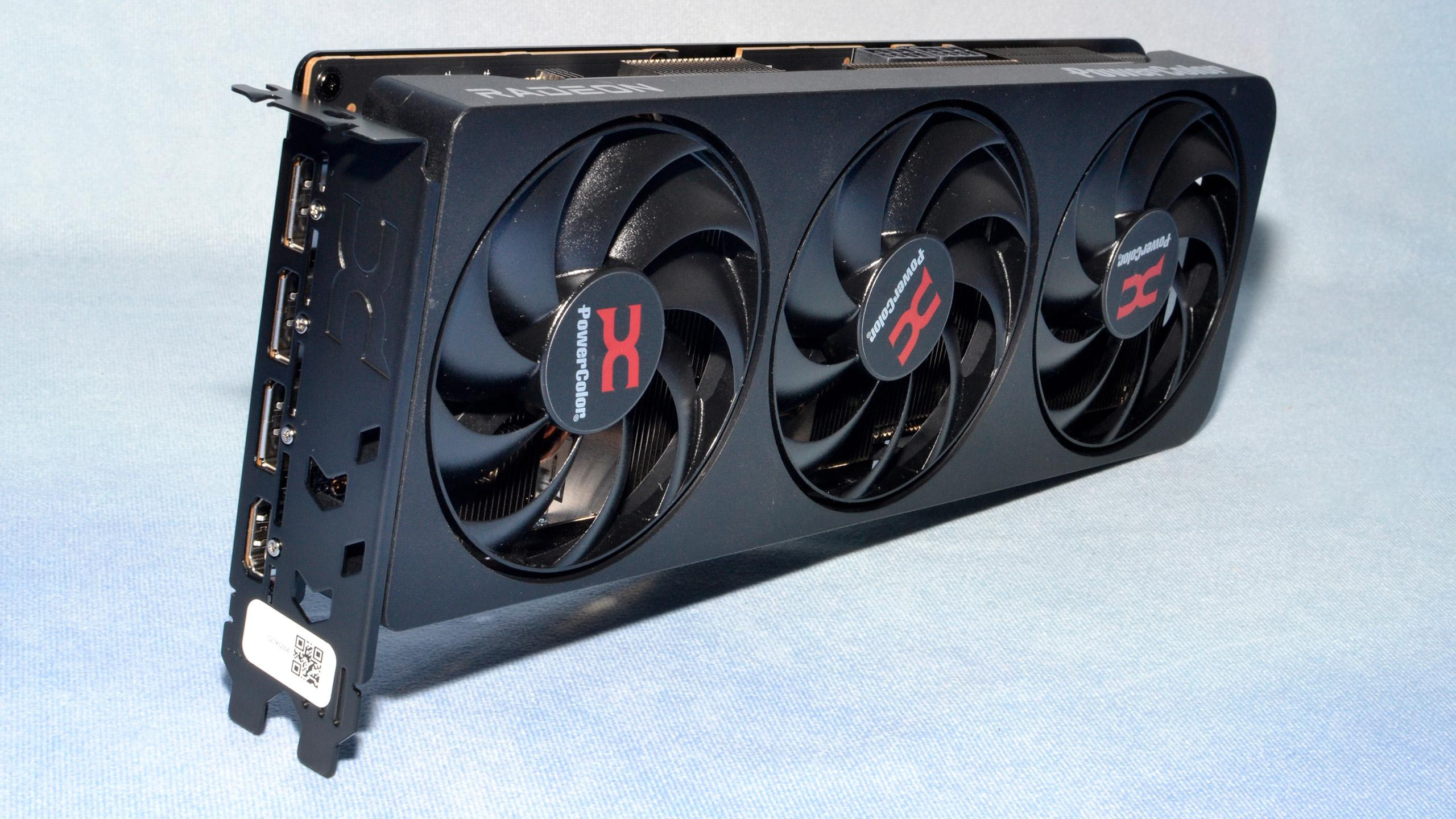
Specifications
Reasons to buy
Reasons to avoid
The AMD
Radeon
Ranked as the second-best graphics card, the RX 9070 stands out for its performance, pricing, and availability. It boasts similar pricing to the 5070 but delivers up to 10% better performance, particularly excelling at 4K and 1440p resolutions. However, current market prices for the RX 9070 are approximately 12% higher. Nvidia maintains an edge in software and features. Ultimately, the choice between these two excellent graphics cards boils down to the retail prices available.
AMD dramatically overhauled its
RDNA 4 GPU architecture
Compared to RDNA 3, we can confidently say that it is long overdue. RDNA 3 was a mere step sideways from RDNA 2.
GPU chiplets
were a cost-saving measure rather than a performance boosting choice. RDNA 4 moves back to a monolithic design, targeting mainstream performance rather than chasing the high-end and enthusiast markets. If AMD can keep supply coming and meet the demand, it should move a lot of GPUs.
Key enhancements per GPU compute unit (CU) include doubling the ray tracing capabilities, up to quadrupling the AI processing power, and improved shader performance, although the latter is somewhat more ambiguous. In our evaluation, the 56 CU RX 9070 significantly outperforms the previous generation 60 CU RX 7800 XT, both equipped with the same 16GB of GDDR6 memory (running at 20 Gbps compared to 19.5 Gbps). It exhibits a 30% improvement in overall performance, 26–31% faster in rasterization games, and 40–42% faster in ray tracing tasks.
Improvements ranging from 38% to 73% have been observed in AI and Stable Diffusion performance, depending on the workload. Notably, a 73% enhancement was achieved in a Stable Diffusion XL benchmark, which is considered more indicative of a demanding AI task. Additionally, AMD has enhanced both the encoding quality and performance of its video engine with RDNA 4.
The only real question will be
real-world GPU pricing
The market situation is highly dynamic at the moment. Just a few days ago, the RX 9070 was priced at over $870, which is 58% higher than AMD's suggested retail price. It's important to note that AMD does not manufacture 9070-series cards, so pricing is set by the AIBs. However, as of today, a Gigabyte RX 9070 Gaming OC can be found for $669, representing a 22% increase. The fluctuating prices can significantly impact the perceived value between the 5070 and 9070 when making a purchase decision.
Read:
AMD Radeon RX 9070 review
3. Intel Arc B580

Specifications
Reasons to buy
Reasons to avoid
The best graphics card right now doesn't need to be the fastest option, nor does it need to be incredibly cheap. All we really want is a great balance of price, performance, and features. The Intel Arc B580 hits two out of three, with price still being the wild card. It has a nominal $249 MSRP, which we generally haven't seen at retail since the card launched in December. That tempered our enthusiasm a bit, until the AMD and Nvidia cards sold out and made a $100 markup seem less terrible.
Discover the Arc B580 for $350? Not always, but currently it's available at this price.
Gunnir Arc B580 for $341
The majority of the newest GPUs are either unavailable or being sold at prices well above their suggested retail prices. Intel's Arc B580, priced reasonably at the moment, provides a great compromise with enhanced features.
drivers
A compelling combination of performance and features defines its appeal. The ranking greatly hinges on the daily price fluctuations. Below $300 offers excellent value, above $400 is less favorable, with the rest falling within the spectrum.
The B580 competes closely with Nvidia's RTX 4060 at 1080p but outperforms it at 1440p and 4K resolutions, although native 4K gaming may not be optimal. Compared to AMD's RX 6600, it delivers up to double the speed and is 67% faster than the RX 7600. This superior performance is attributed to its 12GB VRAM on a 192-bit interface, while rival GPUs typically offer 8GB on a 128-bit interface.
Concerns linger regarding drivers, yet Intel's driver team consistently releases updates, resolving most encountered issues. Some minor glitches persist with initial drivers on new releases. However, Intel's XeSS upscaling support, especially XeSS 2 with framegen, trails behind AMD and Nvidia in terms of game compatibility. On the other hand, FSR 3 generally performs well.
Fluctuations in pricing can impact the ranking of products. Should Intel boost production of Arc B580 chips and maintain competitive pricing compared to Nvidia and AMD, the Battlemage design stands out. A higher-tier model like B750 or B770 at a similar price point would be a welcome addition to the lineup.
Read:
Intel Arc B580 review
4. Nvidia RTX 4060

4. Nvidia GeForce RTX 4060
Our expert review:
Specifications
Reasons to buy
Reasons to avoid
The
GeForce RTX 4060
Approaching its second anniversary, this GPU has never been among our top choices. Despite some impressive features,
RTX 3060 12GB
With our solution, we expected this trend to persist as the new standard. However, Nvidia surprised us by deeming 8GB sufficient for a budget GPU, introducing a scaled-back version.
RTX 3060 8GB
.
And 8GB of VRAM sort of kind of is workable, to be fair. Most games will run decently at 1080p with a blend of high to ultra settings, but there are definitely titles where you'll need to reduce the settings to keep from exceeding the 4060's VRAM. DLSS upscaling works great at least, while framegen can increase the VRAM load and at times ends up failing to run well on the budget Ada solution.
In contrast to Intel's Arc B580, the main drawback of the 4060 is the absence of dedicated VRAM. Nevertheless, the 4060 still outperforms in efficiency and is frequently priced slightly lower. Additionally, it offers Nvidia's superior driver support, DLSS, and extra features, delivering comparable performance at 1080p. If the 4060 maintains a price point closer to $300 or below and stays in stock, it presents a compelling option in the current market landscape. All eyes are now on the anticipated developments.
RTX 5060
lands in pricing and performance later this year.
AMD's direct competition would be the
RX 7600 XT
However, the situation with pricing and availability of this card has become challenging, with prices exceeding $420. The 4060 surpasses other options effortlessly.
RX 7600
The GPU offers a modest performance increase of 40-50% over its predecessor, the 7600 XT, at both 1440p and 1080p resolutions. While not a glowing recommendation, it currently stands out as one of the better deals for Nvidia GPUs.
Read:
Nvidia GeForce RTX 4060 review
5. AMD RX 7600
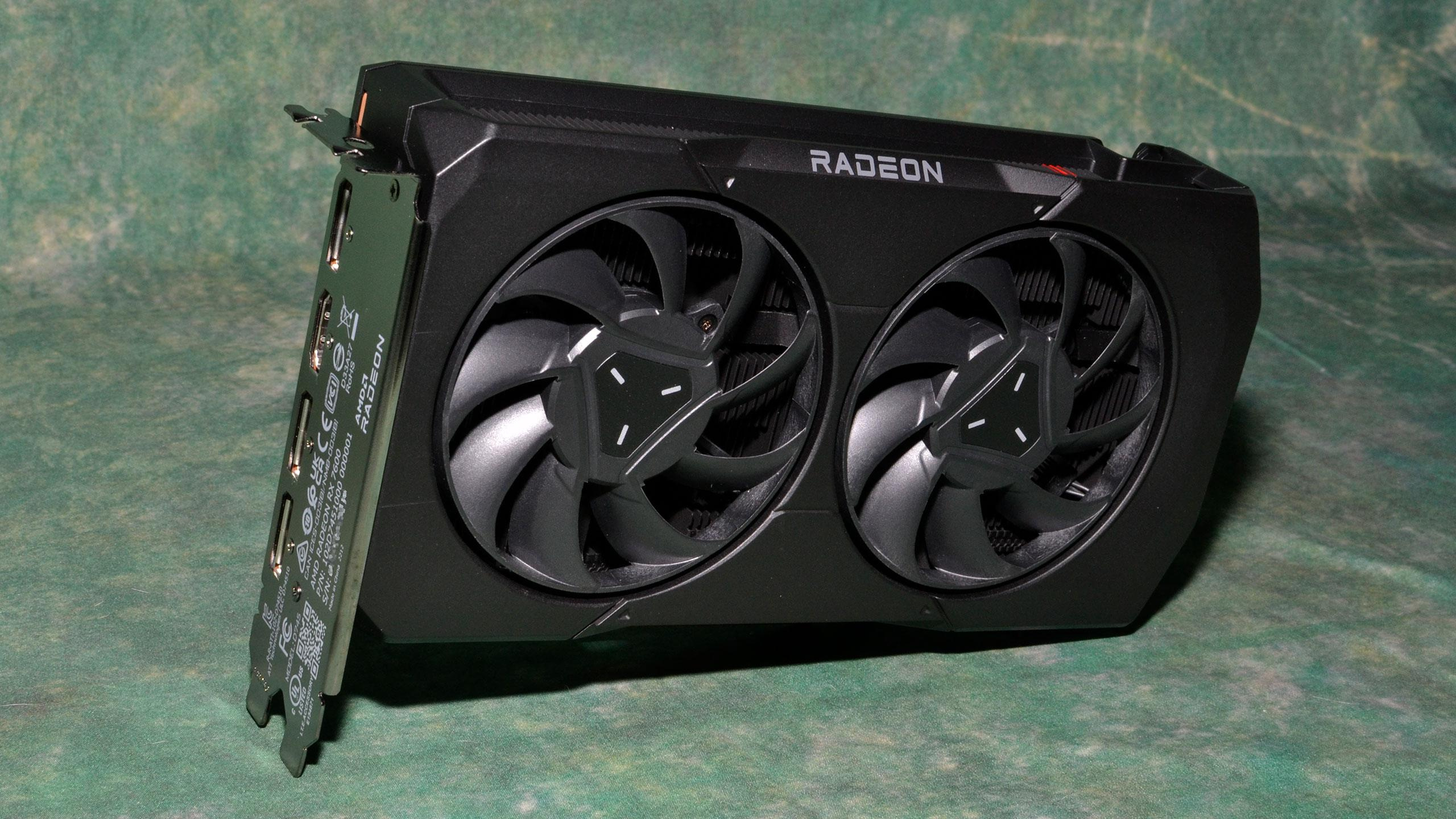
Specifications
Reasons to buy
Reasons to avoid
Prolonging the era of mature yet potent GPUs,
Radeon RX 7600
The Navi 33 GPU has replaced the previous Navi 23 parts, offering some additional features. Performance has seen a slight increase compared to the previous generation.
RX 6650 XT
By consuming approximately 20W less power, the upgraded version comes at a slightly higher cost of $10 to $20. The additional features encompass enhanced AI capabilities, dedicated AV1 hardware for encoding and decoding, and DisplayPort 2.1 UHBR13.5 outputs.
At present, the key consideration concerning the RX 7600 is its continued availability at an affordable price point. In contrast, Nvidia's RTX 4060, its closest competitor, has experienced a price increase of $20–$30 in the last two months. Meanwhile, the RX 7600 can still be acquired for $259. It is essential to note that this GPU is primarily designed for budget-conscious consumers and should be viewed as such. It serves as a suitable option for those in need of a temporary solution for a new PC build or for gaming at 1080p resolution (without ray tracing).
Nvidia's RTX 4060 is priced $60 higher, reflecting a 23% increase, offering approximately 40% enhanced performance with lower power consumption. It introduces DLSS, outperforming FSR in our evaluations. Despite both GPUs featuring 8GB VRAM, Nvidia demonstrates more efficient memory usage compared to AMD. While we typically advise against enabling ray tracing on a $250~$350 GPU, the 4060 can achieve nearly double the speed, making it suitable for playable performance even at 1440p resolution.
Consider purchasing the RX 7600 for satisfactory performance and good efficiency at a budget-friendly cost - especially if you prefer avoiding Intel drivers, are not a fan of Nvidia, and do not prioritize ray tracing. Alternatively, contemplate the Arc B580/B570 and RTX 4060 models for other options.
RX 7600 XT
Increasing the VRAM to 16GB may seem appealing, but given the current prices, it lacks value.
Further reading:
AMD Radeon RX 7600 review
AMD Radeon RX 7600 XT review
6. Intel Arc B570
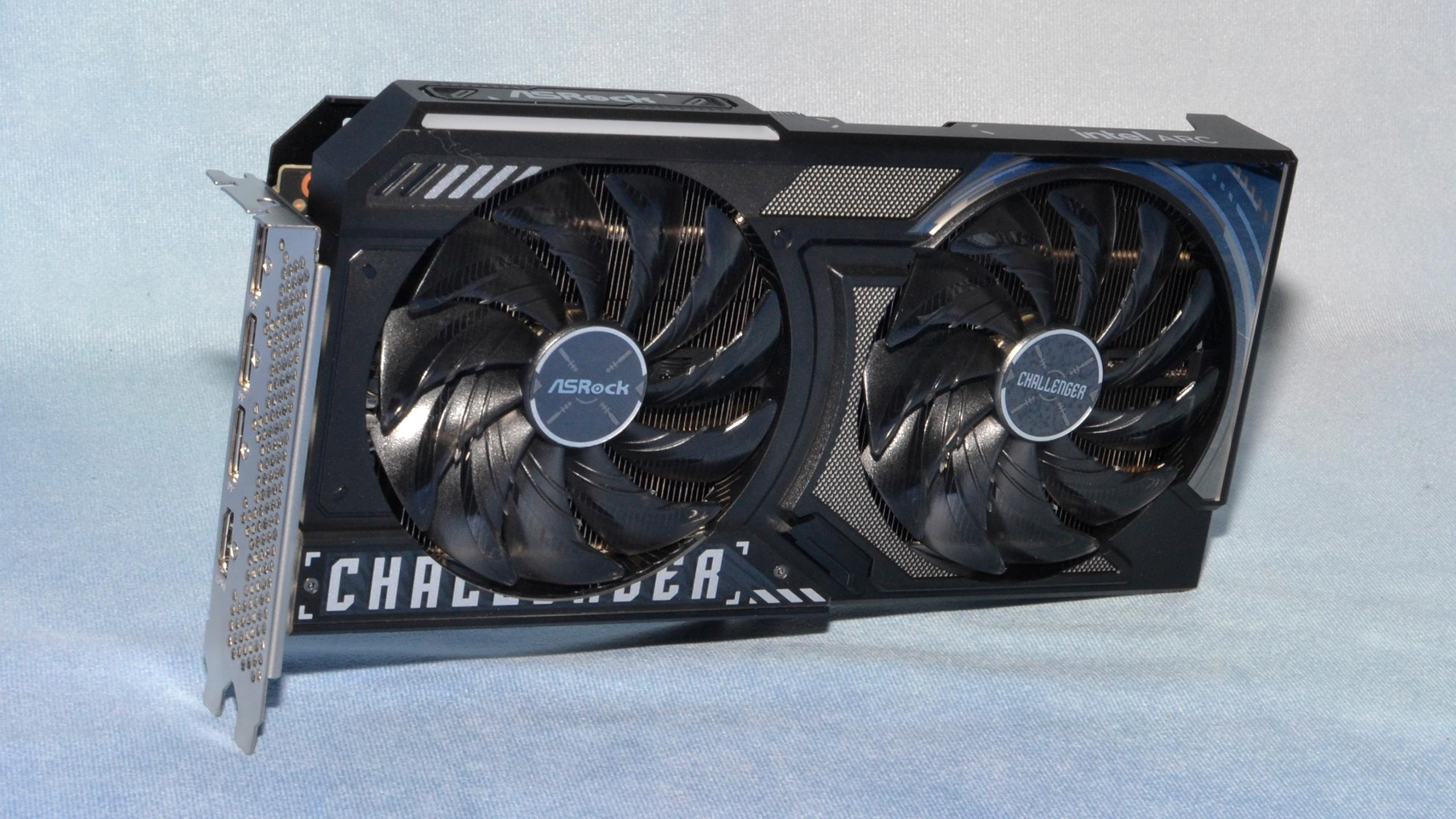
Specifications
Reasons to buy
Reasons to avoid
On paper, the
Intel Arc B570
The adjustment seems more significant than desired, reducing memory bandwidth and capacity by 17%, disabling 10% of GPU processing units, and decreasing GPU clocks by 3.5%. Despite a 12% price drop, the overall impact appears underwhelming. However, real-world performance may favor the B570 due to its pricing dynamics, surpassing initial expectations based solely on technical specifications.
The B570 has an official MSRP of $219.99, established by Intel. However, as Intel does not produce B570 cards, pricing is determined by AIB partners. Since its introduction in January 2025, the B570 has generally been sold at prices close to the MSRP, ranging from $220 to $250. Currently, a brief search indicates that the lowest price available is approximately $325. Further investigation may reveal even better deals on this product.
$279 Newegg combo
Receive an ASRock Arc B570 motherboard paired with an ASRock 650W Bronze PSU. While the PSU might be of basic quality, it hints that the graphics card could be priced below $250.
In practical terms, the performance of the Arc B570 is approximately 15% lower compared to the B580, which was within the anticipated range. Interestingly, there is a significant 39% decrease in performance at 4K resolution, indicating that the difference between 10GB and 12GB is quite similar to that between 8GB and 12GB. Moreover, our tests reveal that the B570 lags behind the RTX 4060 by around 14%, despite similar specifications. This discrepancy is likely attributed to driver-related factors.
Intel's drivers have shown remarkable progress lately.
Arc A380
Introduced in mid-2022 (initially released in China in early 2022). Significant enhancements have been made since then.
Arc A770
The October 2022 launch may not have been as remarkable, but significant improvements have been made with bug fixes and previously malfunctioning games now running smoothly on different Arc GPUs. Despite enhanced functionality, some games still exhibit lower-than-expected performance, indicating further room for optimization.
Considering all the benefits provided by an Nvidia GPU, such as DLSS and consistent driver updates, one could argue that the B570 competes closely with the older RTX 3060 12GB, still available online at a comparable price. However, for those seeking a new GPU with advanced features like AV1 encoding and DisplayPort 2.1, the B570 emerges as a viable alternative in the current market landscape, albeit with some considerations.
Read:
Intel Arc B570 review
7. Nvidia GeForce RTX 5080
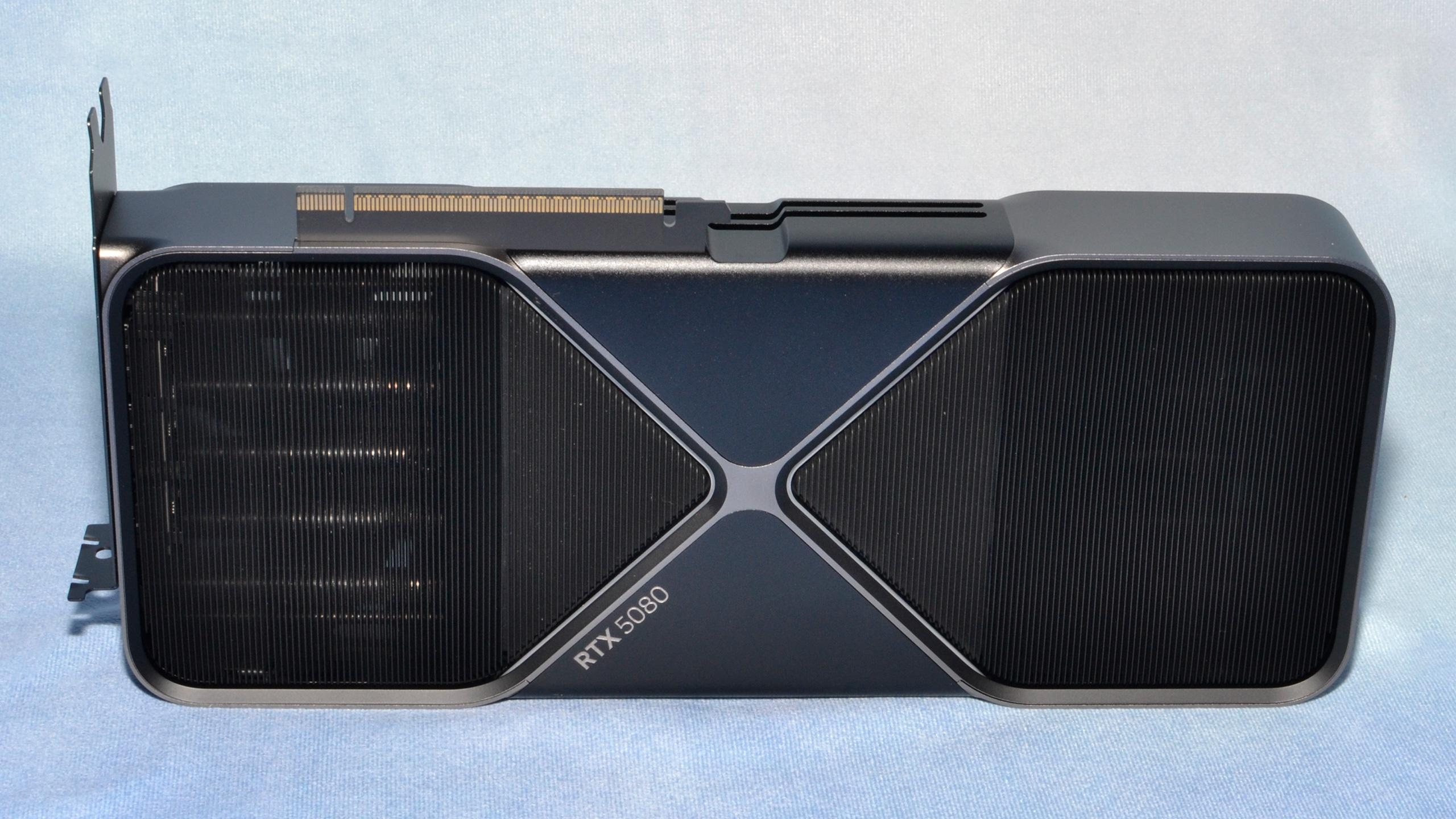
Specifications
Reasons to buy
Reasons to avoid
Nvidia's
GeForce RTX 5080
The latest high-end graphics card on the market may offer top-notch performance, but it comes at a steep price. Priced at $999 according to Nvidia's Founders Edition (which is not expected to be widely available), the 5080 cards are consistently selling out quickly, often well above the initial price. Any unit priced below $1,400 is unlikely to remain in stock for long. This situation serves as a stark reminder for those who anticipated significant performance improvements with the Blackwell RTX, and postponed purchasing an RTX 4080 Super for as low as $950 back in November.
In terms of performance improvements within the same generation, excluding AI tasks utilizing the new FP4 support or Nvidia's DLSS 4 Multi Frame Generation (MFG), the enhancements are rather modest. Based on our analysis, there is a marginal 7-9% rise in performance compared to the RTX 4080 Super. This translates to an approximate 9-12% speed boost for the 5080 over the original RTX 4080. Furthermore, it outperforms AMD's previous-generation RX 7900 XTX by up to 18%, which remains AMD's top-performing option.
Many users find fault with the high retail prices of the 5080, as it is notably inferior to the top-tier RTX 5090. The performance drop is significant, with the 5080 being 34% slower than the 5090, while the 4080 was only 24% slower. In comparison to the RTX 4090, the 5080 lags by 18%. However, when considering the exorbitant prices of the RTX 5090, the performance margin of the 5080 may seem more acceptable.
Nvidia has introduced new techniques to enhance "performance," specifically through MFG (Multi Frame Generation). In the past, a fixed function OFA (Optical Flow Accelerator) unit was used in the 40-series, which is still present in the 50-series. However, the latest DLSS 4 frame generation and MFG algorithms leverage AI tensor cores, promising improved performance and better image quality. This is achieved through FP8 inference calculations and various AI advancements made in the last couple of years.
While MFG isn't necessarily inferior, practical tests have shown that running MFG at 200 FPS compared to framegen at 120 FPS only results in a slightly enhanced visual and tactile experience. It falls short of the performance claims, such as Nvidia's "67% faster!" assertion in similar situations. Similar to framegen, MFG seems to offer around a 20% enhancement in fluidity for an 80% uptick in frame rates, requiring a significant input rate of at least 40 FPS to deliver optimal results.
The balance between supply and demand is improving, leading to a decrease in prices and better availability of cards. While prices have dropped to as low as $1,379 last week, currently the most competitive offer we can locate is...
$1,399 for a Zotac RTX 5080 Solid OC
— there are also
MSI Ventus
variants for
$1,399
to
$1,409
In the near future, it is probable that 5080 cards will be available for purchase at prices below $1,200. Our assessment suggests that this price range aligns with the gradual performance improvements seen in each generation of these cards.
Read:
Nvidia GeForce RTX 5080 review
8. AMD Radeon RX 9070 XT
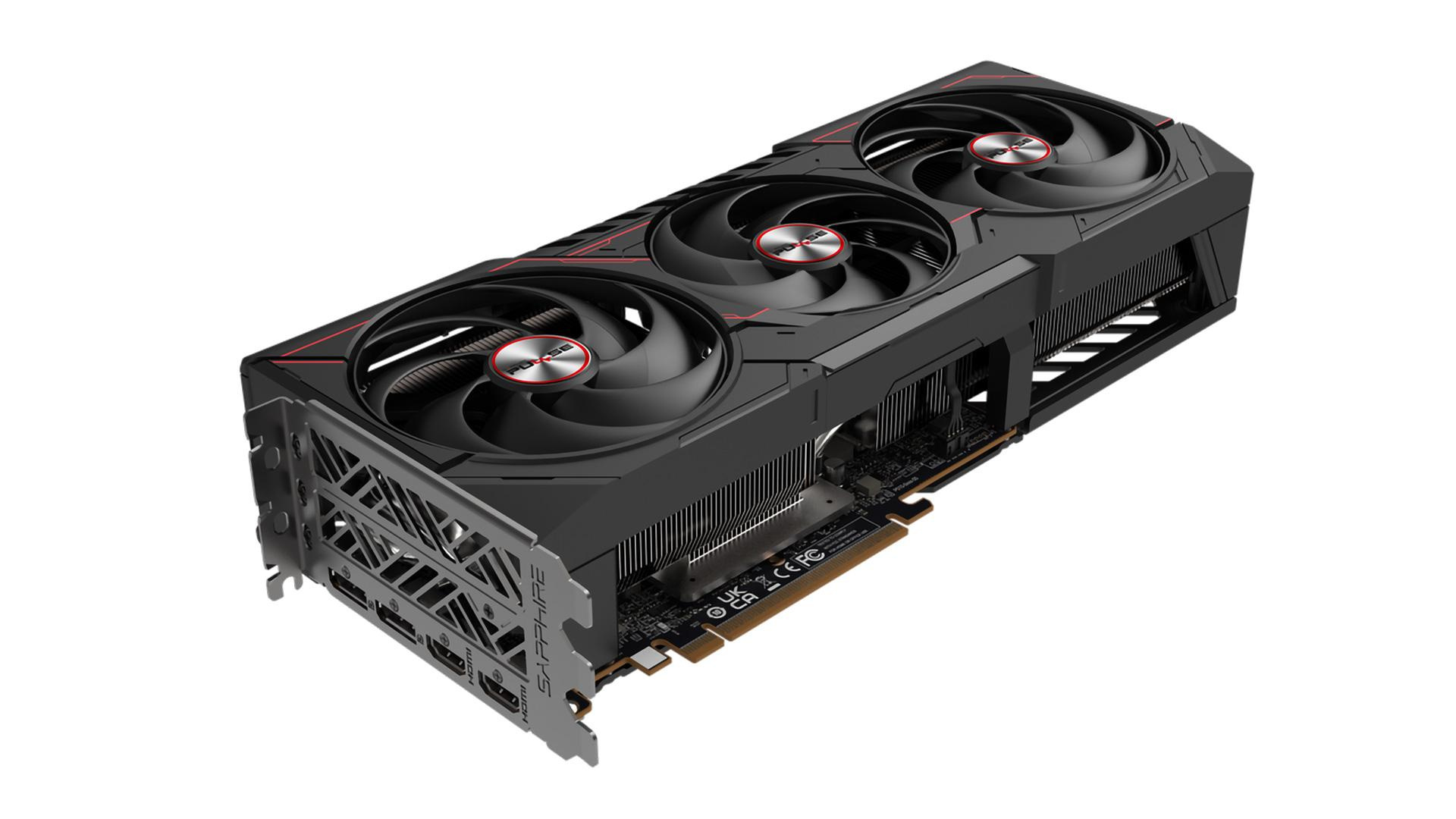
Specifications
Reasons to buy
Reasons to avoid
Our preference falls on the AMD Radeon RX 9070 as our second choice due to its more favorable real-world pricing in the U.S. compared to the RX 9070 XT. Initially, AMD set MSRPs at $549 and $599, indicating a 9% price difference for a 15% performance enhancement. Presently, retail values stand at $669 and $849 for the two GPUs, reflecting a 27% price surge for the same 15% performance increase. Nonetheless, prices are subject to fluctuations, and should the 9070 XT drop below $750, it would once again become the more attractive option.
As above, the
RDNA 4 GPU architecture
Enhancing AMD's competitive position significantly, the RX 9070 XT outperformed the RTX 5070 by 24% in our evaluations, trailing the pricier RTX 5070 Ti by just 4%. Nvidia maintains an edge in demanding ray tracing games, with superior DLSS upscaling and frame generation technologies. The question arises whether the extra cost of over $100 for Nvidia's offerings is justifiable, particularly considering personal preferences towards upscaling, frame generation, and exclusive software solutions.
In international markets, the pricing of the 9070 XT may be more competitive, making it a preferable choice over the standard 9070 if the price difference is less than 15%. This trend influences the higher demand for AMD's leading RDNA 4 solution, raising concerns about long-term availability. Following the GPU launch on March 6, AMD swiftly depleted approximately three to four months' worth of inventory due to strong sales performance.
The best price we've found, recently, for the
RX 9070 XT is $789 at Newegg
, which is now sold out. There's an
$849 third-party listing on Amazon
Consider purchasing now, or monitor for potential price reductions. Uncertainty looms due to upcoming tariffs and persistent supply chain disruptions, making future retail pricing unpredictable.
Read:
AMD Radeon RX 9070 XT review
9. Nvidia GeForce RTX 5070 Ti
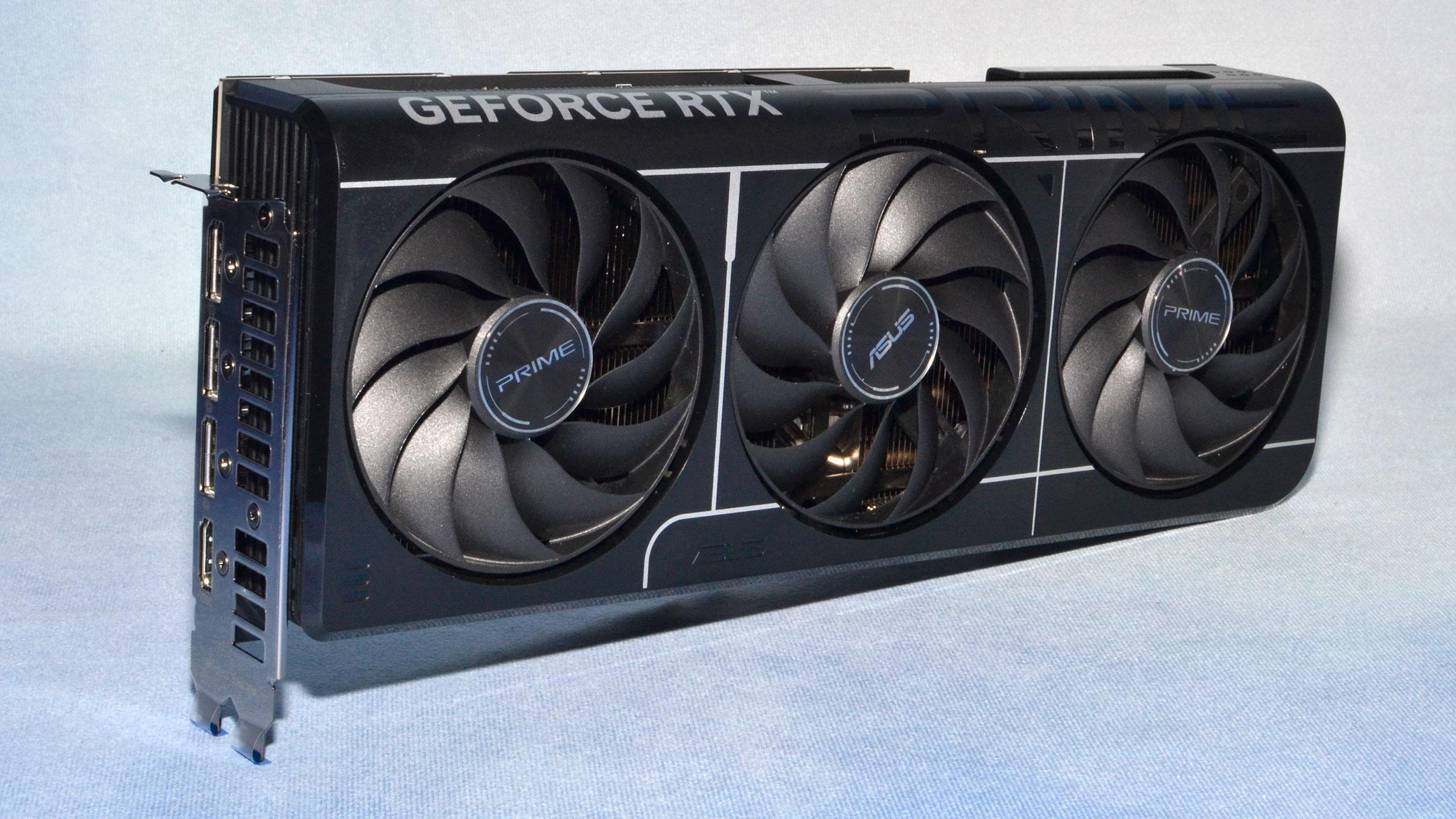
Specifications
Reasons to buy
Reasons to avoid
The
Nvidia GeForce RTX 5070 Ti
This product has the potential for greatness and could still reach remarkable heights. Like many other GPUs, its success will depend on competitive pricing and availability. Initially priced at $749, it was expected to be a solid option. However, the current market trend shows that it has not been widely available for under $1,000 since its launch.
The performance results may not come as a shock. Our tests reveal that the RTX 5070 Ti delivers 90% of the performance of the 5080, at a 75% lower price. Nevertheless, it shows a modest 12% improvement over the previous generation.
RTX 4070 Ti Super
Purportedly offered at a lower price of $50, the upgrade may appear insignificant at first glance. However, it is important to note that Blackwell RTX 50-series GPUs leverage the TSMC 4N process node, similar to the RTX 40-series. Therefore, even a minor enhancement represents a positive stride forward.
Nvidia points to MFG as the way forward, and the pre-launch claims that the RTX 5070 could beat and RTX 4090 went over about as well as you'd expect. Multiplying framerates by AI-based frame interpolation and smoothing can help, but not nearly as much as the numbers imply. Start with 50 FPS and apply 2X framegen to get to 90 FPS, and it looks smoother but feels more like 60~65 FPS. With 4X MFG Nvidia can push that to perhaps 160 FPS... and it still feels more like 75~80 FPS. Better, perhaps, but not at all the same as what you'd feel from a native (non-framegen) 160 FPS!
It is essential to acknowledge that the experience of games running at very high framerates reaches a saturation point. While the variance between 120 FPS and 60 FPS is discernible, the improvement diminishes significantly when transitioning from 120 to 180 FPS or even 240 FPS. For the majority of gamers, the focus lies not on pushing a game from 120 to 240 FPS, but rather on elevating games from 30 FPS to 60 FPS or beyond. This transition is perceptible, although frame interpolation technology is less effective for games operating at around 30 FPS.
What about the RTX 5070 Ti? It boasts sufficient VRAM to tackle most games at maximum settings. However, some demanding titles like "Indiana Jones and the Great Circle" with full RT effects can push memory usage over 16GB, resulting in performance issues. Moreover, it outperforms the 9070 XT by around 4% and offers compatibility with Nvidia's DLSS technologies. In conclusion, while it may be pricier than the 9070 XT, the performance gain is not substantial.
Our recommendation is to consider purchasing when the price drops below $850, ideally at $800 or lower, aligning more closely with its true value, even if it may not reach this level in the U.S. market.
Read:
Nvidia GeForce RTX 5070 Ti review
10. Nvidia GeForce RTX 5090
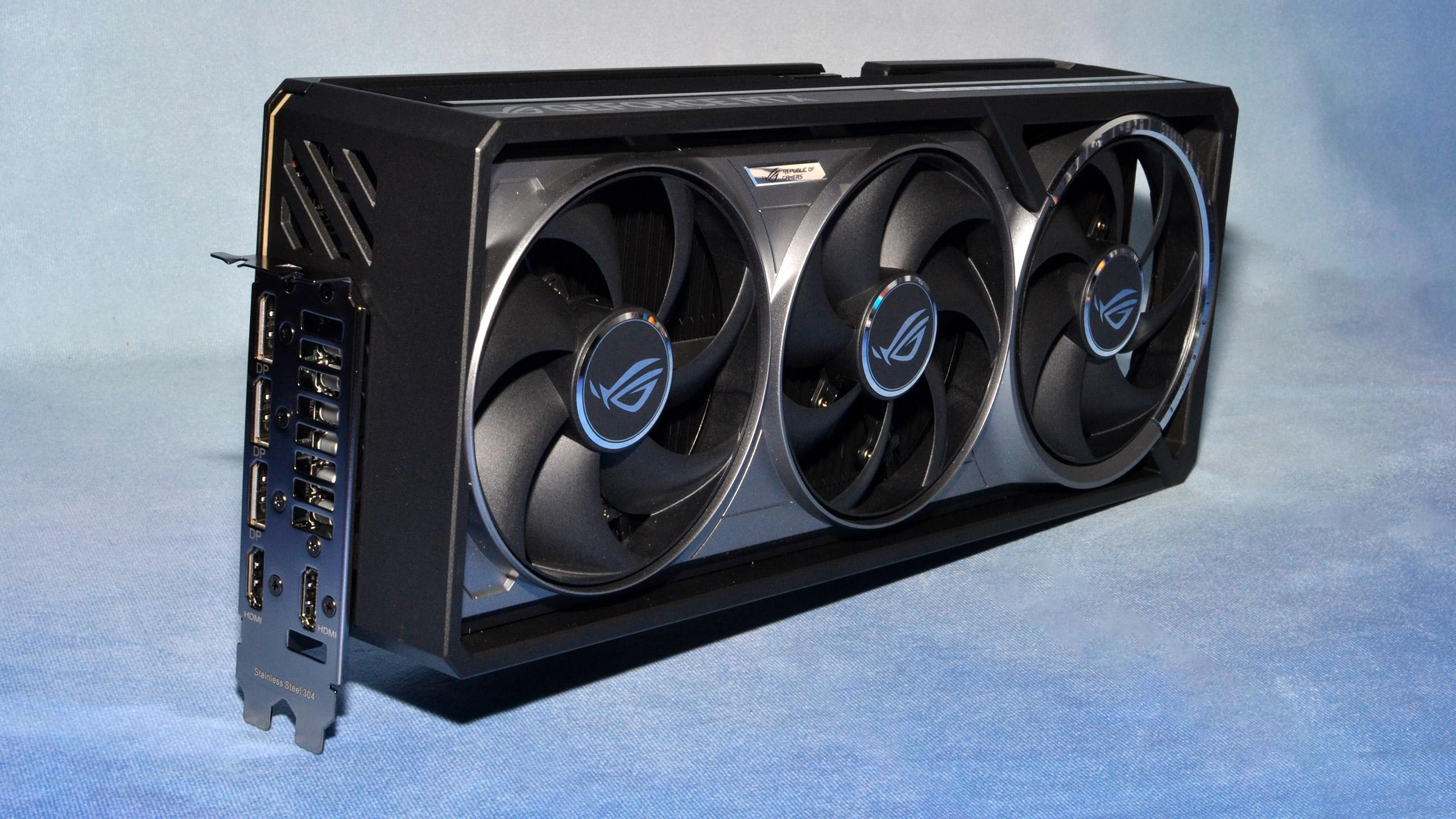
Specifications
Reasons to buy
Reasons to avoid
And here we are:
Nvidia GeForce RTX 5090
Meet the unparalleled Grand Poobah of consumer graphics cards - the fastest one to ever hit the market. If you're seeking the ultimate GPU for gaming without any compromises, look no further. Priced at $1,999, this powerhouse outperforms its predecessor, the RTX 4090, by 25% and carries a 25% higher base MSRP. This increase aligns with the current technological advancements and the absence of Moore's Law progress. However, global retail prices have raised eyebrows, leaving uncertainty regarding the actual availability of the elusive 5090 GPUs.
Some people put together details from Micro Center suggesting all 28 stores combined had a total inventory of just 233 RTX 5090 cards on January 30, 2025. Online stores basically didn't show any cards in stock for weeks. Even eBay doesn't suggest there have been a lot of 5090 cards produced, with only 209 sales in the U.S. over the past month. Perhaps that's because most buyers aren't looking to sell, but if you want a card, be prepared to pony up in a big way.
There's a
$3,999 4090 listing on Amazon
Currently, the MSRP has doubled. The question arises: can AIB partners generate a decent profit at $1,999? It is hard to determine without knowing the expenses they incur from Nvidia for the GPU and memory. However, it seems plausible, given they sell a sufficient quantity. If they struggle to acquire an adequate amount of 5090 GPUs, prices will surge, as evidenced recently.
Consider purchasing a new PC from a system builder if you are interested in owning an RTX 5090. While Newegg currently has no 5090 cards available, opting for a pre-built system might be a more feasible option.
Ryzen 7 7800X3D PC
Equipped with 64GB RAM, a 2TB SSD, and an RTX 5090, priced at $4,579. The components, including memory, motherboard, cooler, case, power supply, storage, and OS, total around $1,300 (plus/minus $100). Effectively, you're investing about $3,000 in the RTX 5090 alone and $250 in system testing and assembly.
We love the theoretical performance the 5090 offers, even if it's often held back by the CPU. But the current pricing means we can't recommend it to most people. If you have the funds to buy one and the price tag doesn't scare you away, enjoy having Nvidia's top GPU for the next two years while we wait for the inevitable RTX 6090.
Read:
Nvidia GeForce RTX 5090 review
11. Intel Arc A750
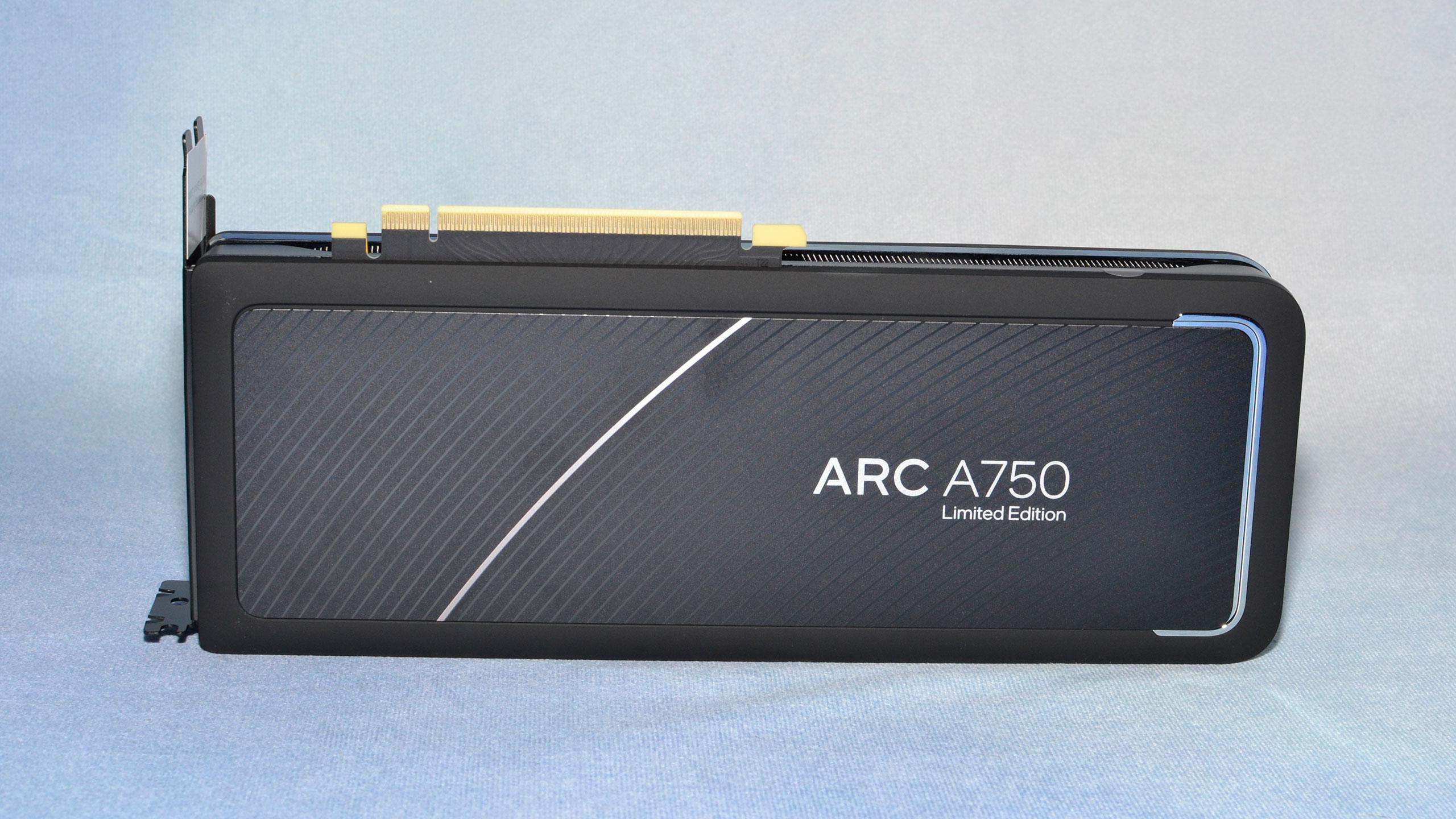
Specifications
Reasons to buy
Reasons to avoid
The
Intel Arc A750
Navigating the launch felt akin to managing two different entities. While performance occasionally shone, Arc often fell below anticipated standards.
drivers continued to improve
Nevertheless, starting at $200, this GPU offers the best value overall, disregarding the expenses of other PC parts in your setup.
There are compromises you'll need to make, like the 8GB of VRAM, relatively inefficient architecture, and occasional driver oddities — all things justifiable by the $200 price tag. The A750 actually comes out ahead at 1080p ultra, as well as 1440p and 4K where performance is questionable on both cards, but AMD's 7600 runs 29% faster at 1080p medium. Again, that's more down to drivers and architecture.
Intel was the first company to deliver
hardware accelerated AV1 encoding
and decoding support, and QuickSync continues to deliver an excellent blend of encoding performance and quality. There's also XeSS, basically a direct competitor to Nvidia's DLSS, except it uses Arc's XMX matrix cores when present, and can even fall back into DP4a mode for non-Arc GPUs. But DLSS 2 still comes out on top, never mind DLSS 3 and DLSS 4, and those are all far more widely supported.
When looking for a cost-effective GPU as a temporary solution, the Arc A750 is a viable option, adding a new player to the GPU market. The availability of Arc Alchemist has exceeded market demand, with stock still plentiful over two years post-launch. However, this situation may shift soon. In contrast, the Arc B570 provides a 15% performance boost, improved efficiency, and is anticipated to become more affordable in the near future.
Read:
Intel Arc A750 Limited Edition review
How we test the best graphics cards
Determining the true potential of a graphics card requires removing all possible constraints. In our revised 2025 testing setup, we utilize an AMD Ryzen 7 9800X3D processor, ASRock X670E Taichi motherboard, 32GB G.Skill DDR5-6000 CL28 RAM, Crucial T700 4TB SSD, Corsair HX1500i Platinum power supply, and a top-tier graphics card.
Cooler Master
With a 280mm CPU cooler, the latest Ryzen 9 9950X3D offers slightly improved performance. Our build prioritizes top-tier components, allowing us to concentrate on optimizing the graphics cards for peak performance.
We test across the three most common gaming resolutions, 1080p, 1440p, and 4K, using 'medium' and 'ultra' settings at 1080p and 'ultra' at 1440p and 4K. Where possible, we use 'reference' cards for all of these tests, like Nvidia's Founders Edition models and AMD's reference designs. Most midrange and lower GPUs do not have reference models, however, and in some cases we only have factory overclocked cards for testing. We do our best to select cards that are close to the reference specs in such cases.
For each graphics card, we follow the same testing procedure. We run one pass of each benchmark to "warm up" the GPU after launching the game, then run at least two passes at each setting/resolution combination. If the two runs are basically identical (within 0.5% or less difference), we use the faster of the two runs. If there's more than a small difference, we run the test at least twice more to determine what "normal" performance is supposed to be.
We also look at all the data and check for anomalies, so for example we expect the RTX 5080 to be faster than the RTX 5070 Ti; if it's not, and we're not in a CPU limited situation, we'll recheck both cards. (We did drop several games from our initial test suite after determining there was too much variability between tests, due to things like dynamic weather and time of day.)
Considering the extensive testing required for each GPU, the performance may be affected by updated drivers and game patches released over time. To ensure the accuracy of our results, we regularly reevaluate a selection of graphics cards. If discrepancies are found, we conduct additional tests on the relevant GPUs and games. Moreover, we may expand our test portfolio by incorporating new popular games suitable for benchmarking purposes.
what makes a good game benchmark
for our selection criteria.
Best graphics cards performance results
Our revised collection of games now includes 18 titles, with ray tracing activated in four of them. While seven games are compatible with DXR technology, we selectively enable ray tracing only for those games where it significantly enhances the visual experience. The remaining 14 games are operated in rasterization mode, irrespective of their ray tracing support.
We also test everything
without
When it comes to upscaling and frame generation technologies, one must consider their level of universal support and the varying image quality outcomes they produce. DLSS stands out for its superior image quality, particularly with DLSS 4 that enhances upscaling and frame generation capabilities. On the other hand, FSR 3 primarily benefits from frame generation in terms of performance but may sometimes exhibit inferior image quality resembling poor interpolation. FSR 3.1 addresses this issue to some extent, although its game compatibility is limited. FSR 4, requiring a 9070 card, offers image fidelity comparable to DLSS 2. XeSS 1.3 and later versions also compete with DLSS 2/3 in terms of quality but lack widespread support.
The data in the following charts is from testing conducted during the past several months. We've tested all of the latest GPUs at every resolution and setting, even where it generally doesn't make sense (e.g. 4K with ray tracing at single digit framerates). For each resolution and setting, the first chart shows the geometric mean (i.e. equal weighting) for all tested games. The second chart shows performance in the 14 rasterization games, and the third chart focuses in on ray tracing performance in four games. Then we have the 18 individual game charts, for those who like to see all the data.
Explore the latest graphics cards from Nvidia RTX 50-series, AMD RX 9000-series, and Intel Arc B-series, along with notable older models. Review the comprehensive charts for informed decision-making.
GPU benchmarks
The hierarchy includes extra information on other GPUs tested. Charts color-coded: AMD in red, Nvidia in blue, Intel in gray for clarity. View for comprehensive insights.
The charts have been updated as of March 28, 2025. Further GPU testing and additions will be conducted as necessary.
Best Graphics Cards — 1080p Medium
Why you can trust Tom's Hardware

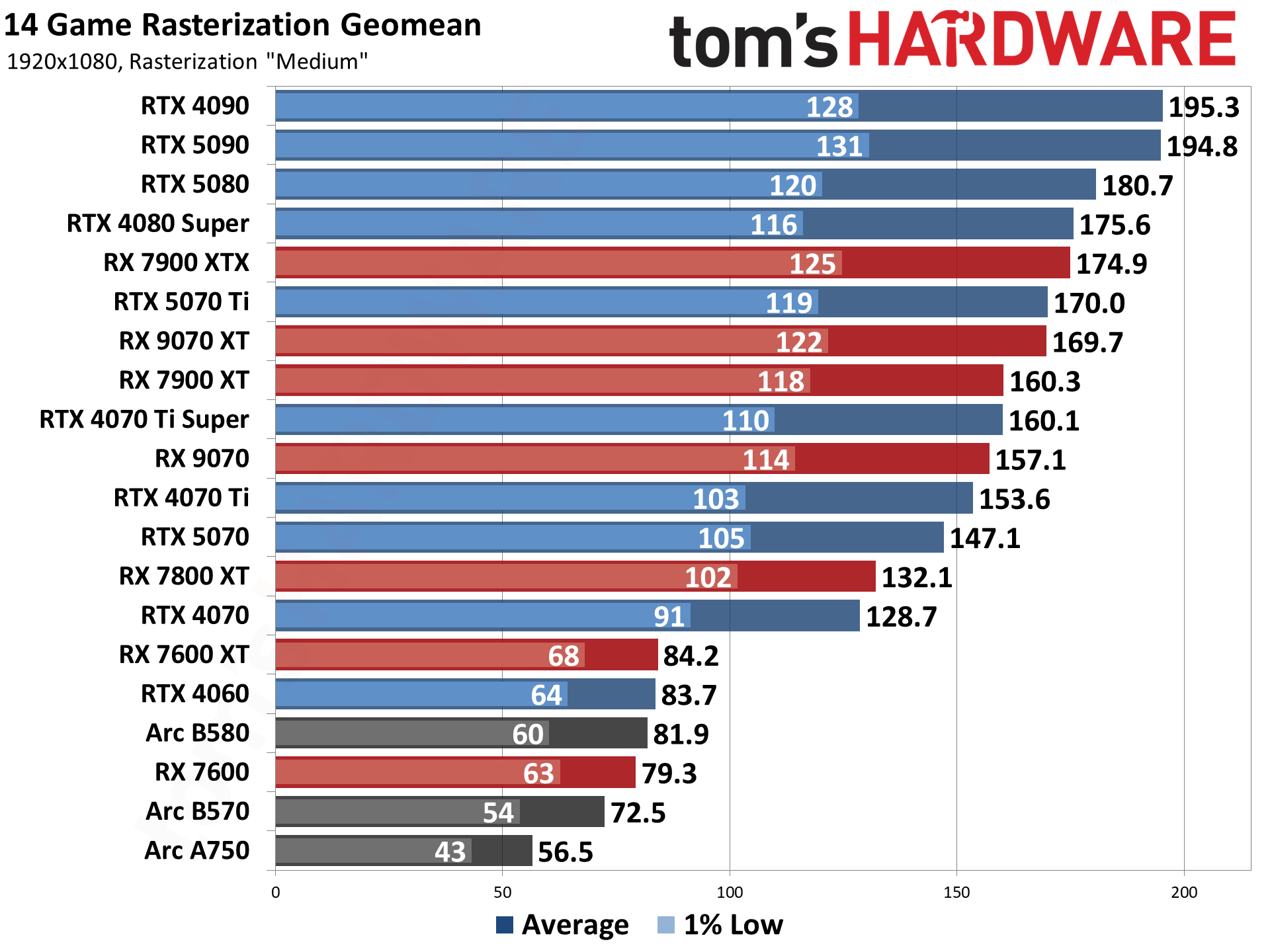
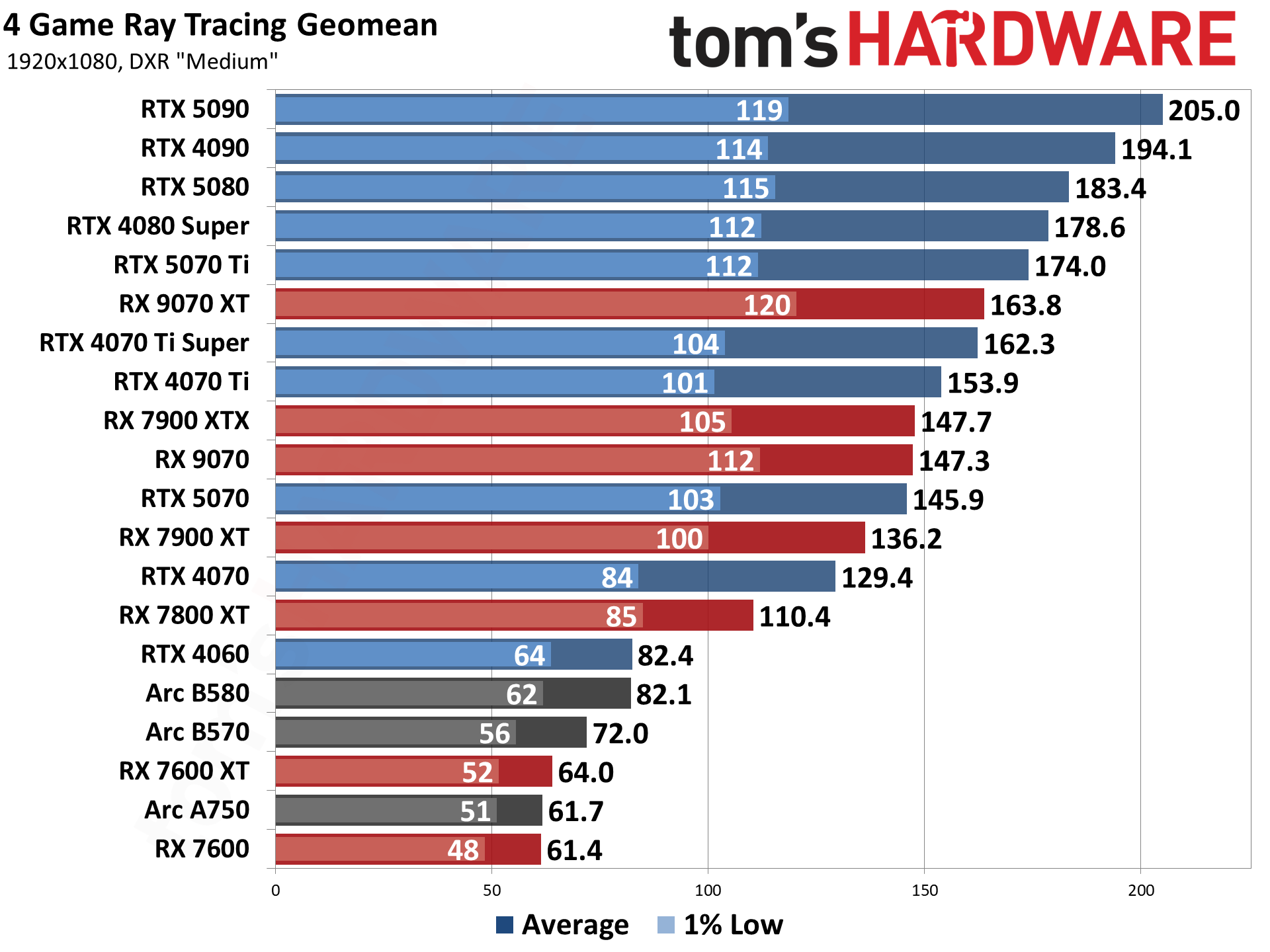
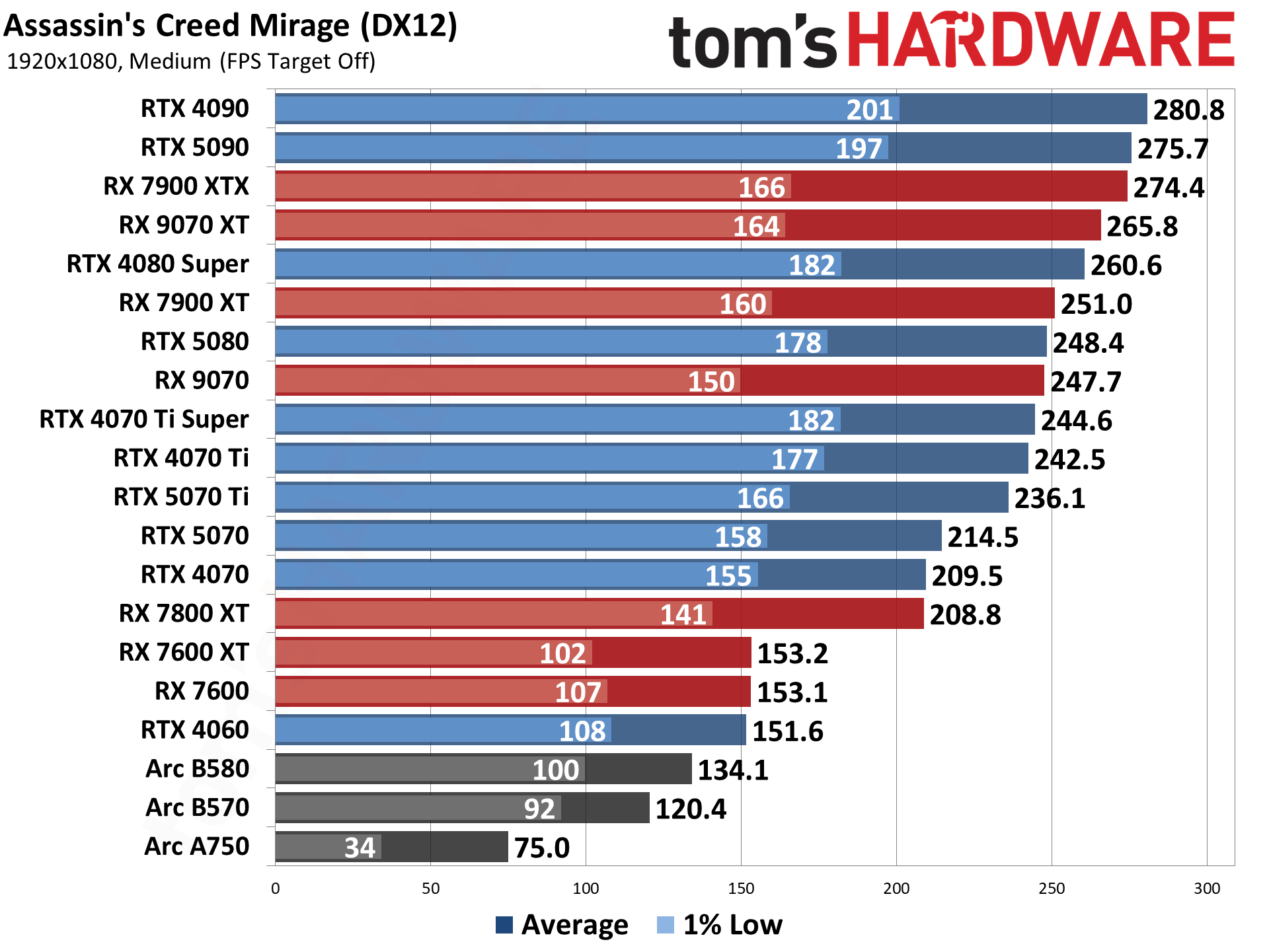

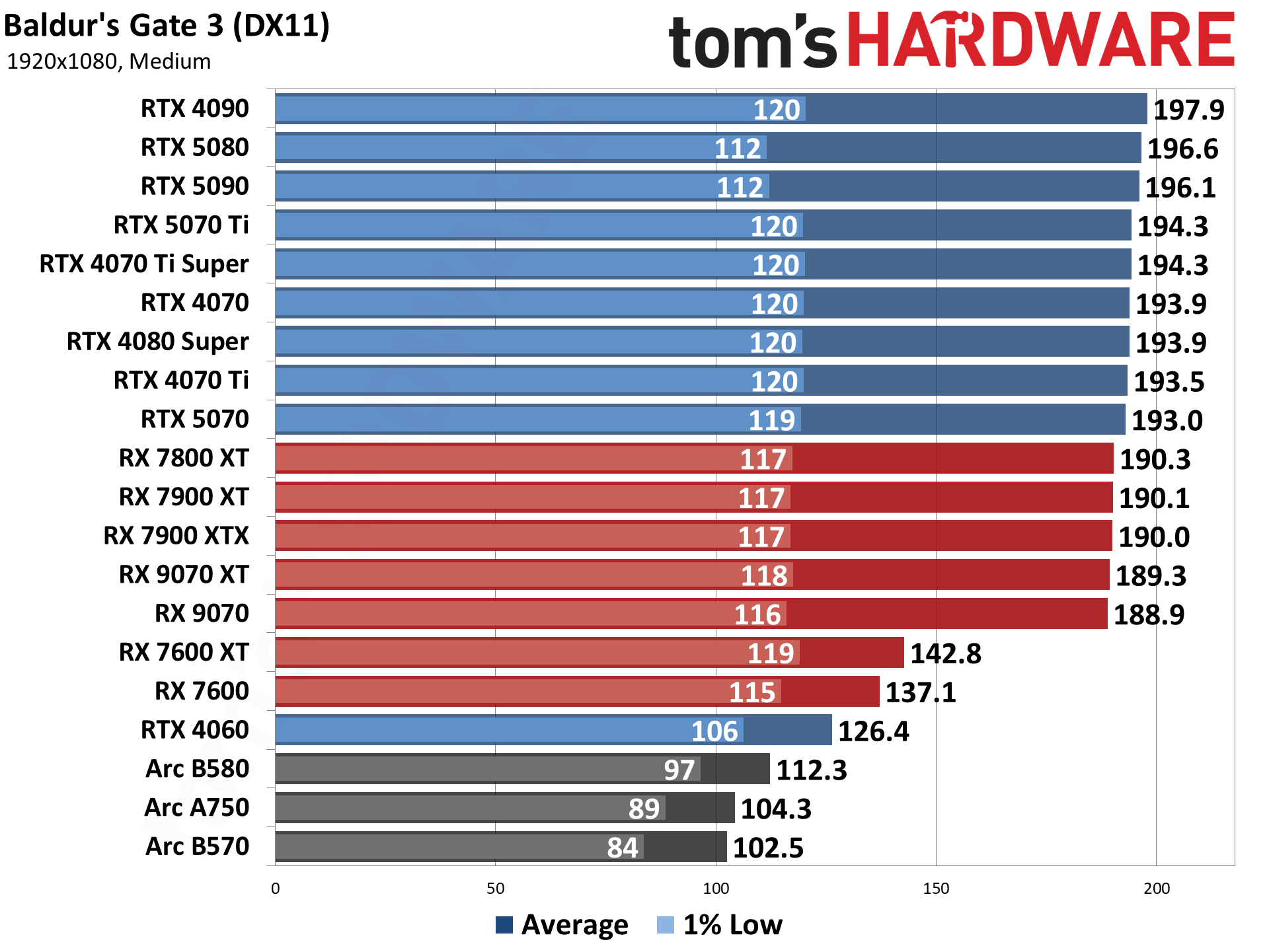



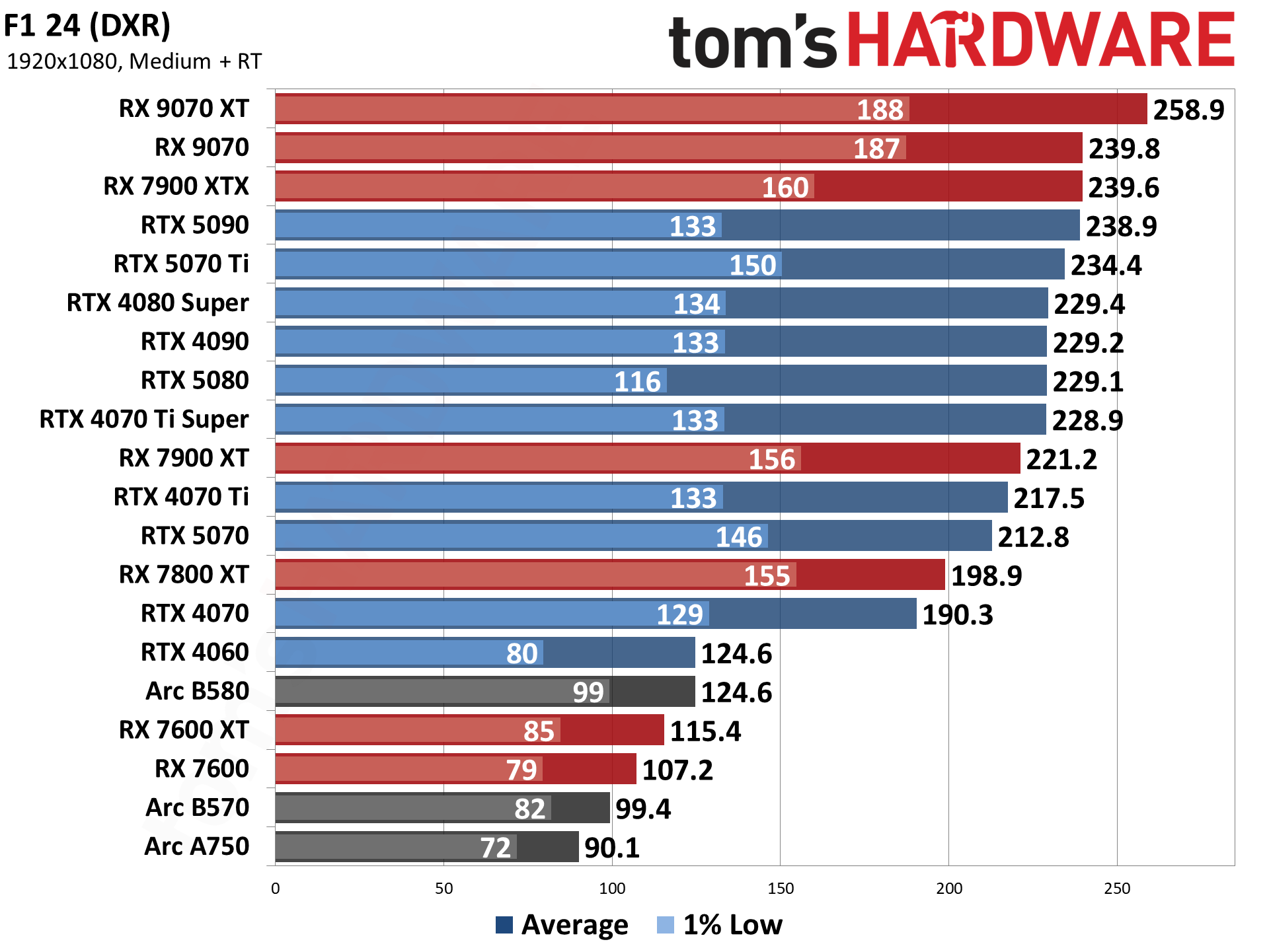
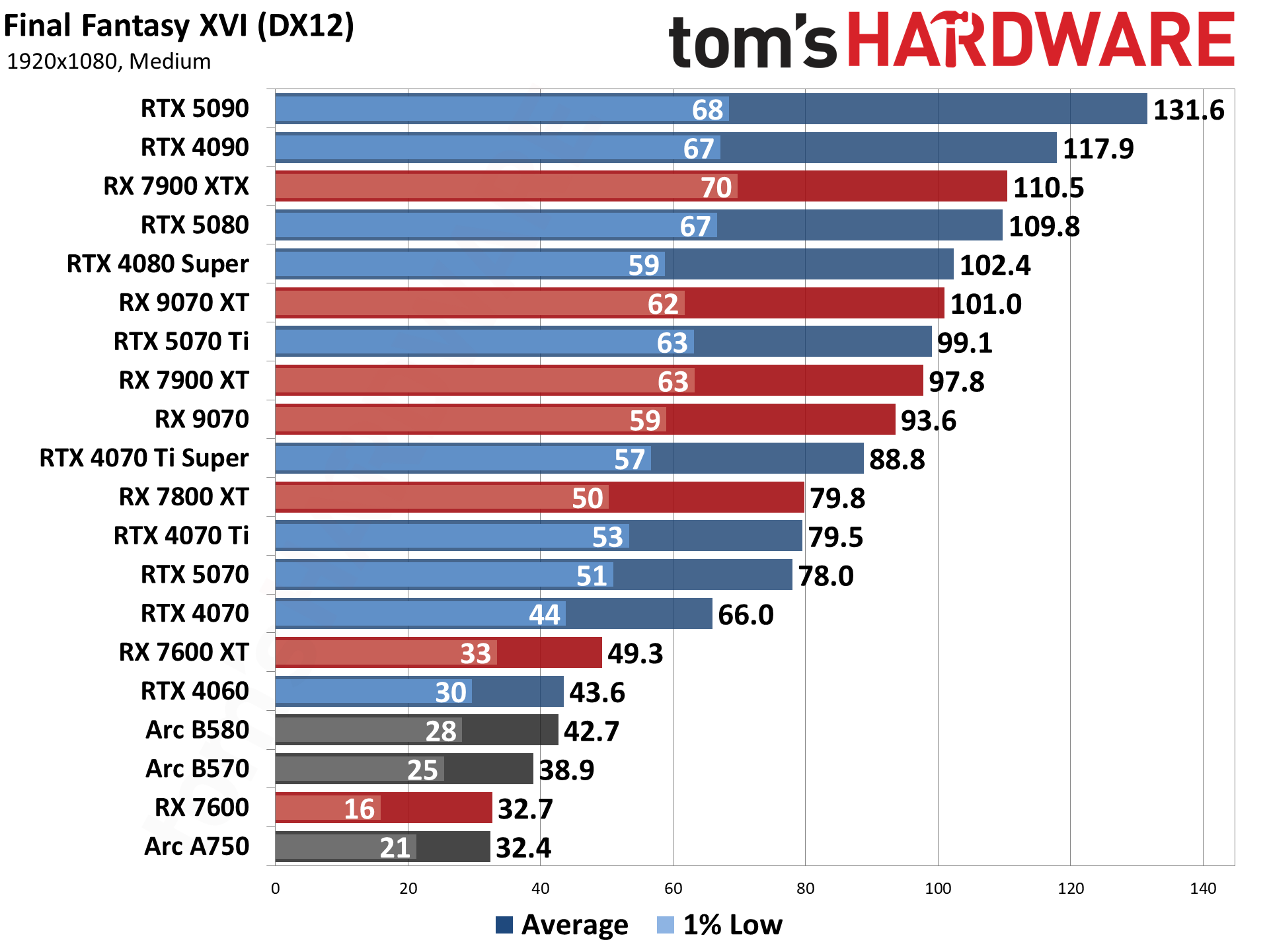
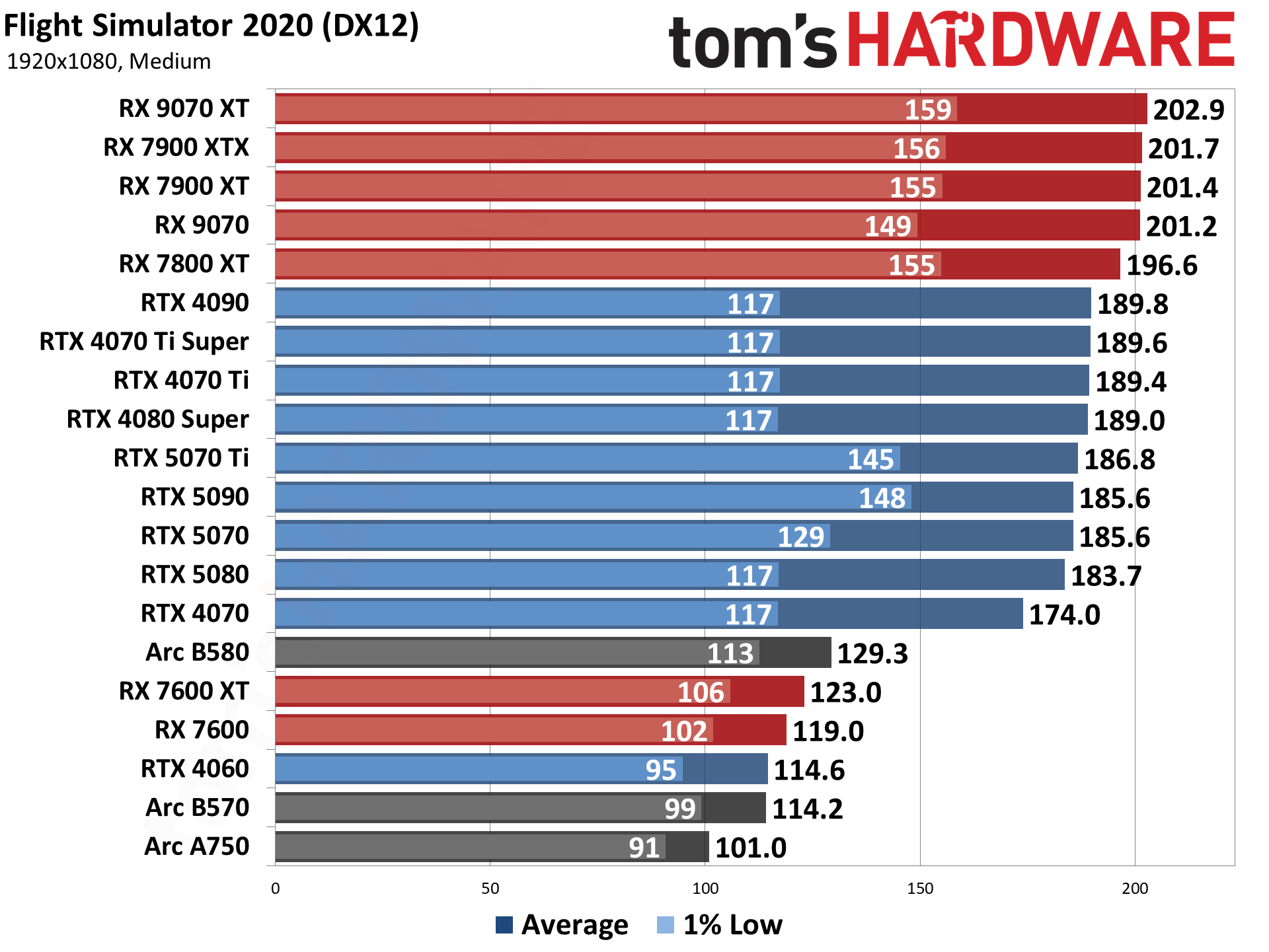
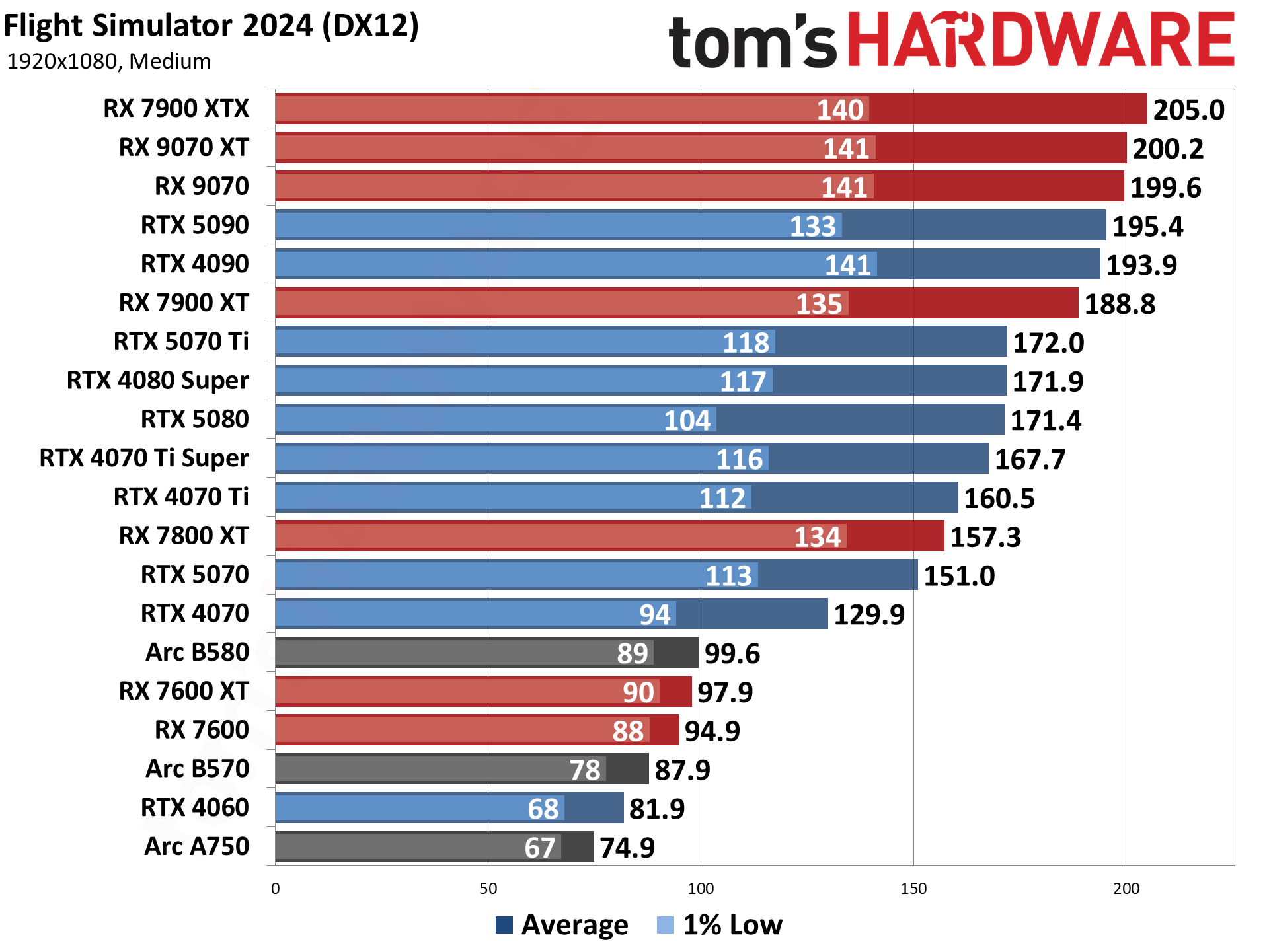


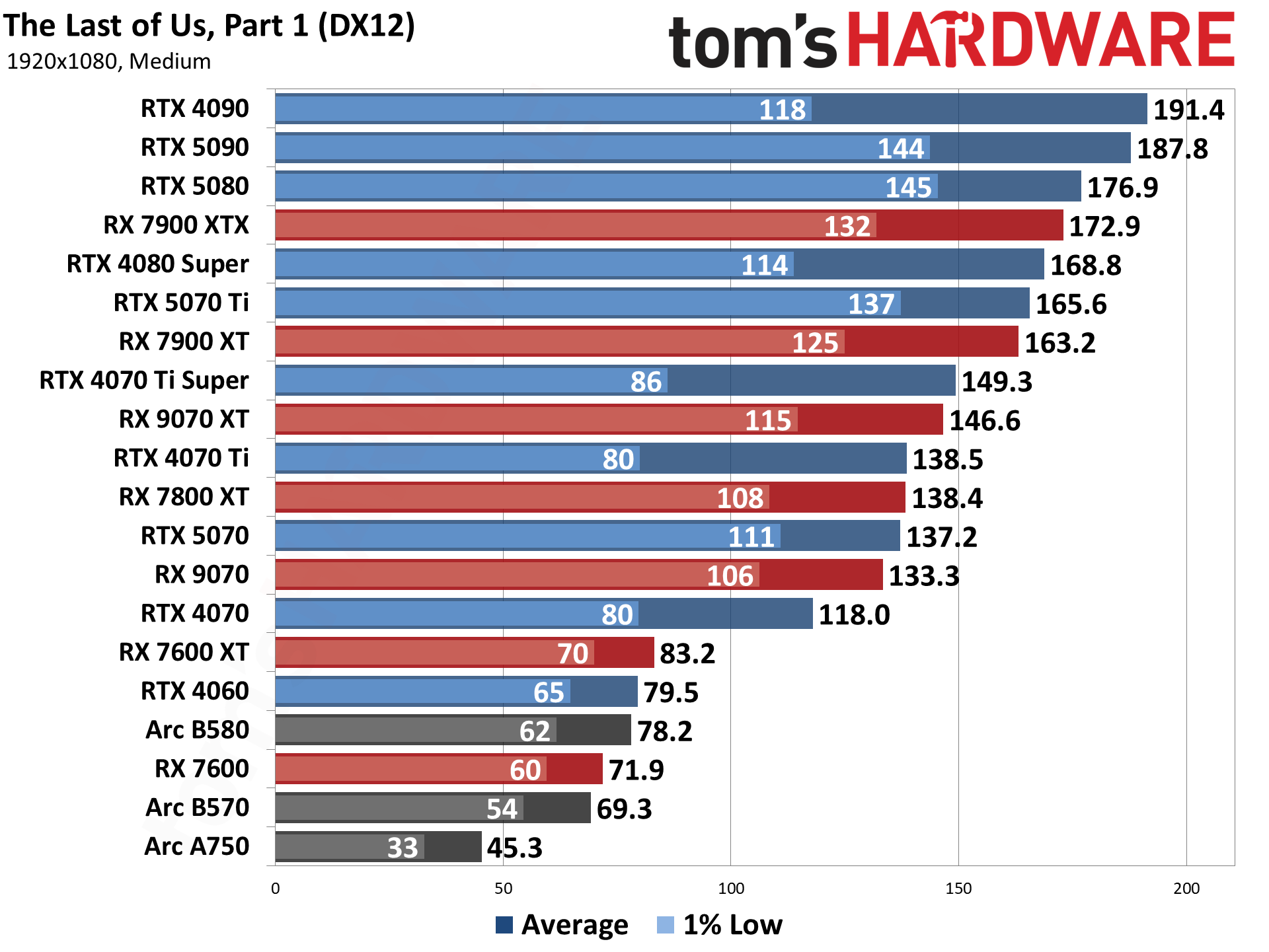
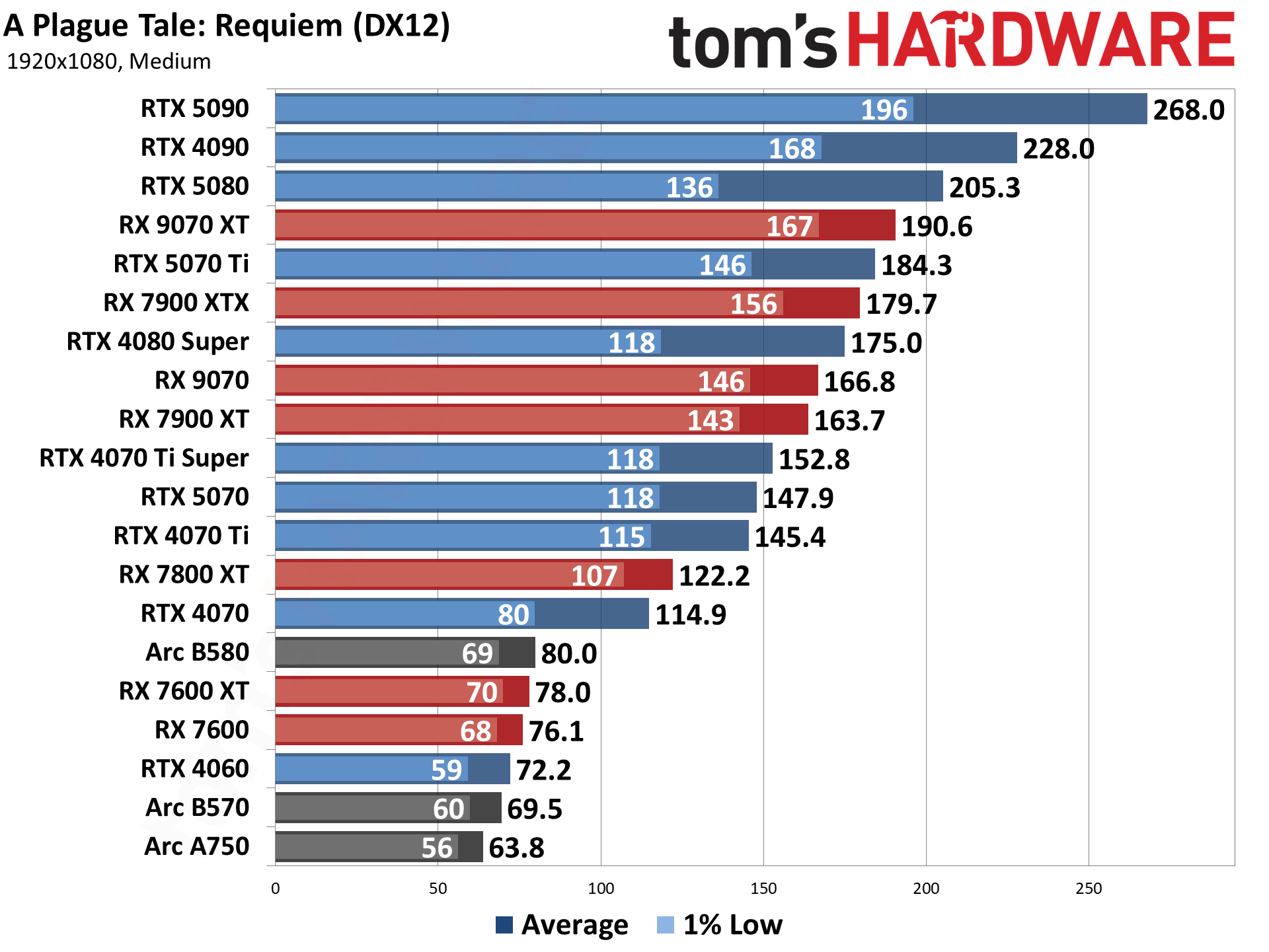
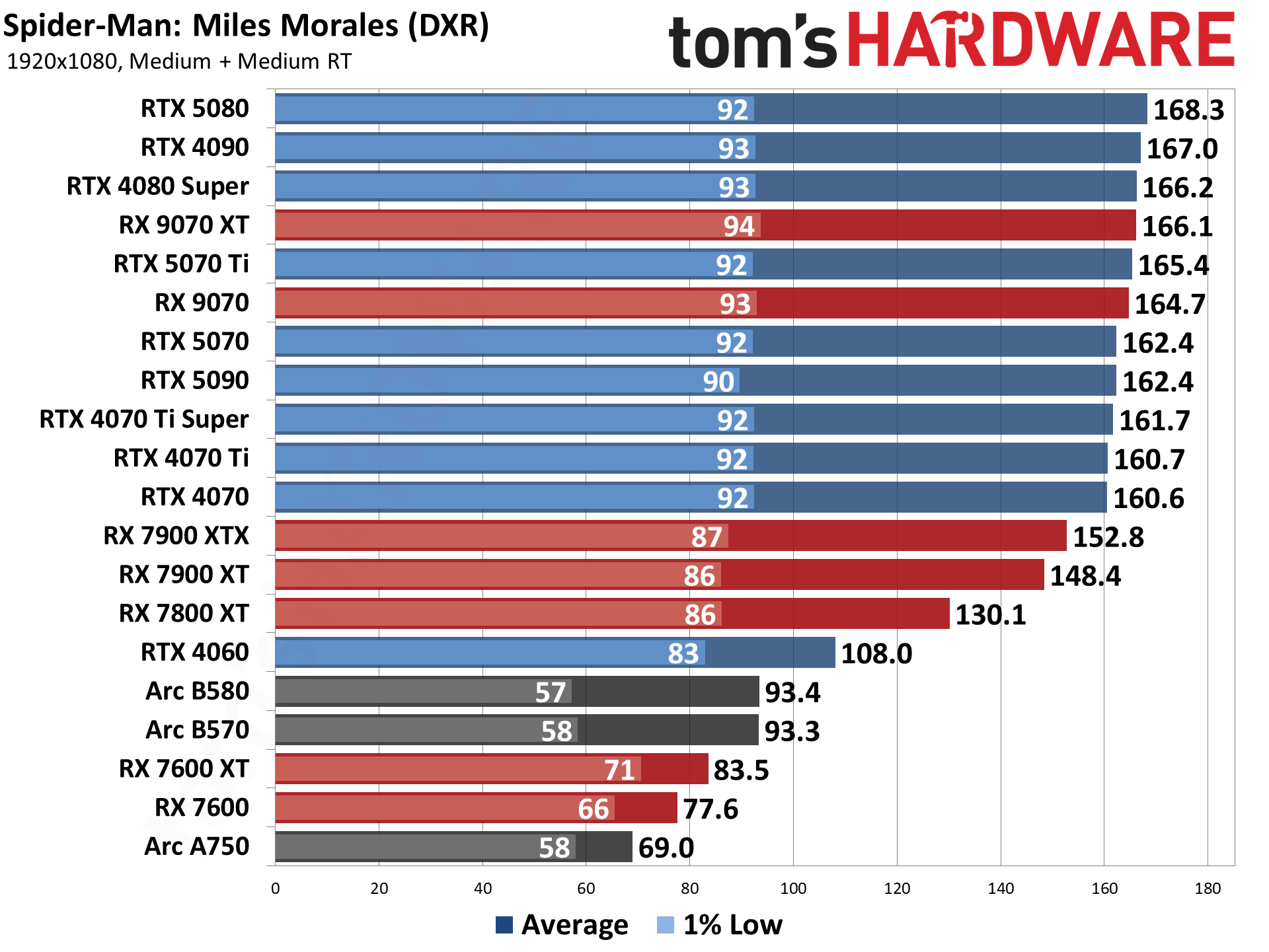
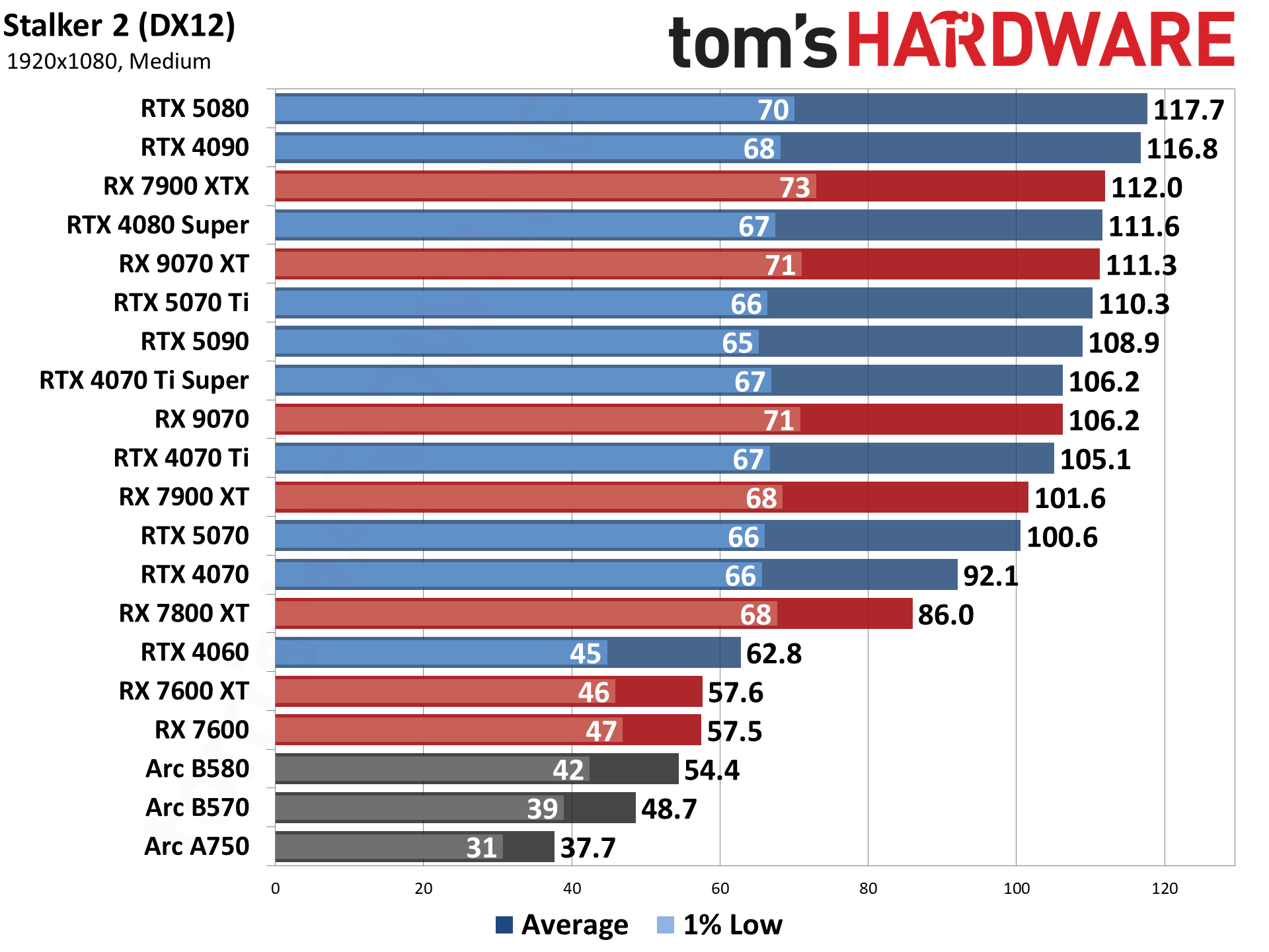
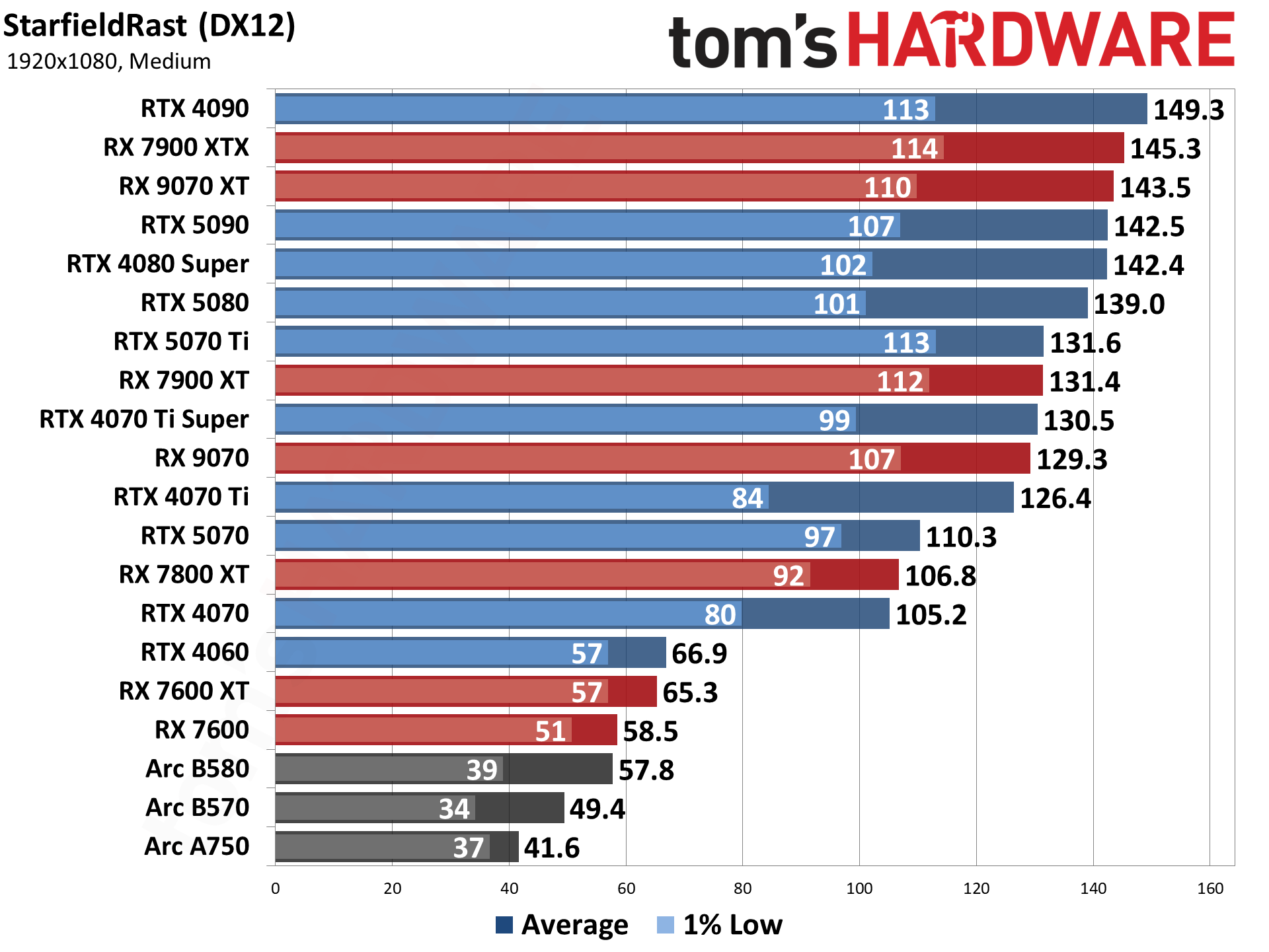
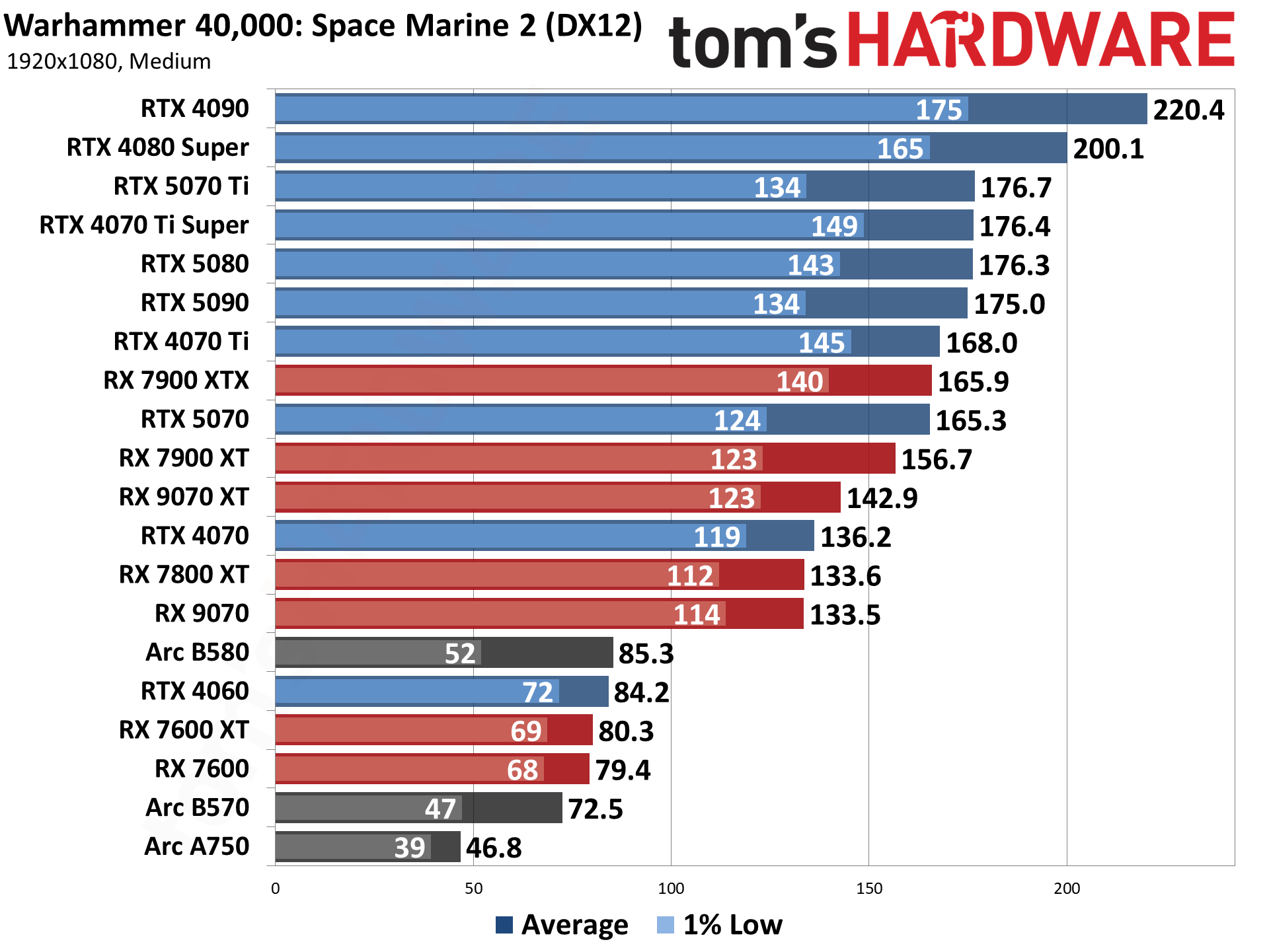
Best Graphics Cards — 1080p Ultra

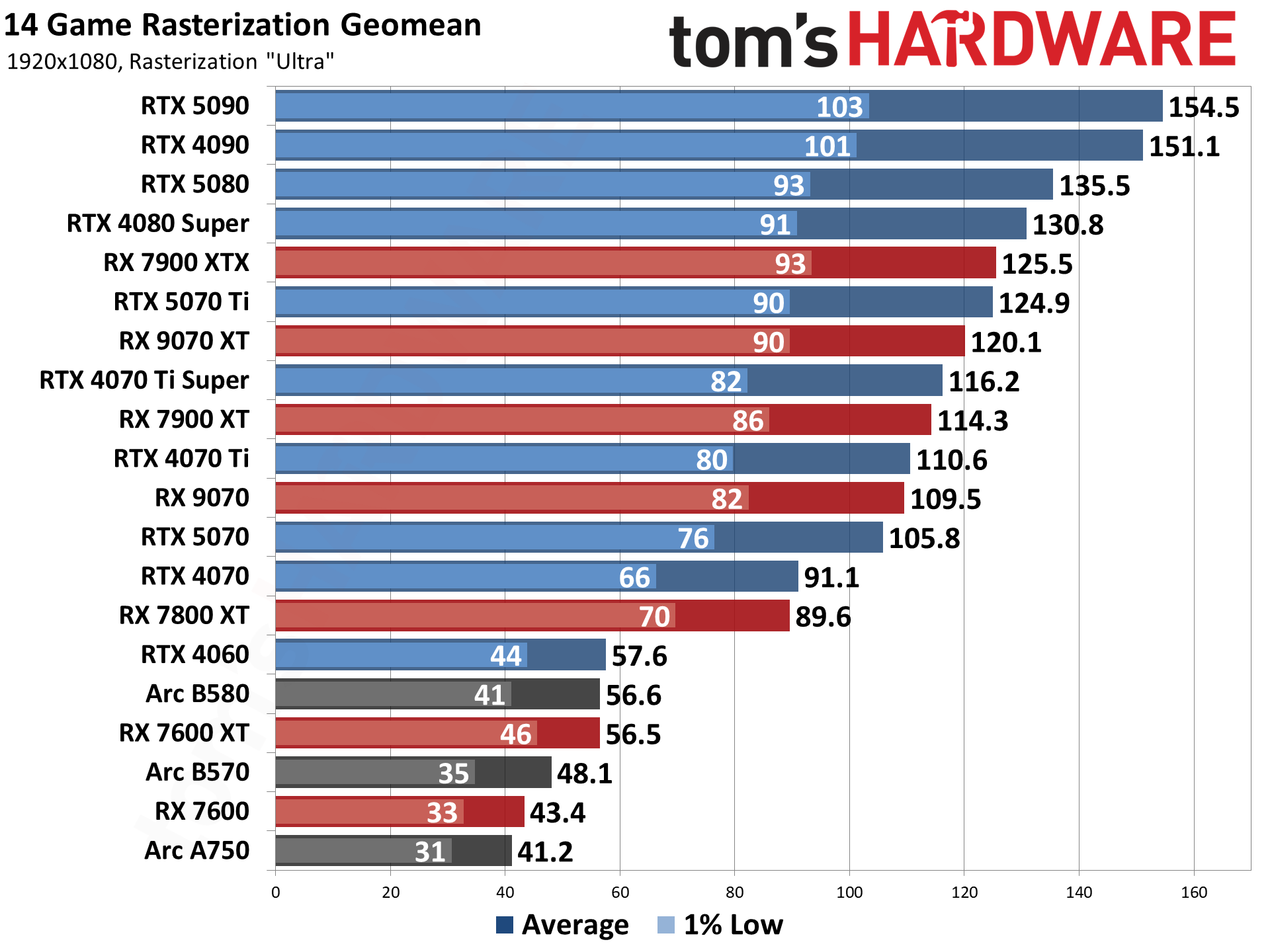


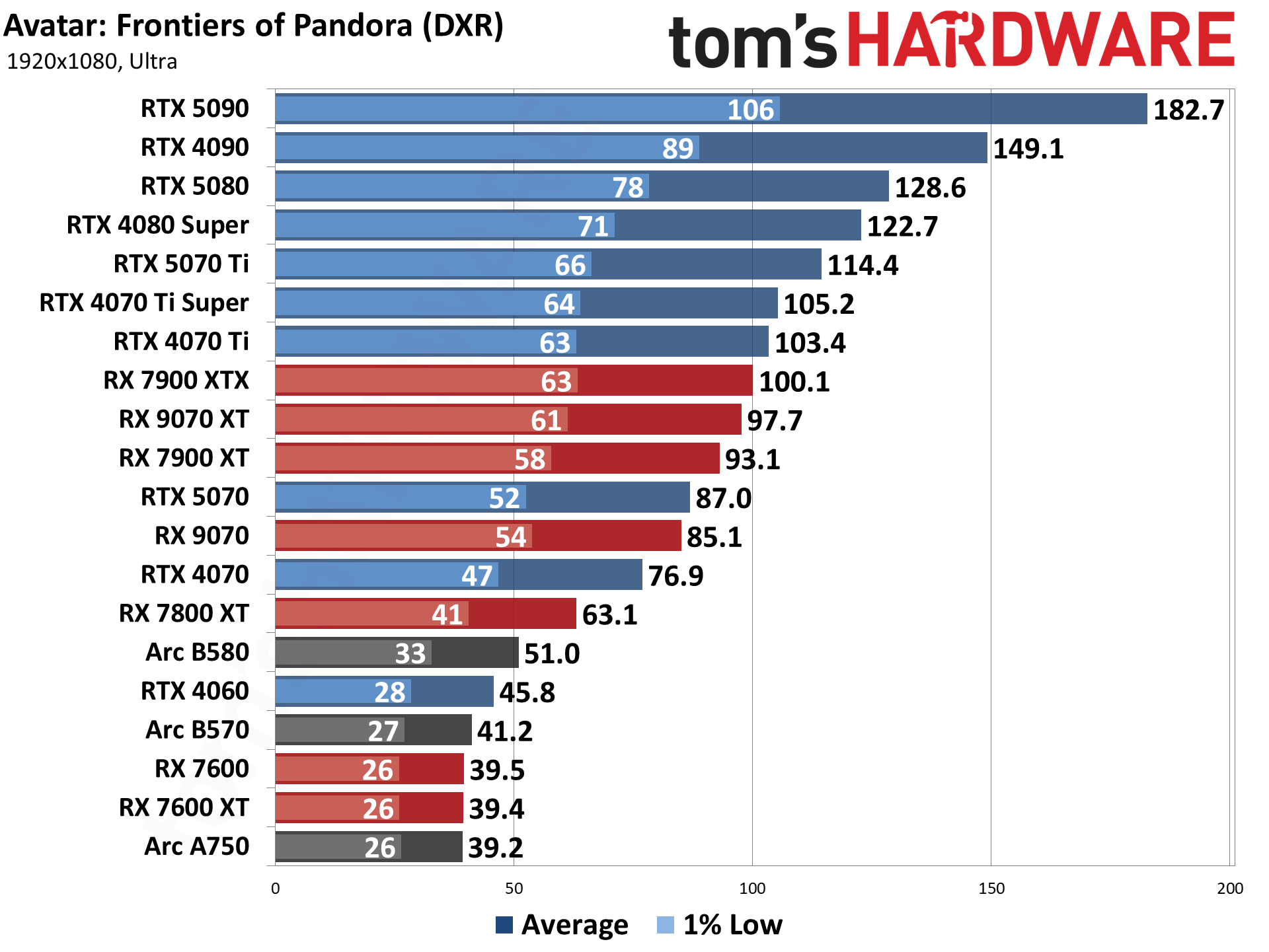


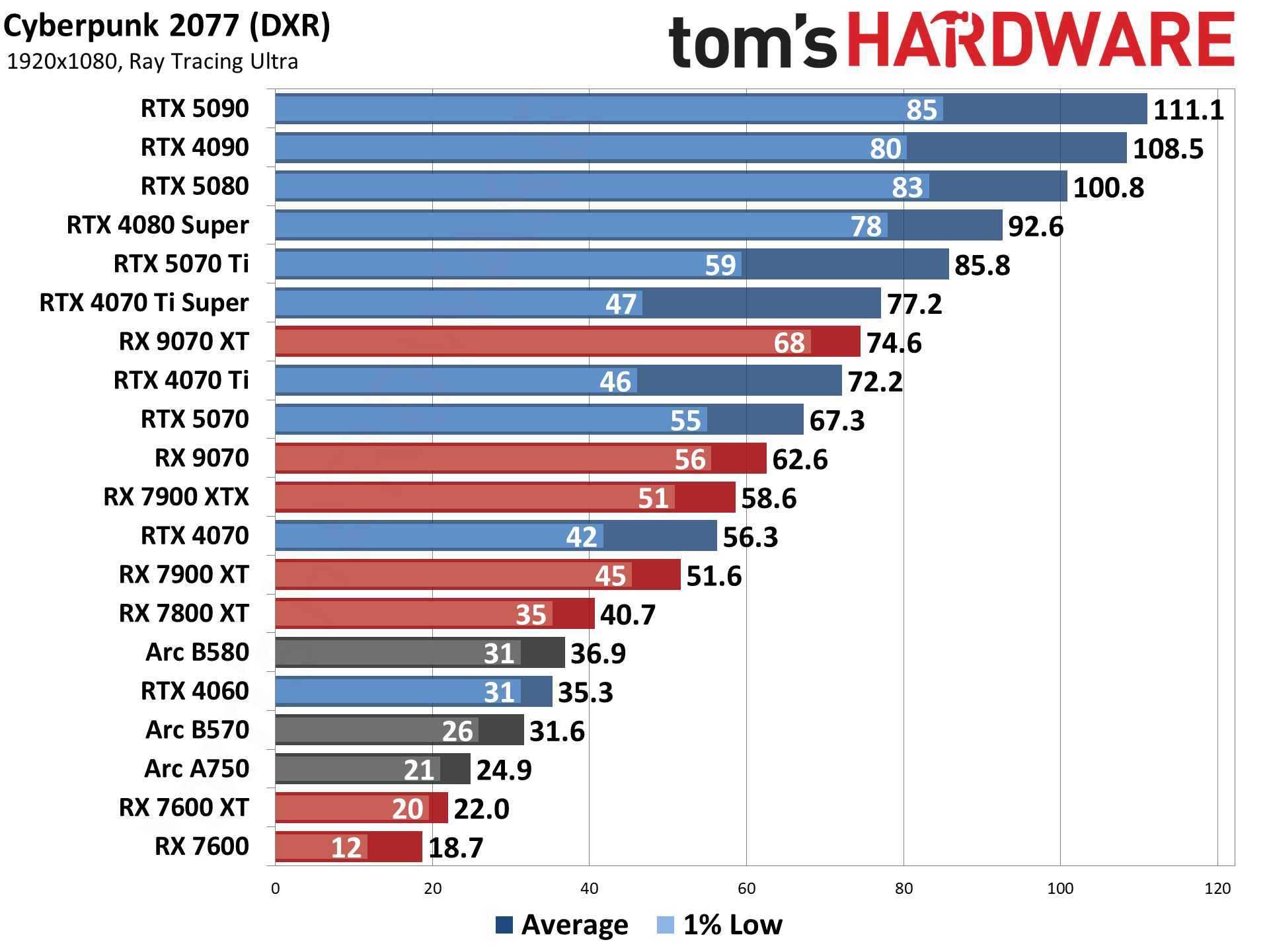


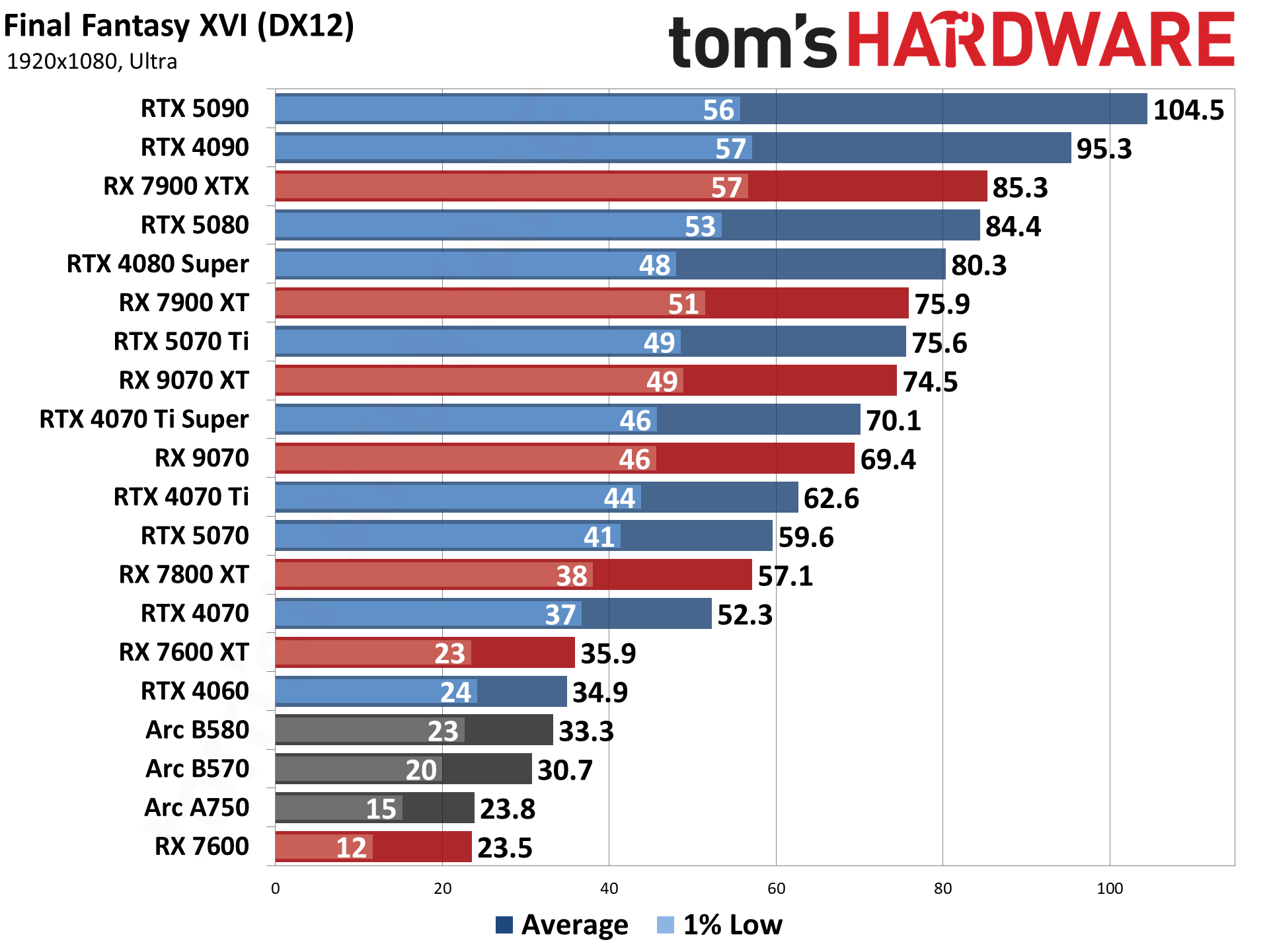
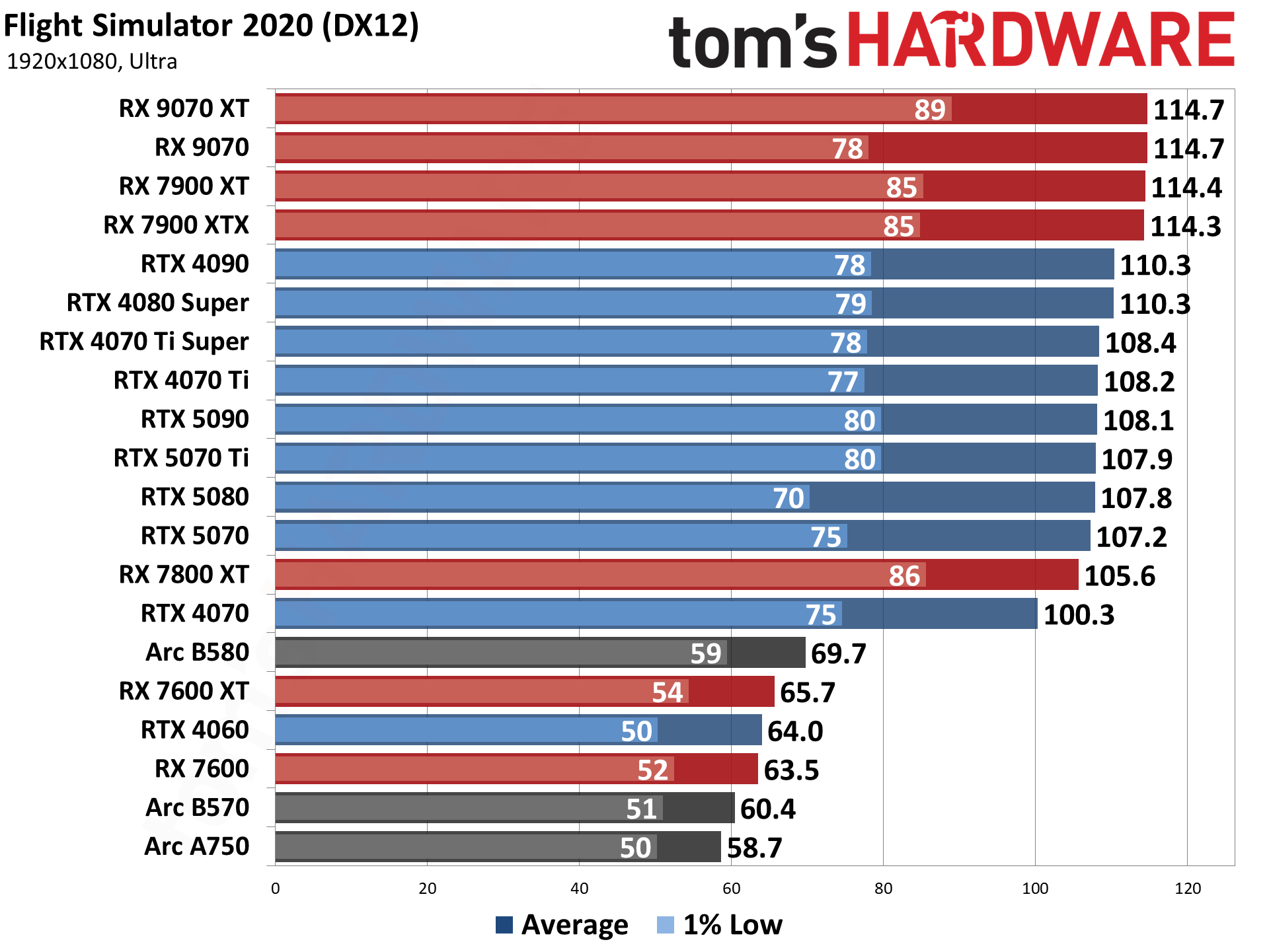

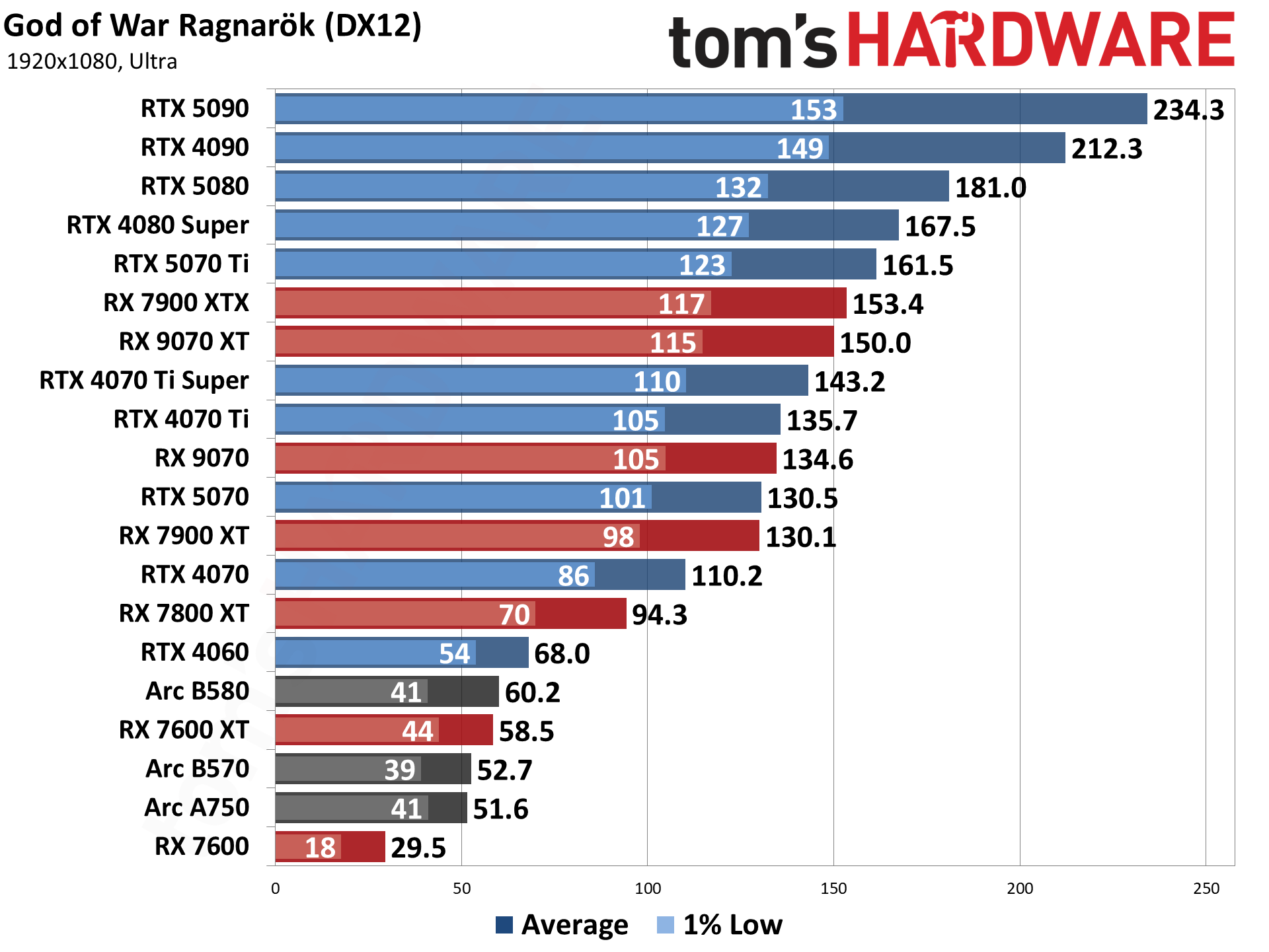


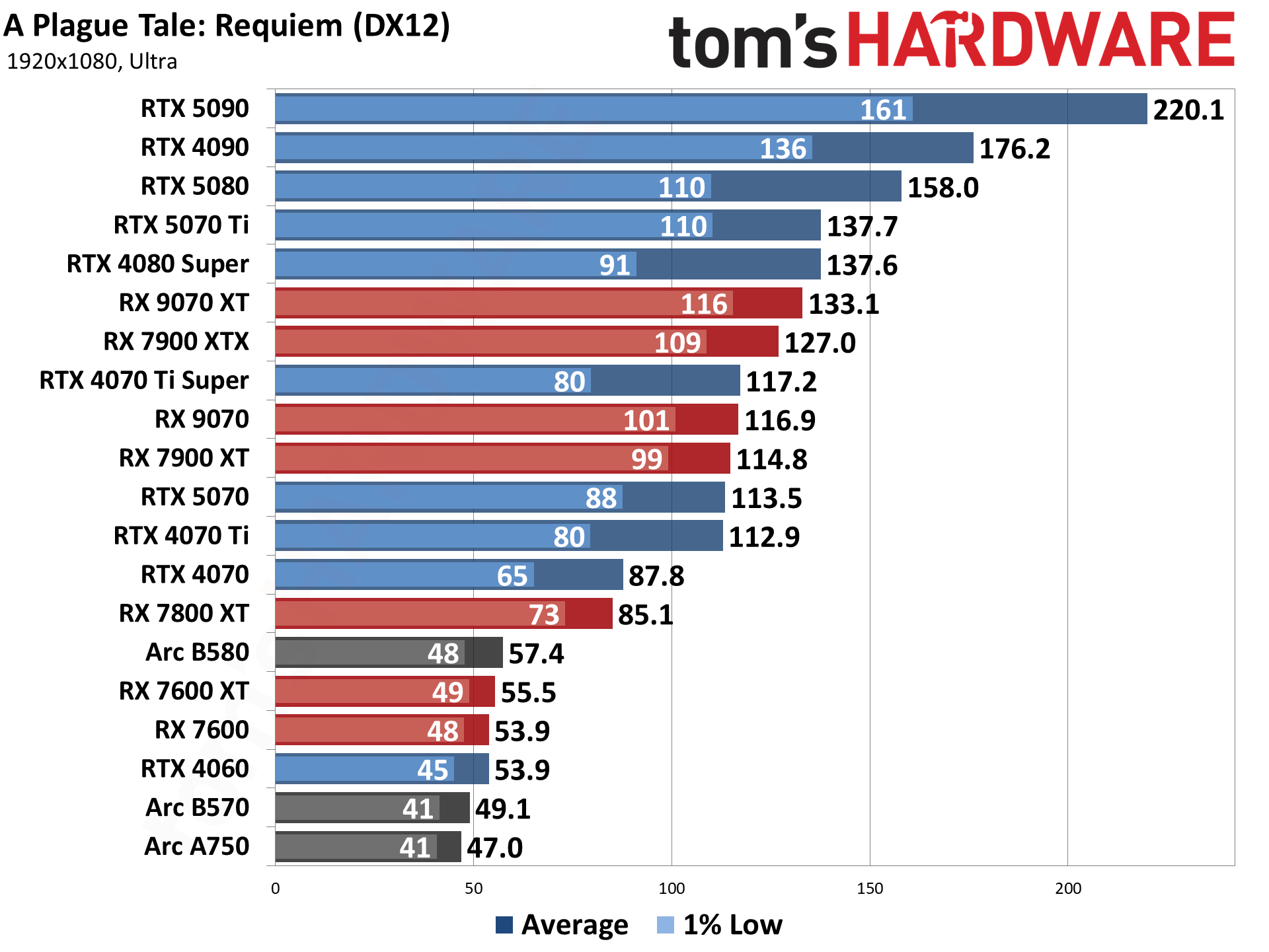
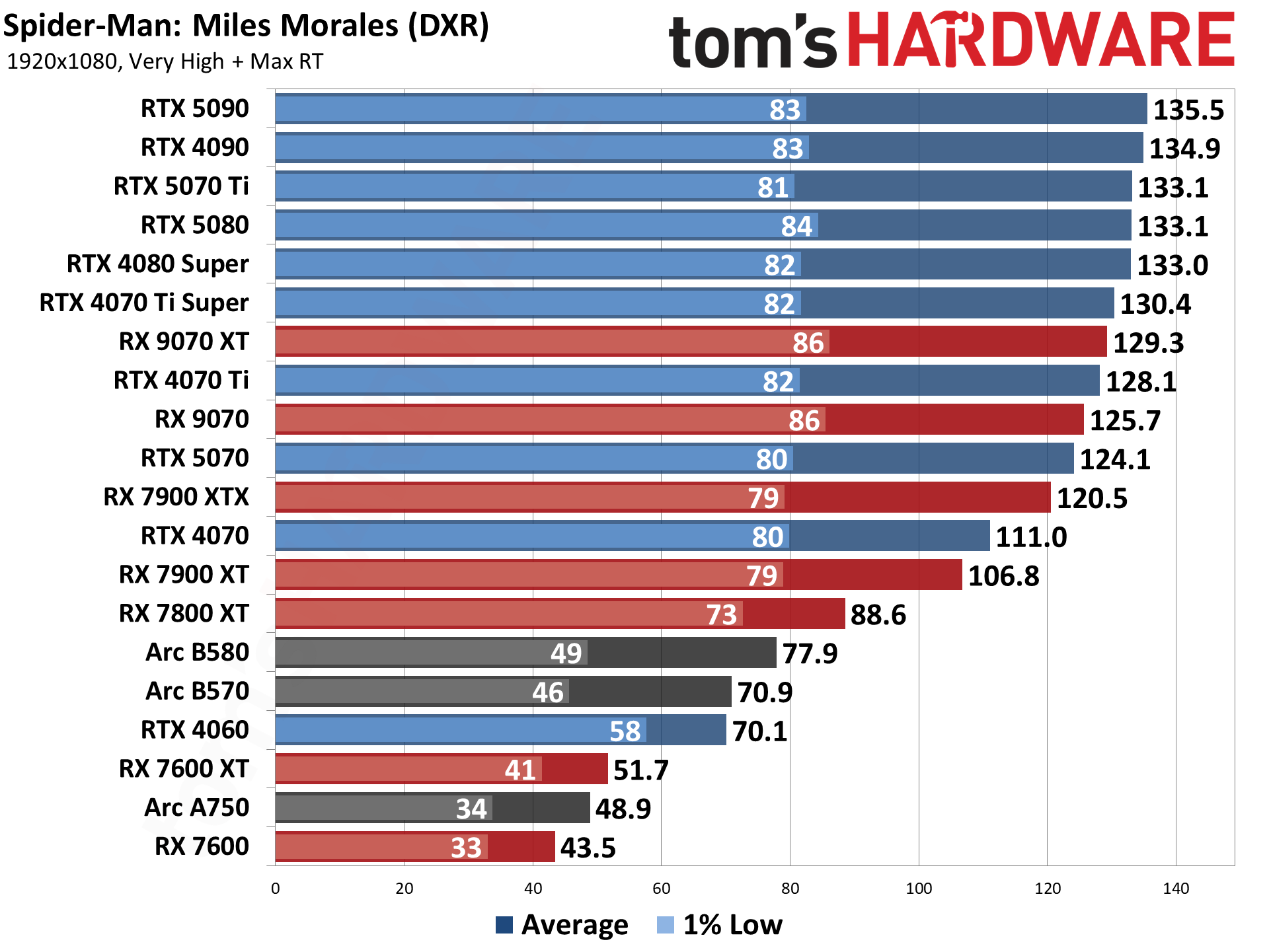
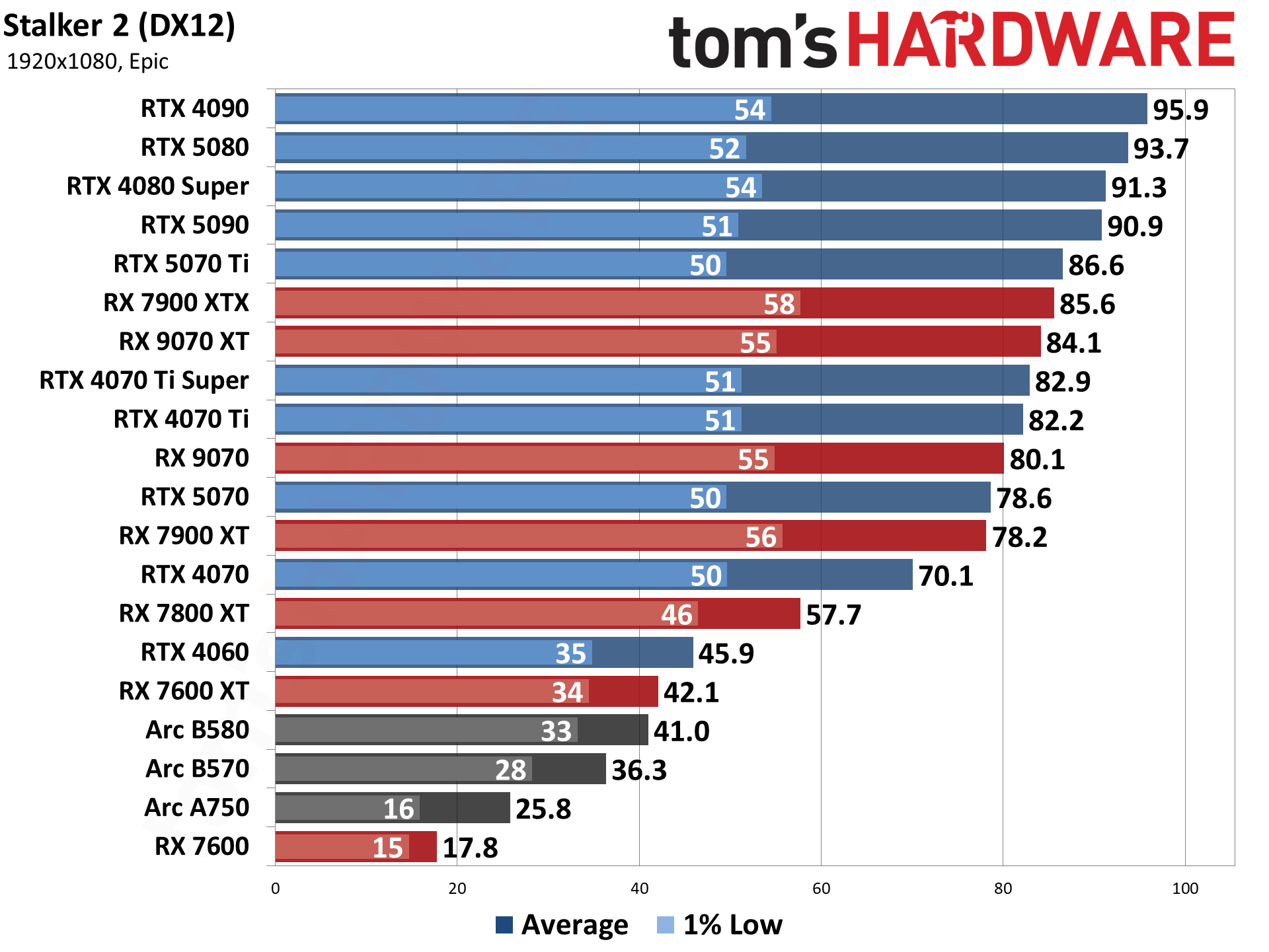
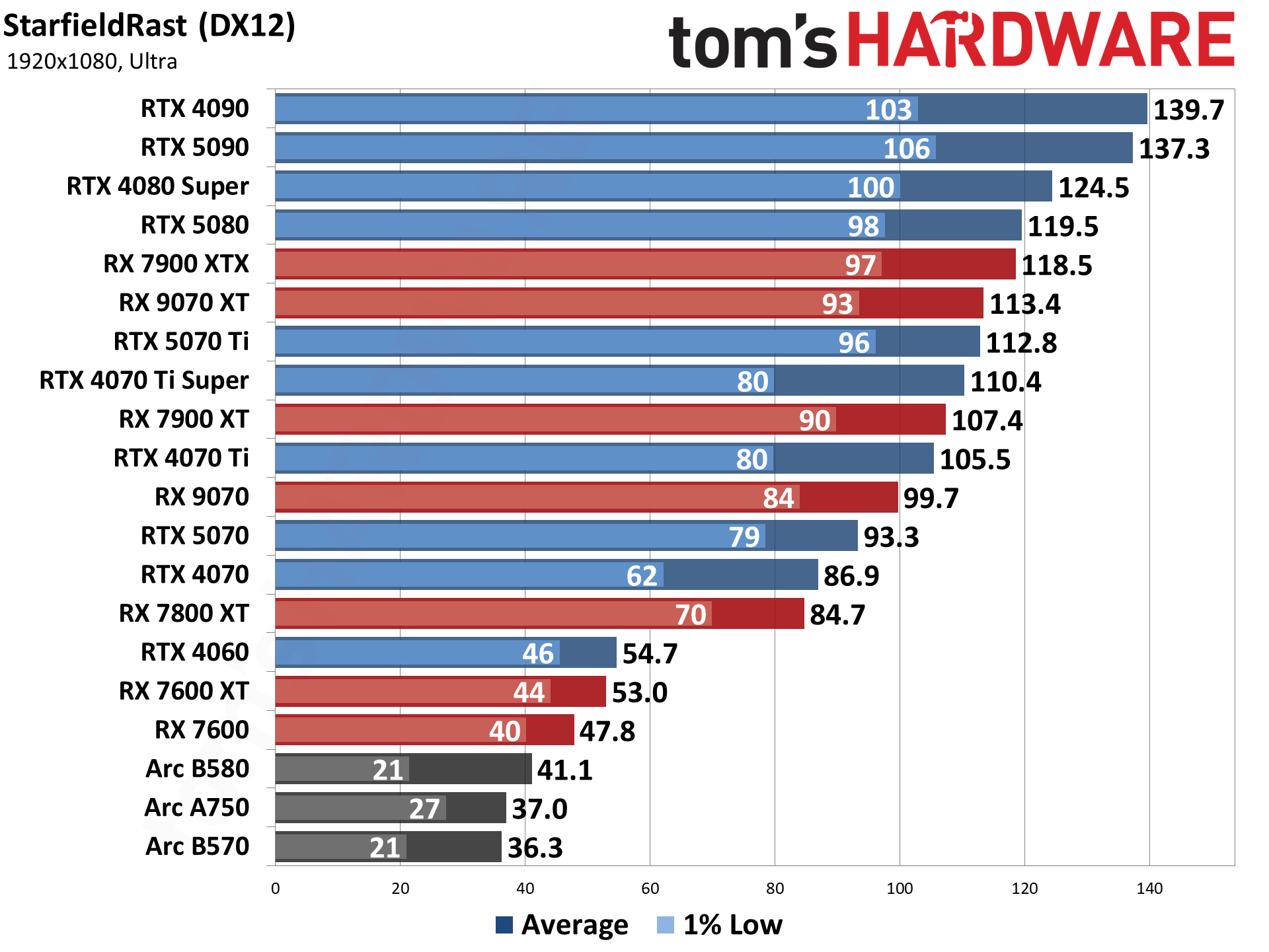
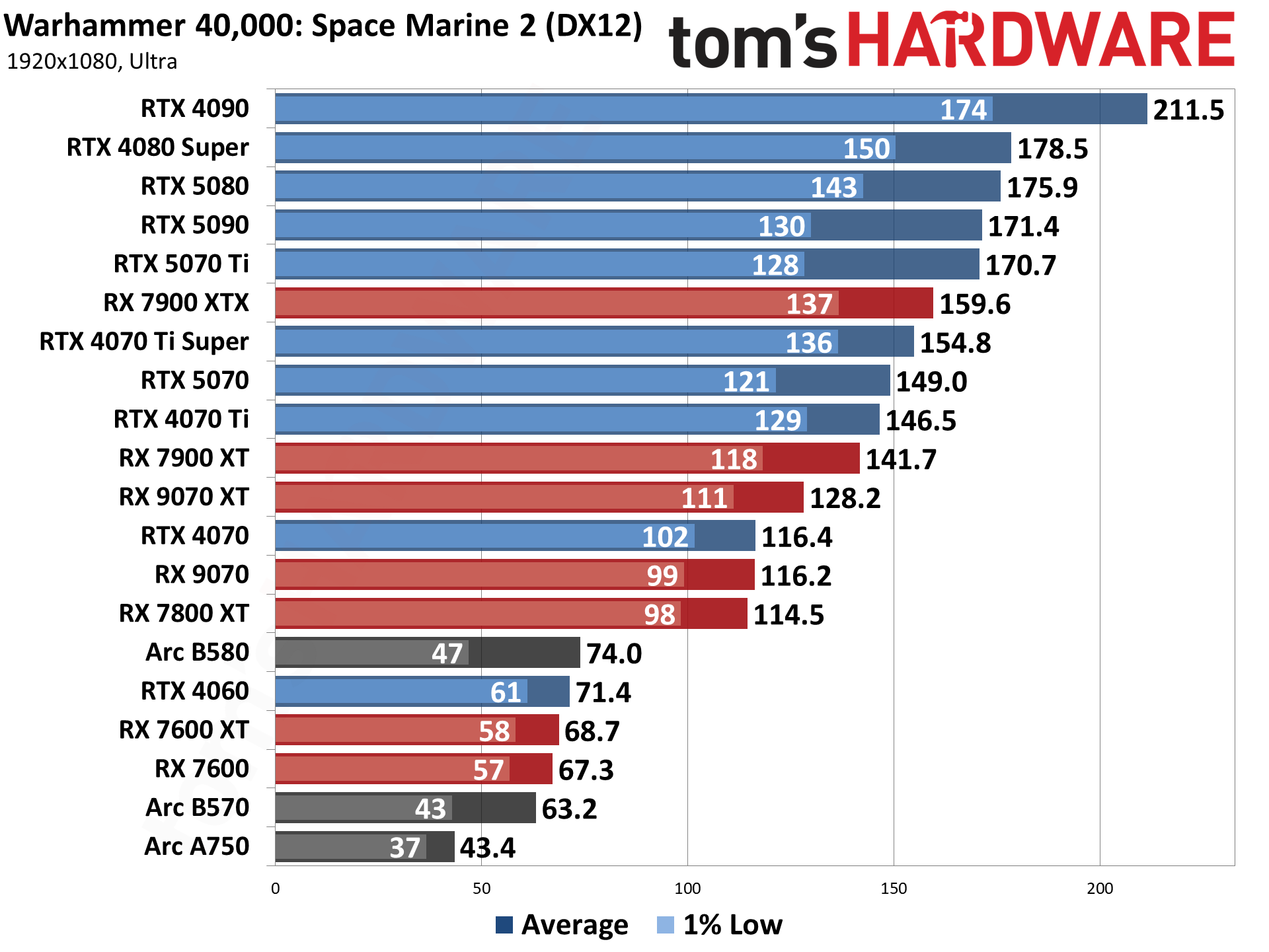
Best Graphics Cards — 1440p Ultra

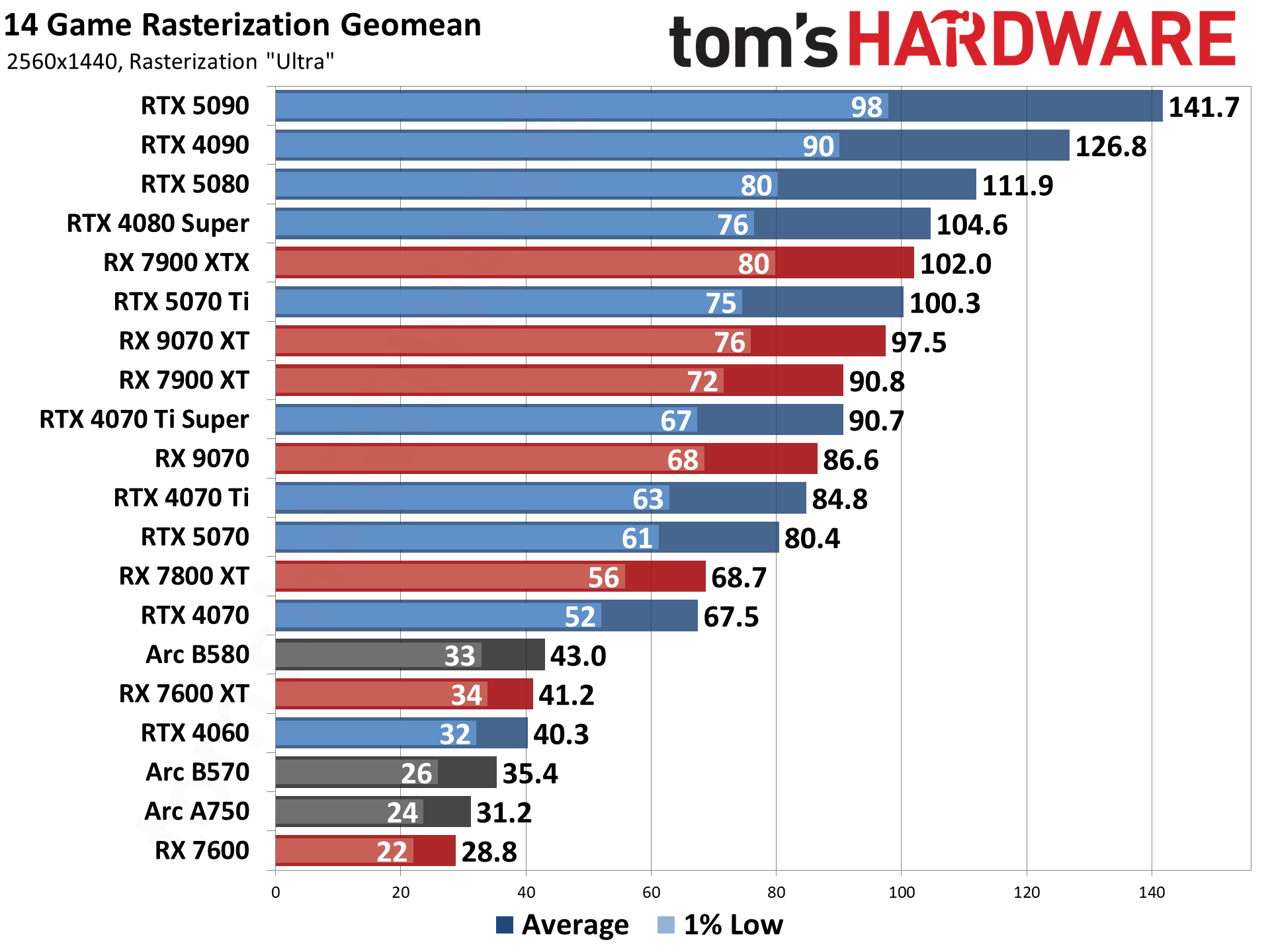
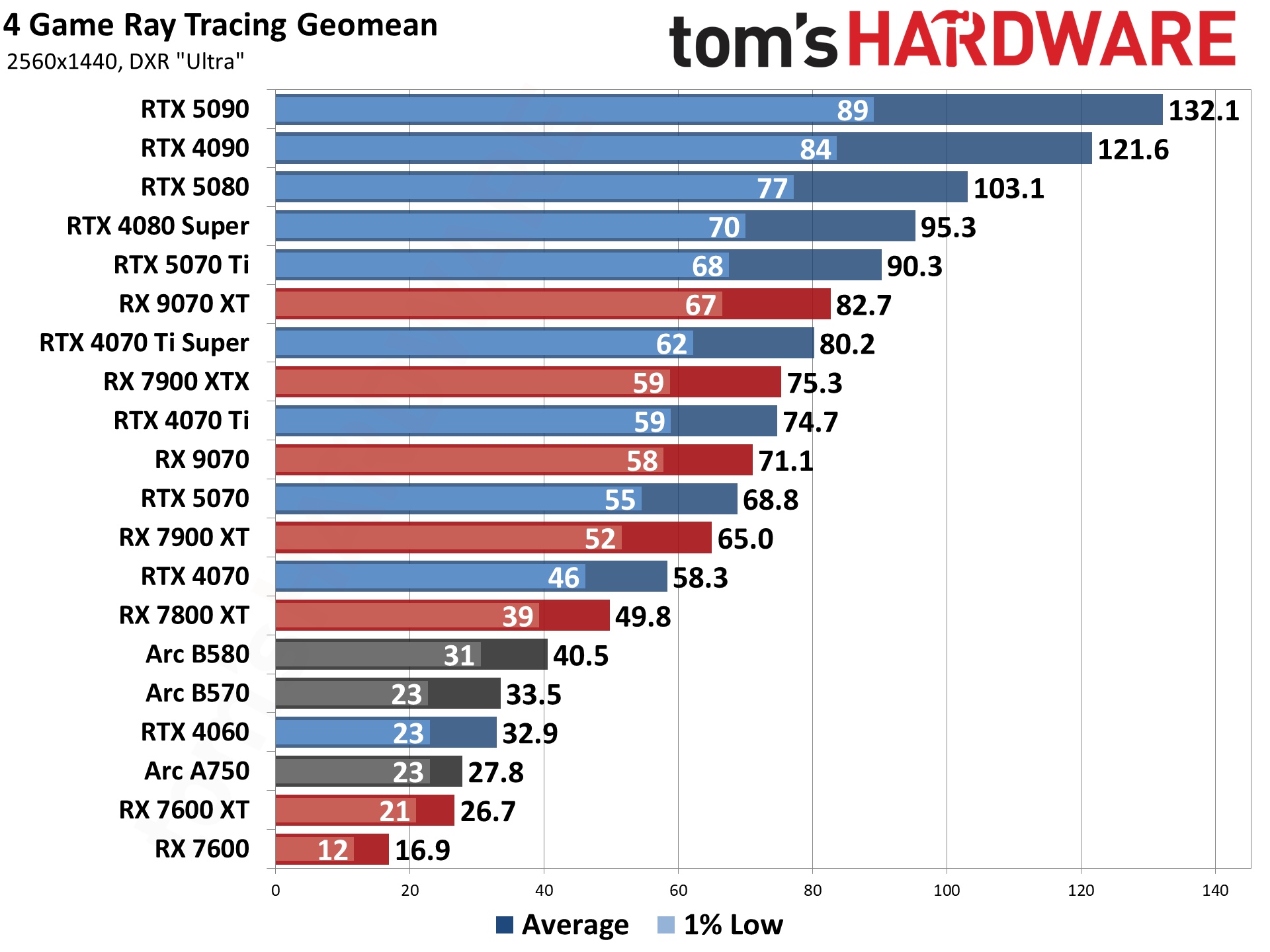
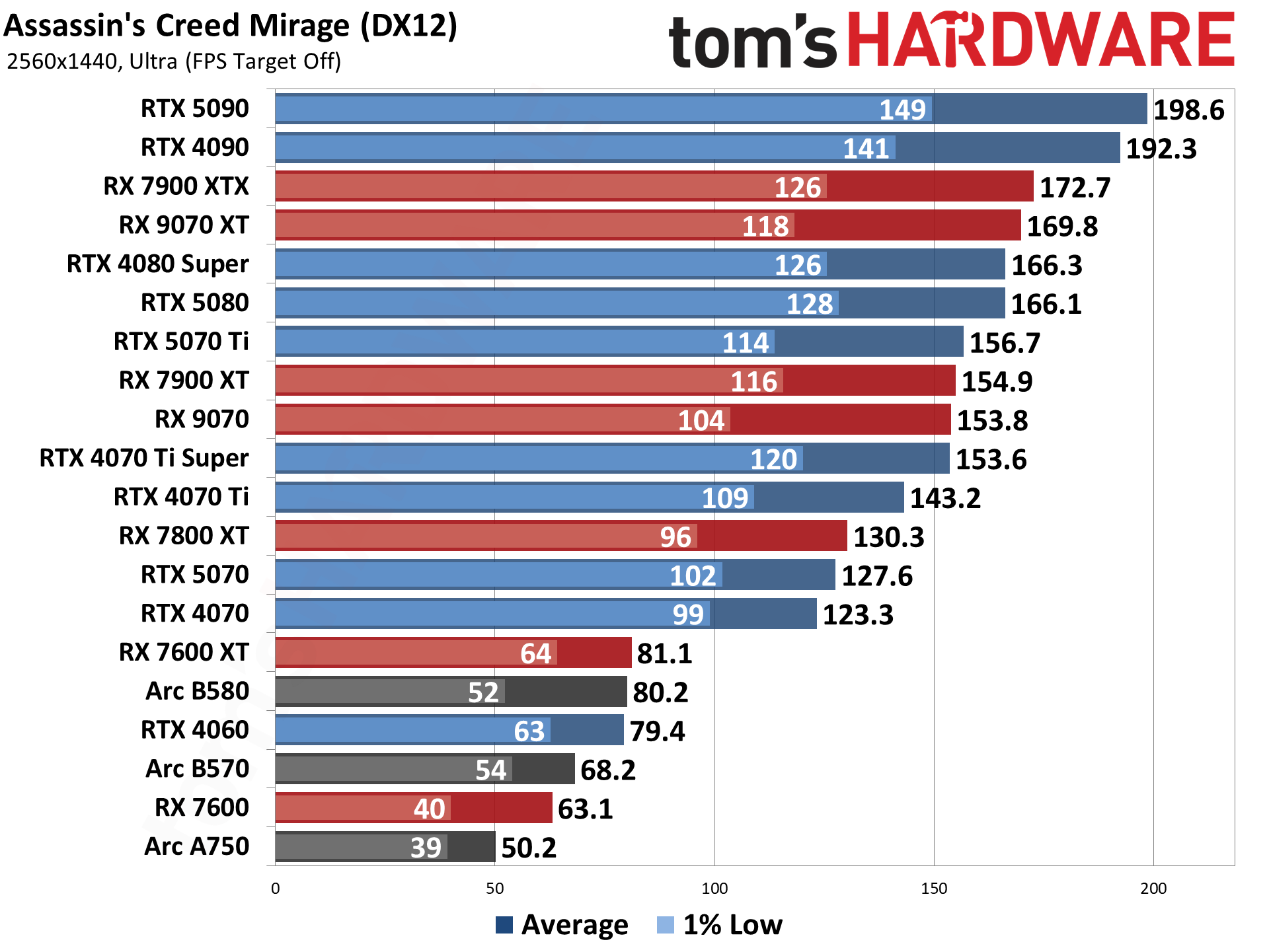
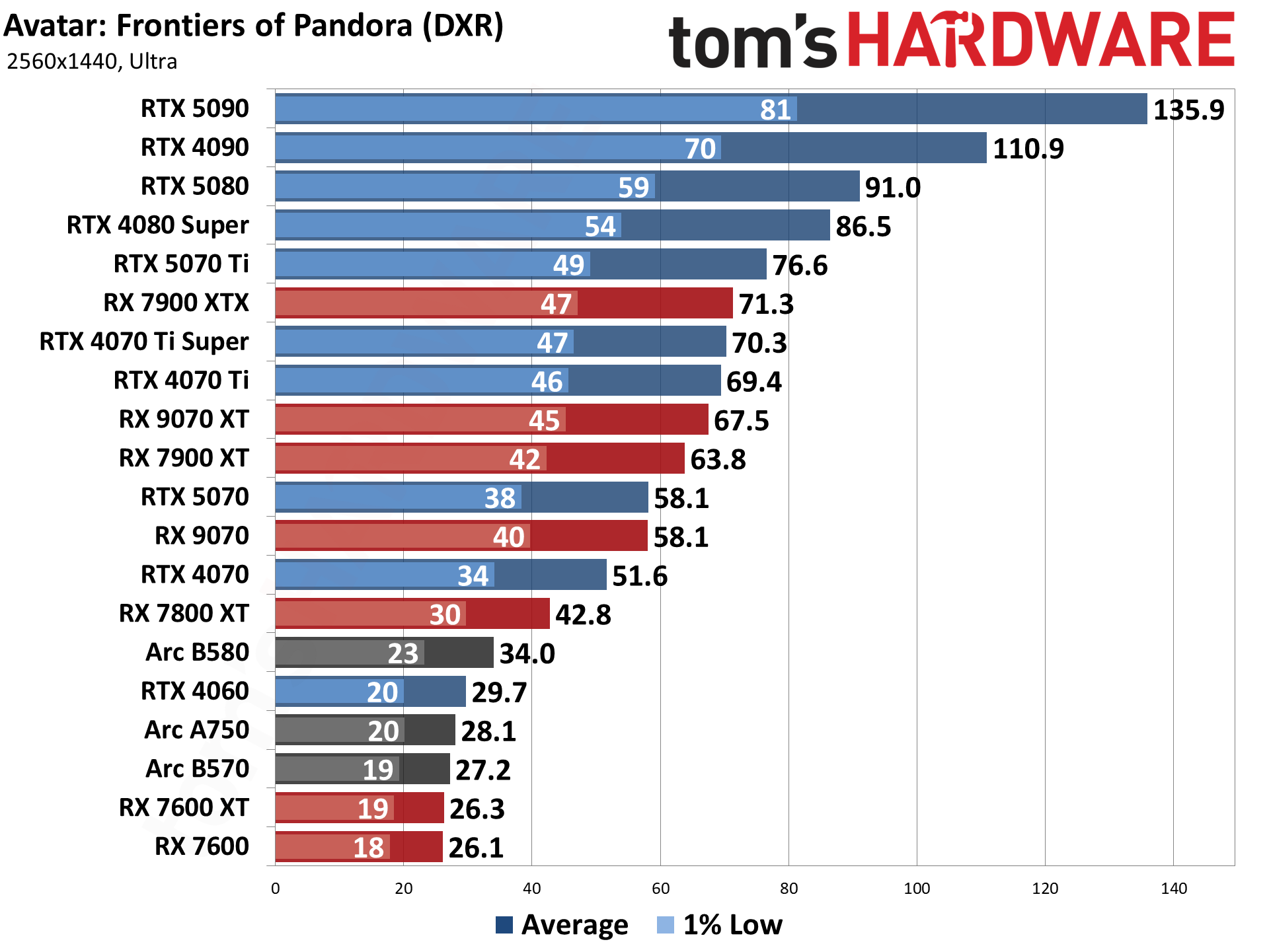


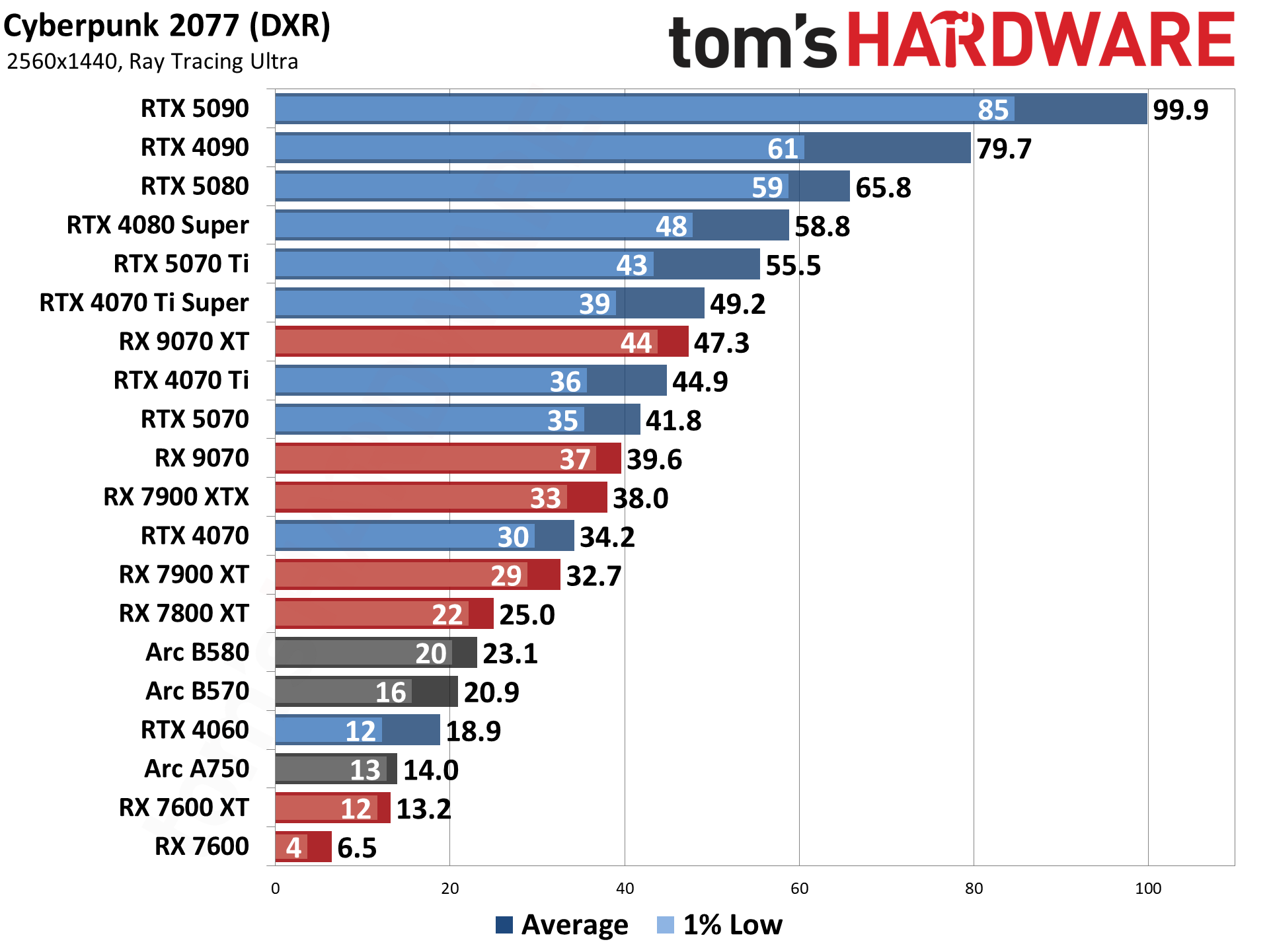
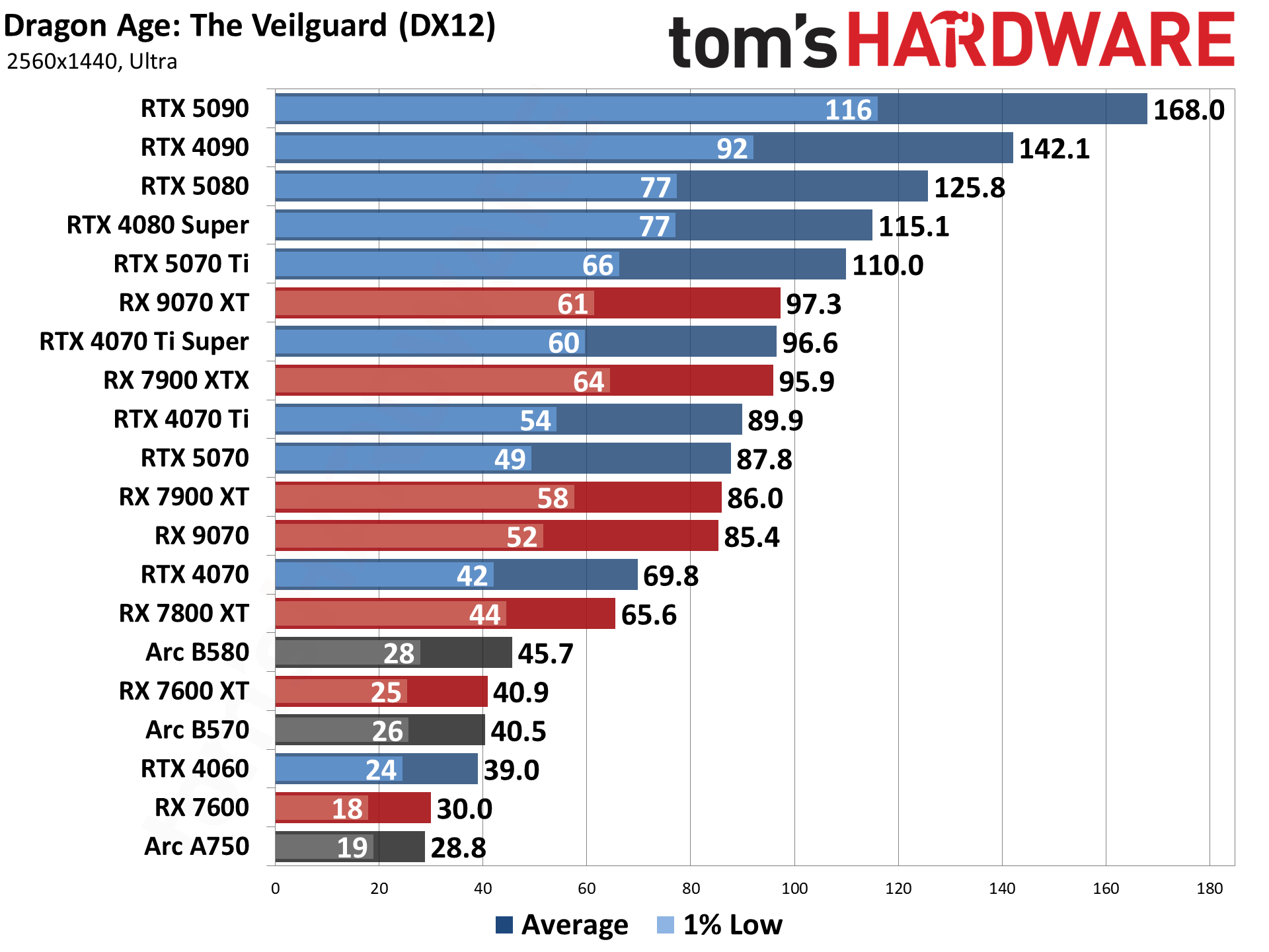

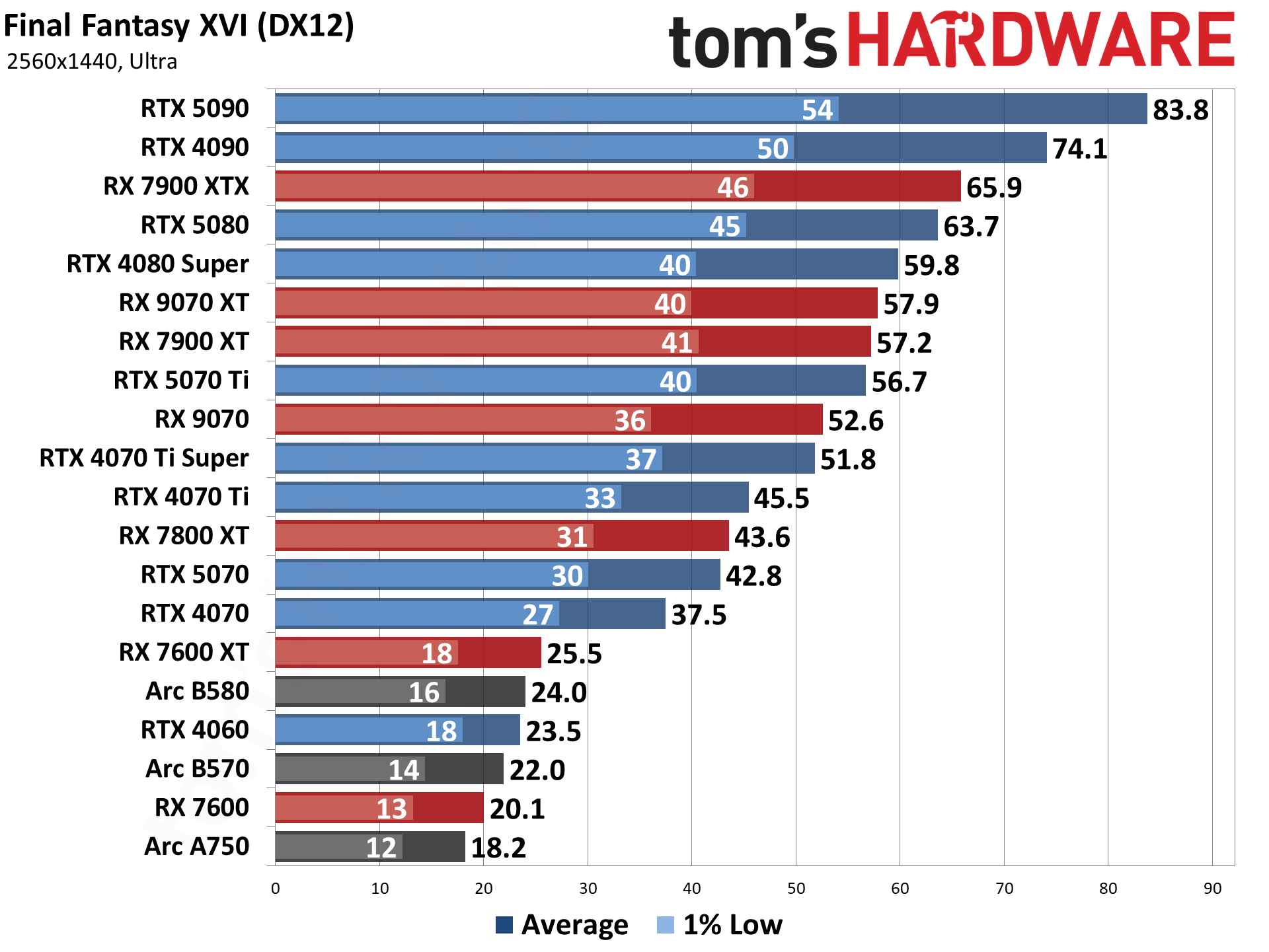

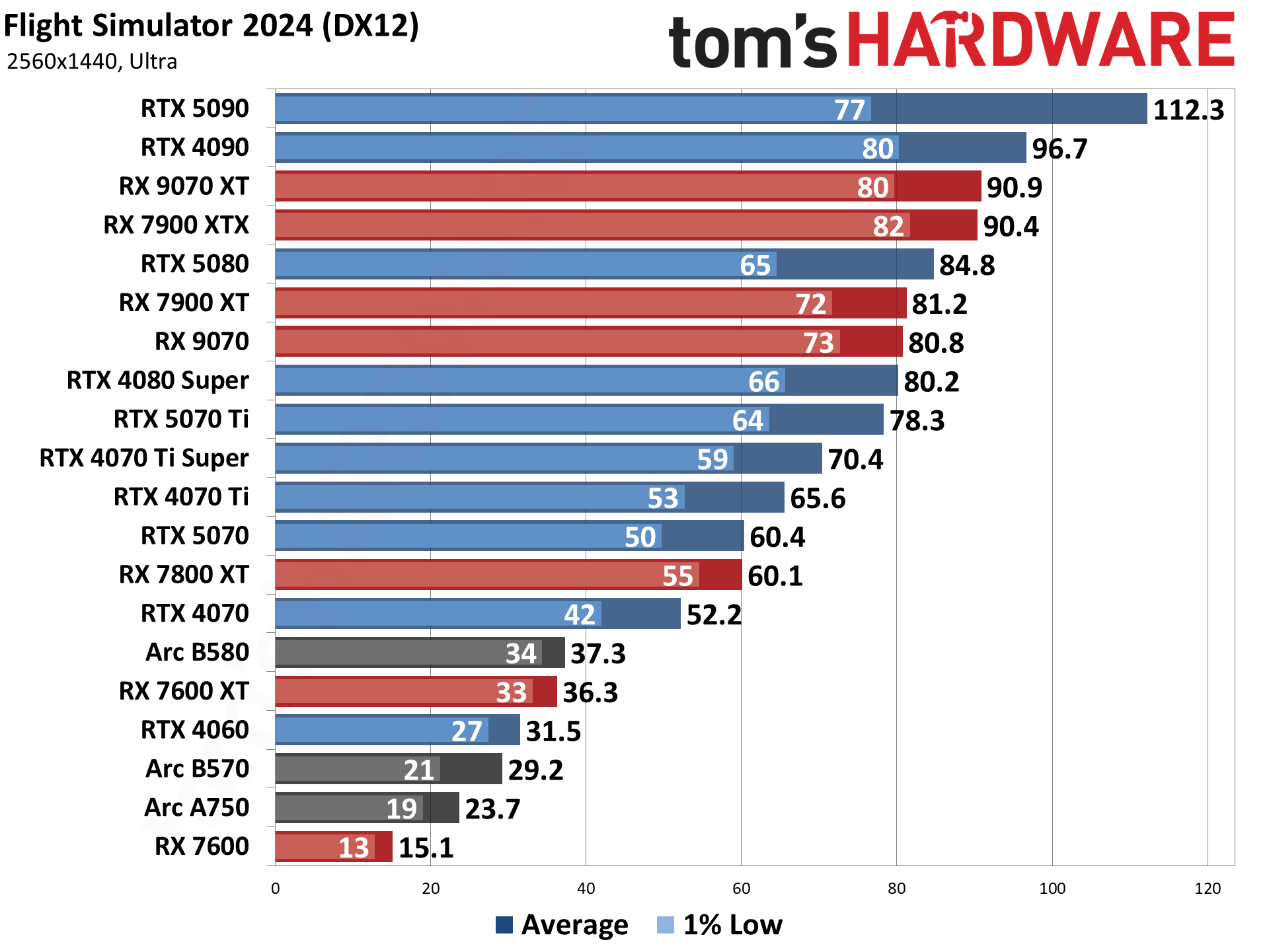
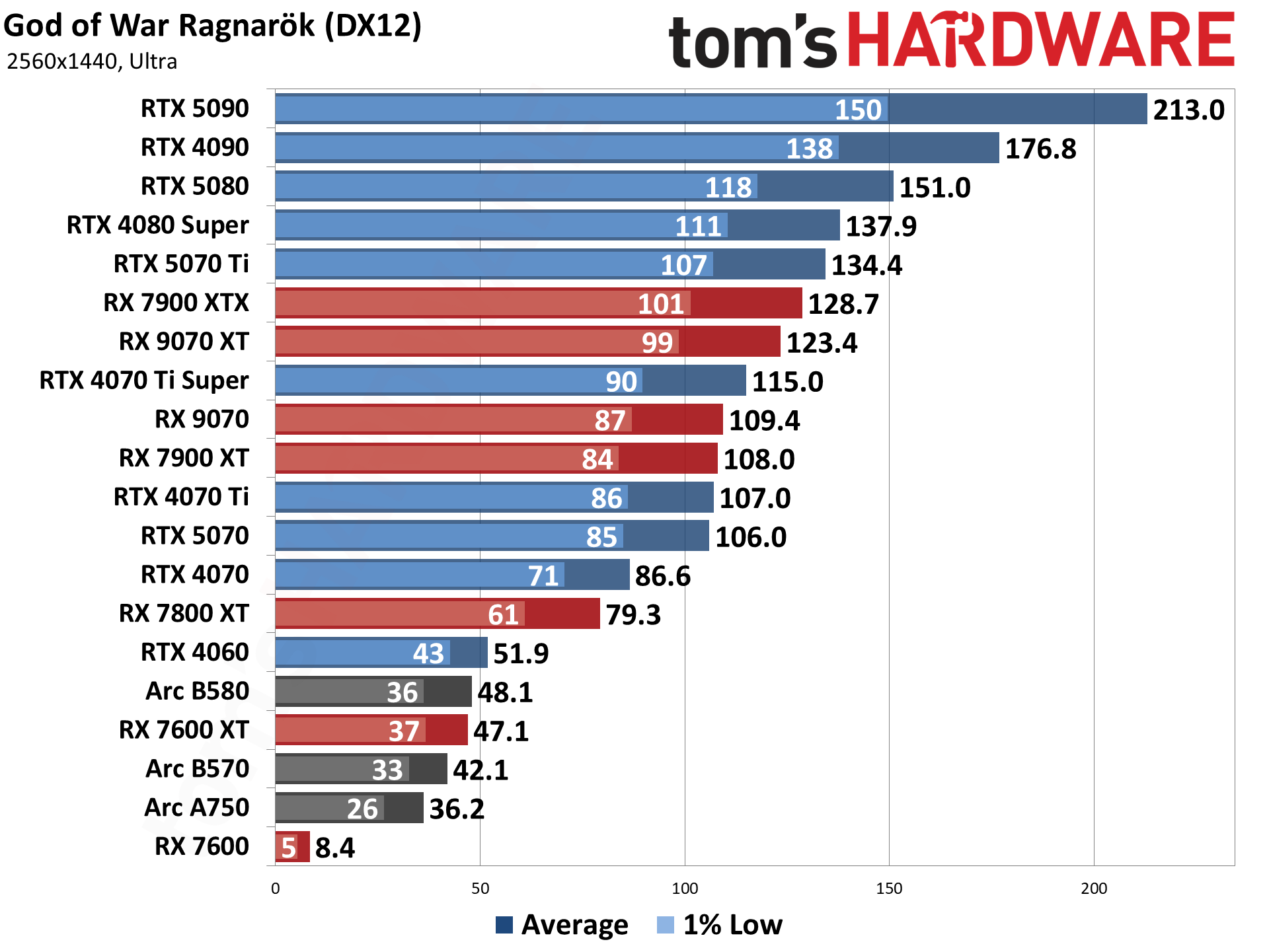
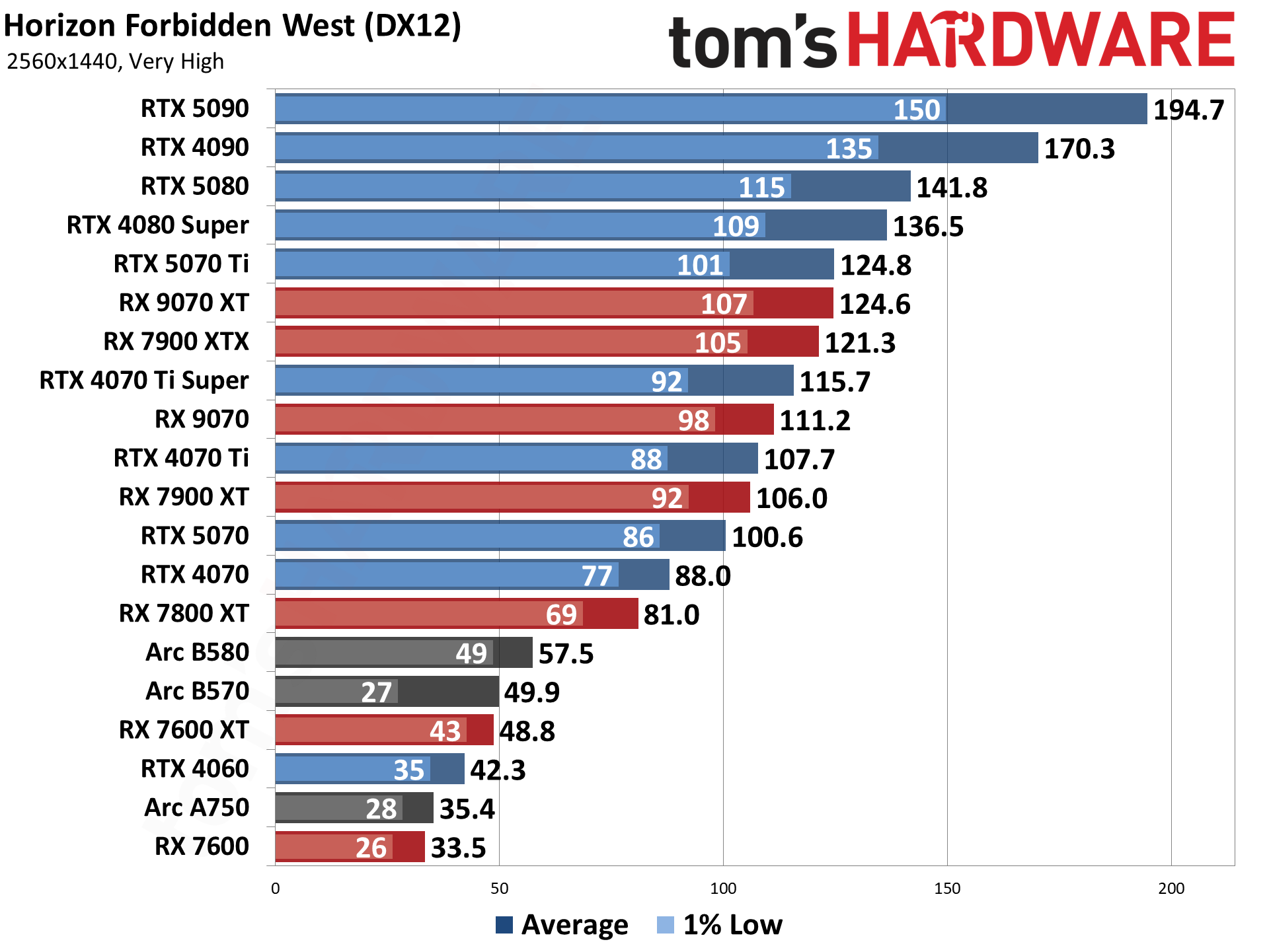

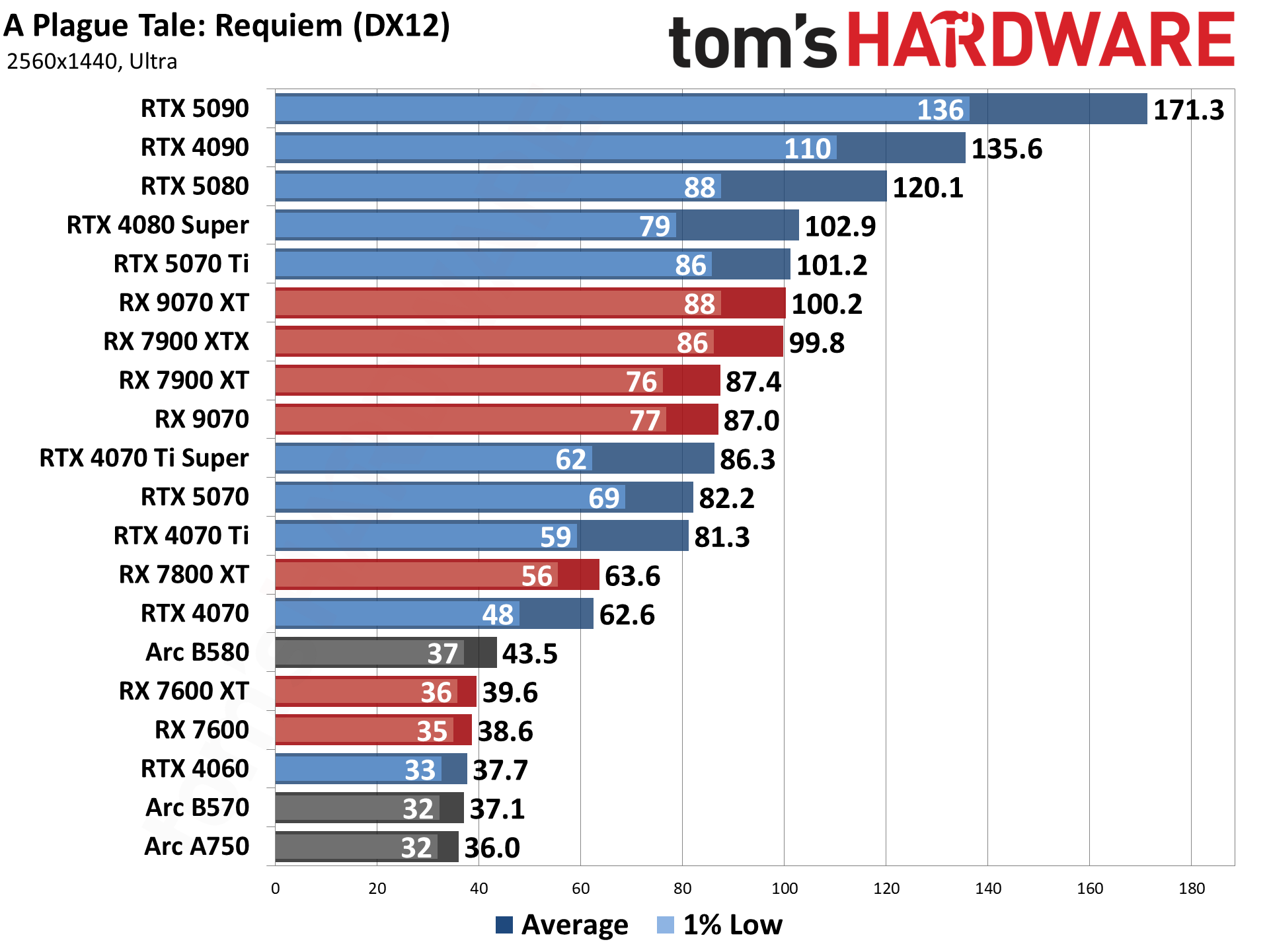
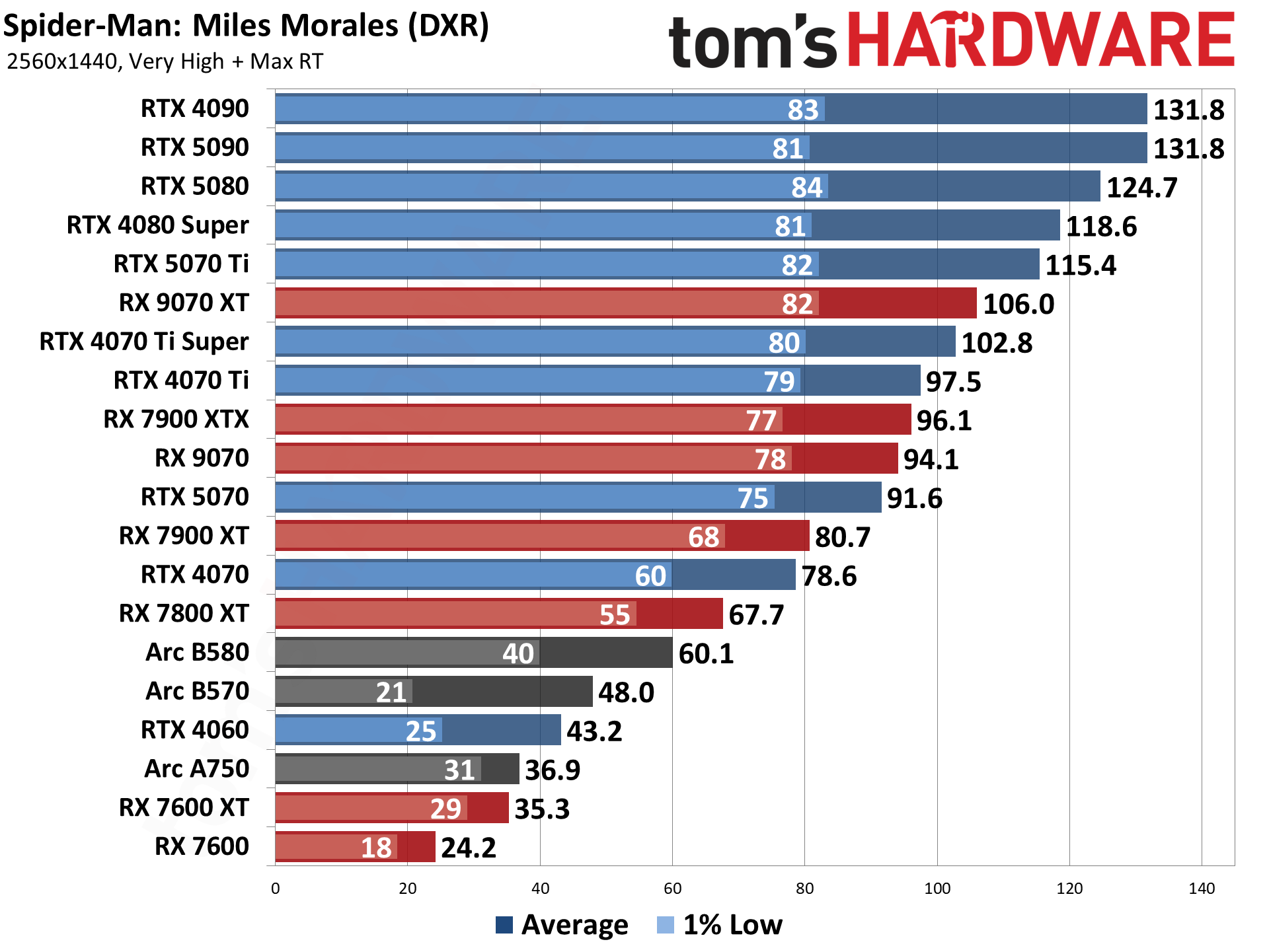
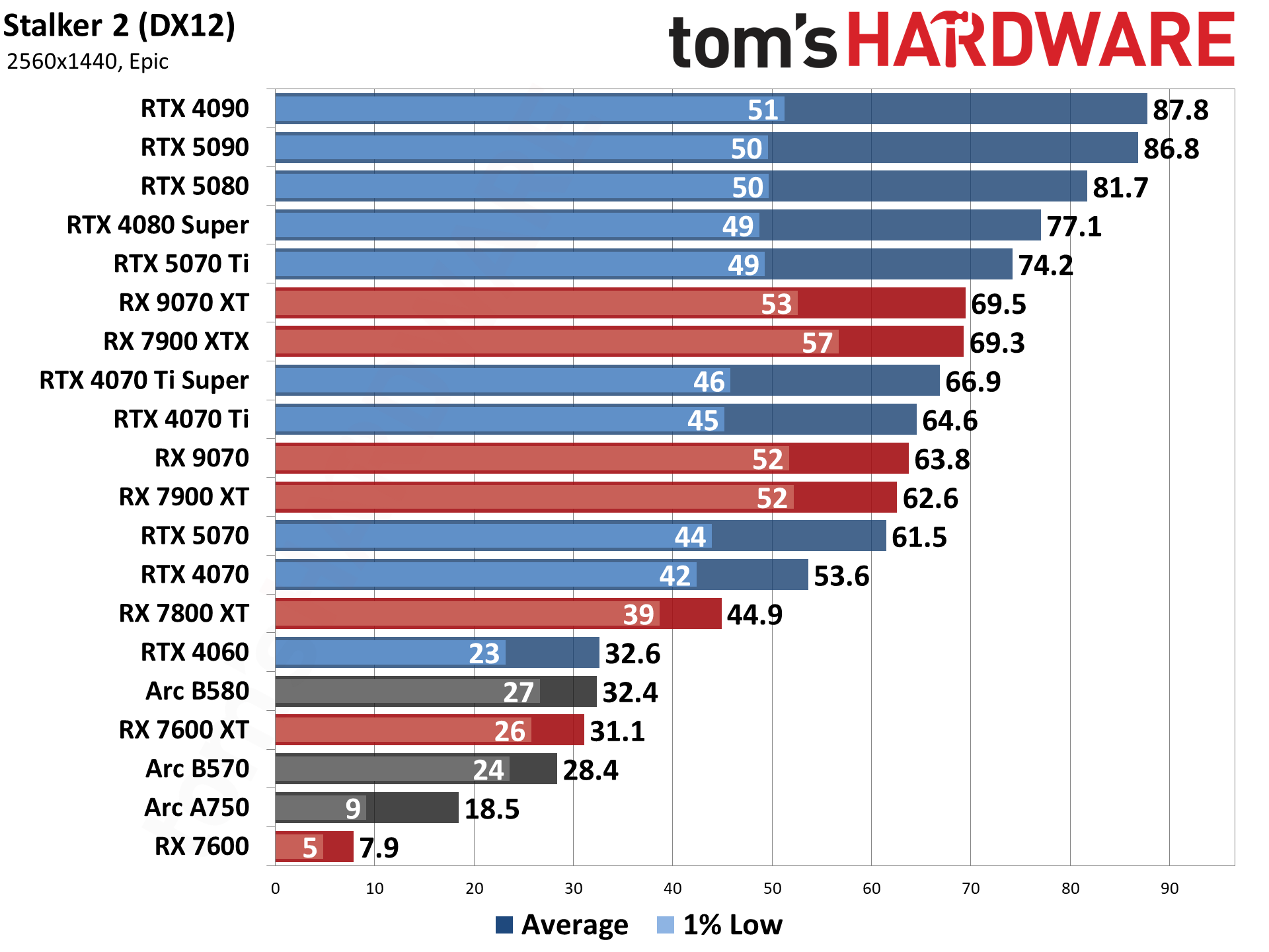

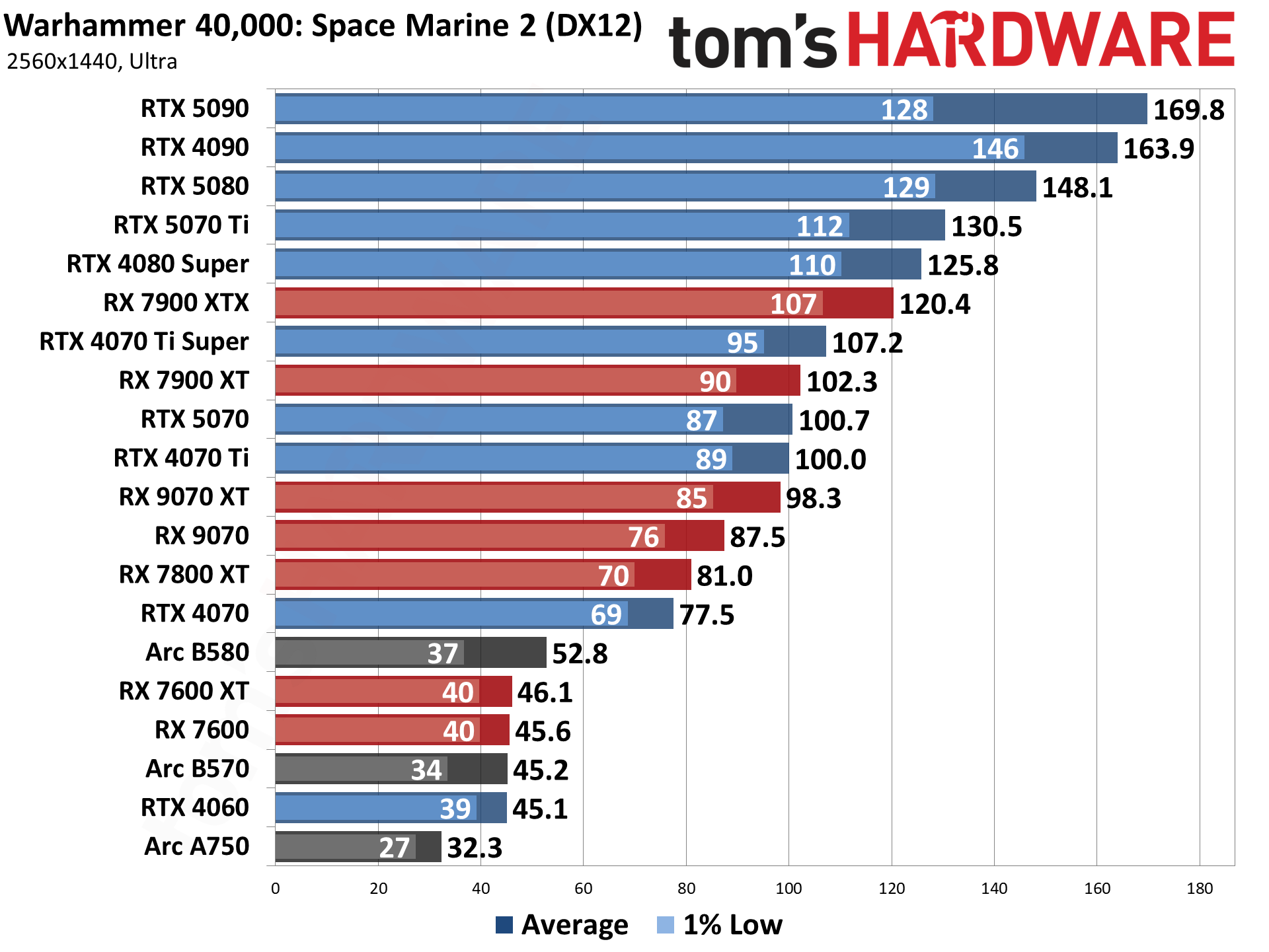
Best Graphics Cards — 4K Ultra

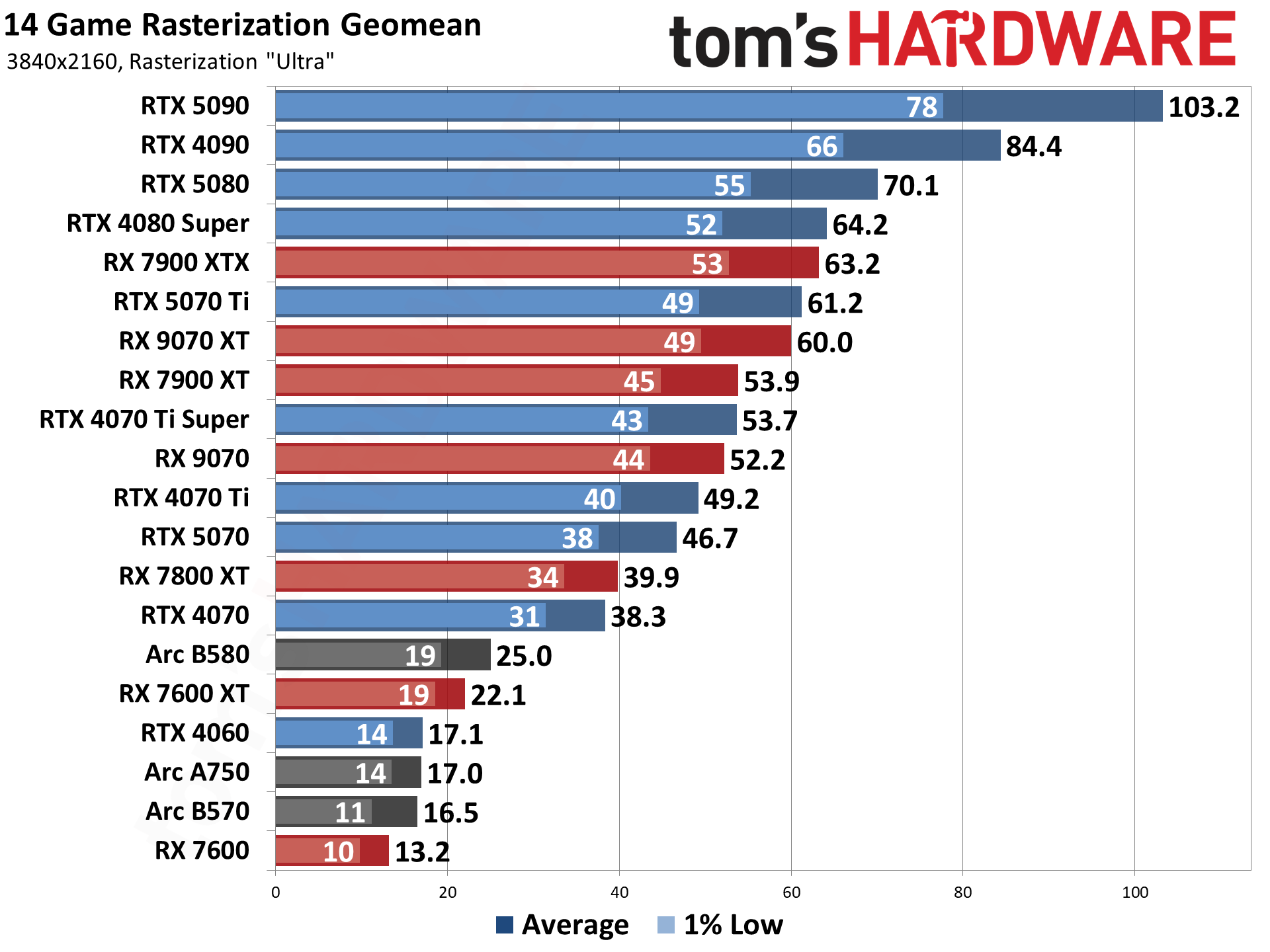
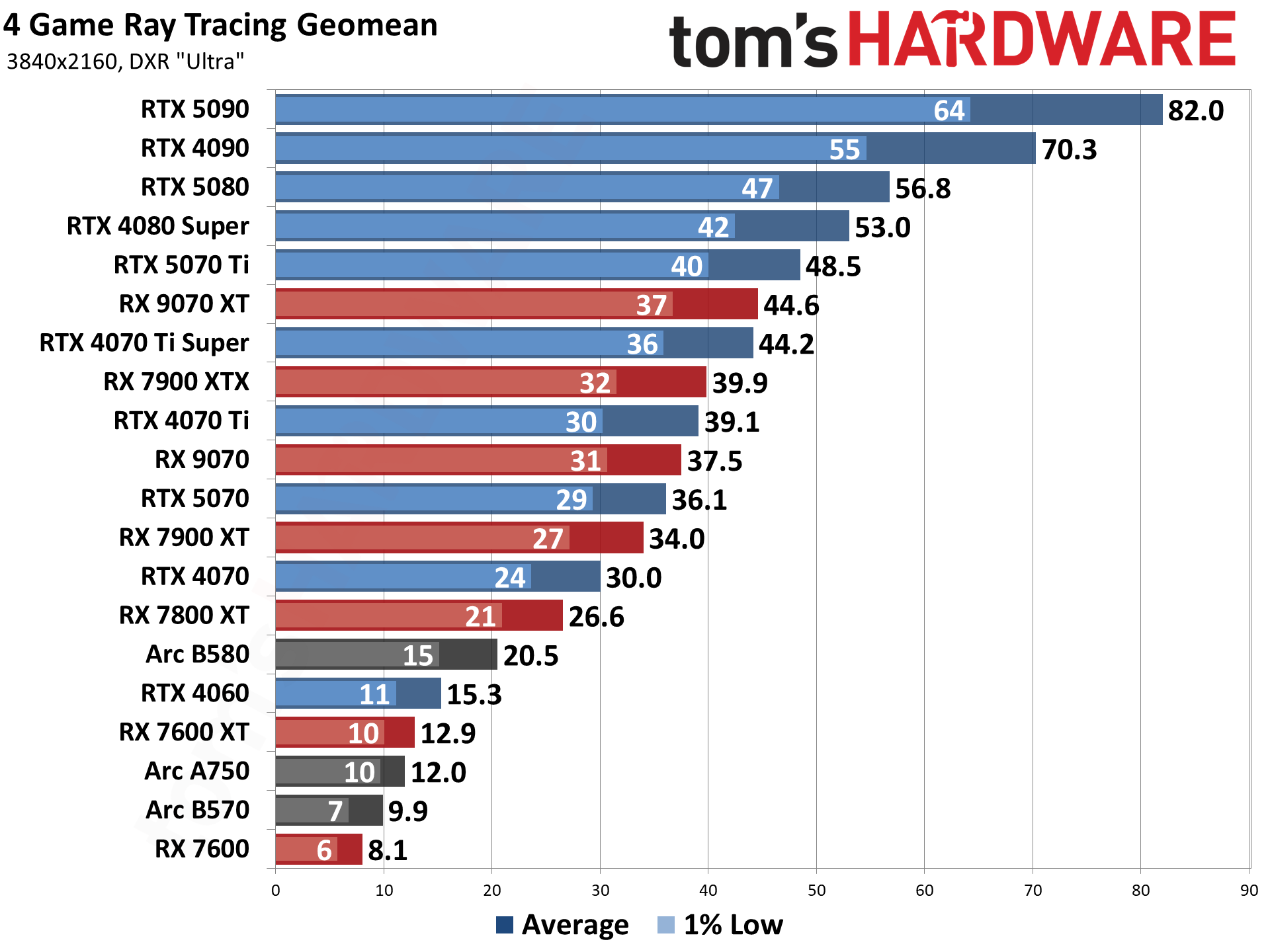
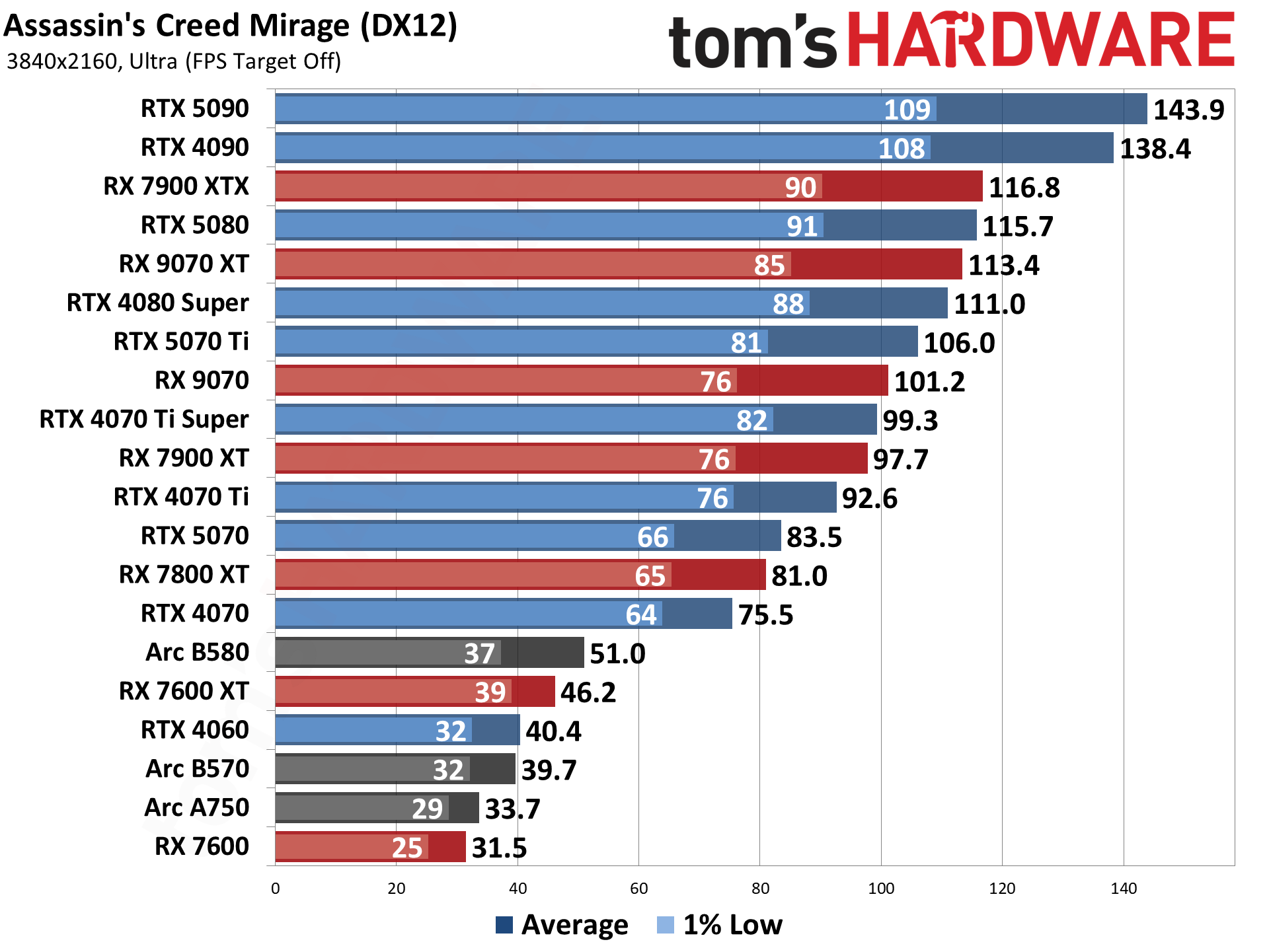
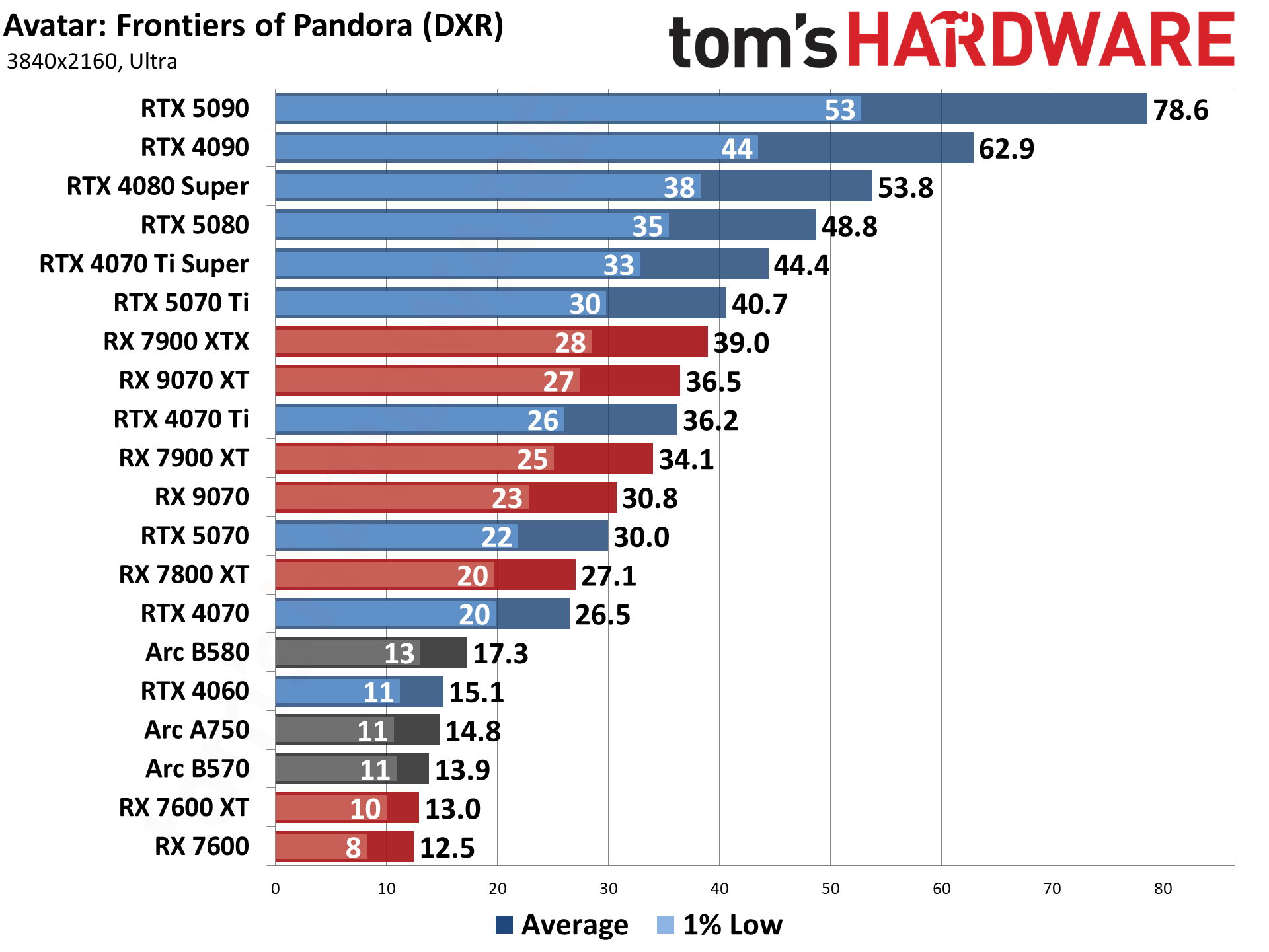
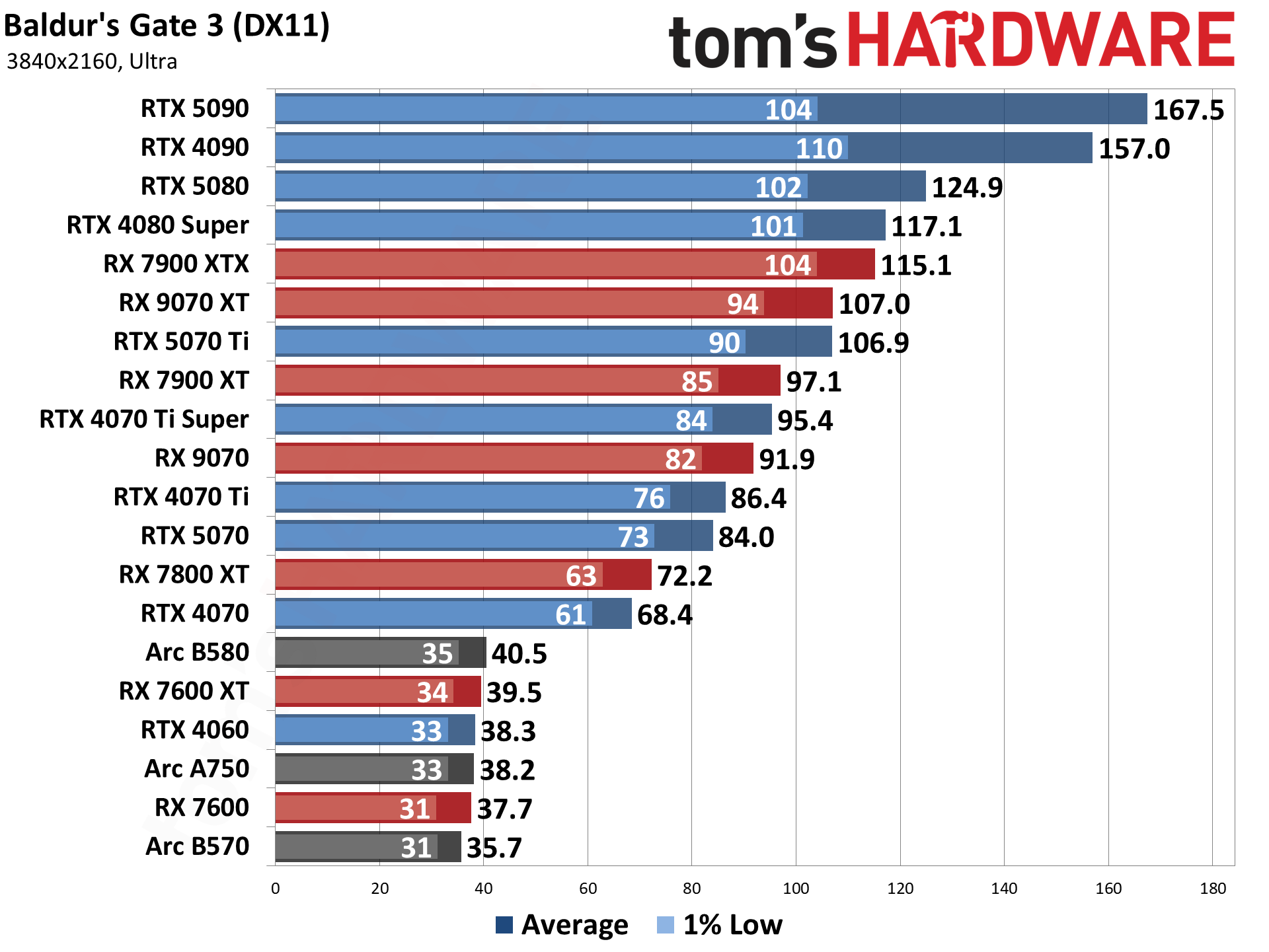
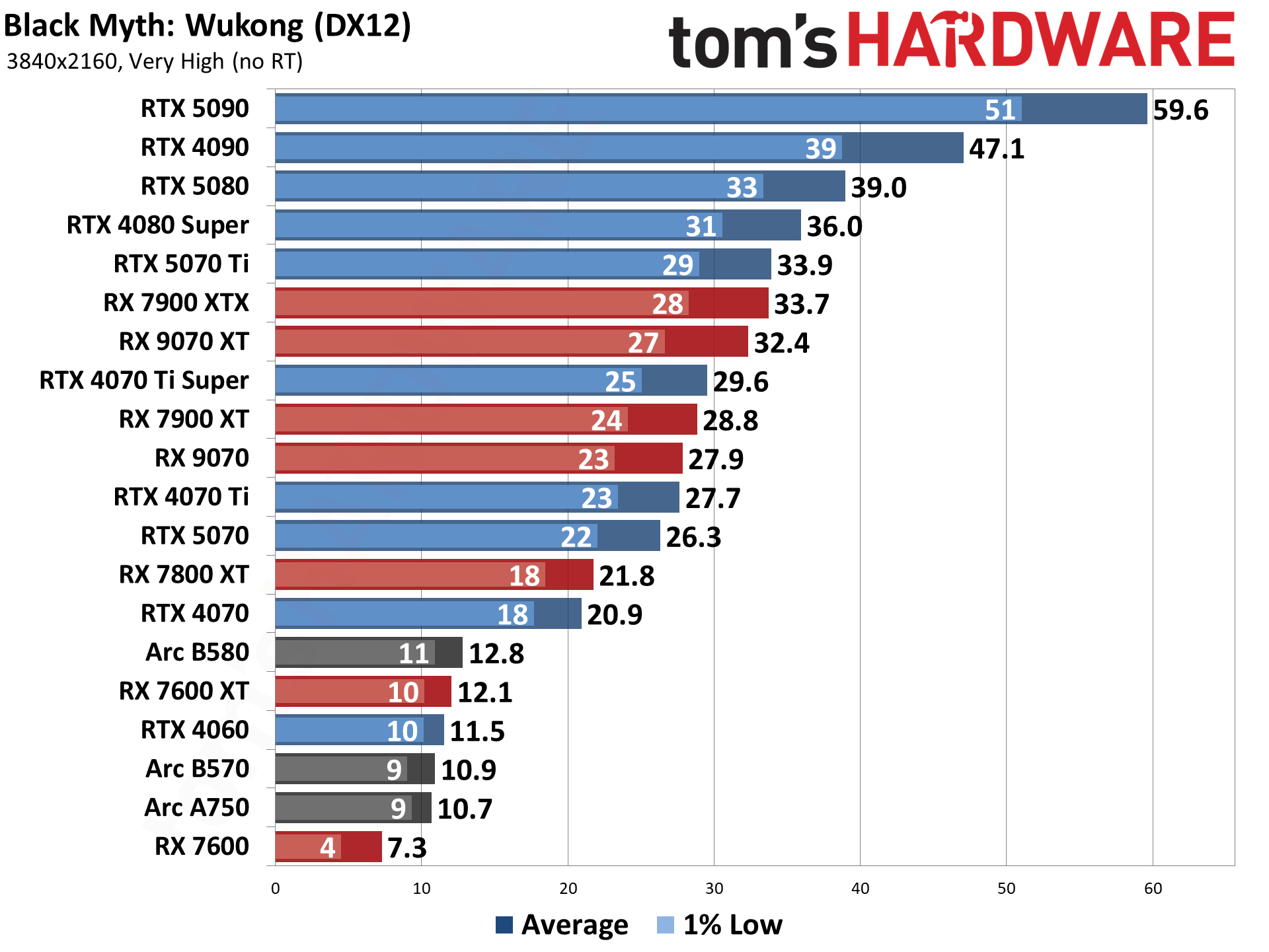

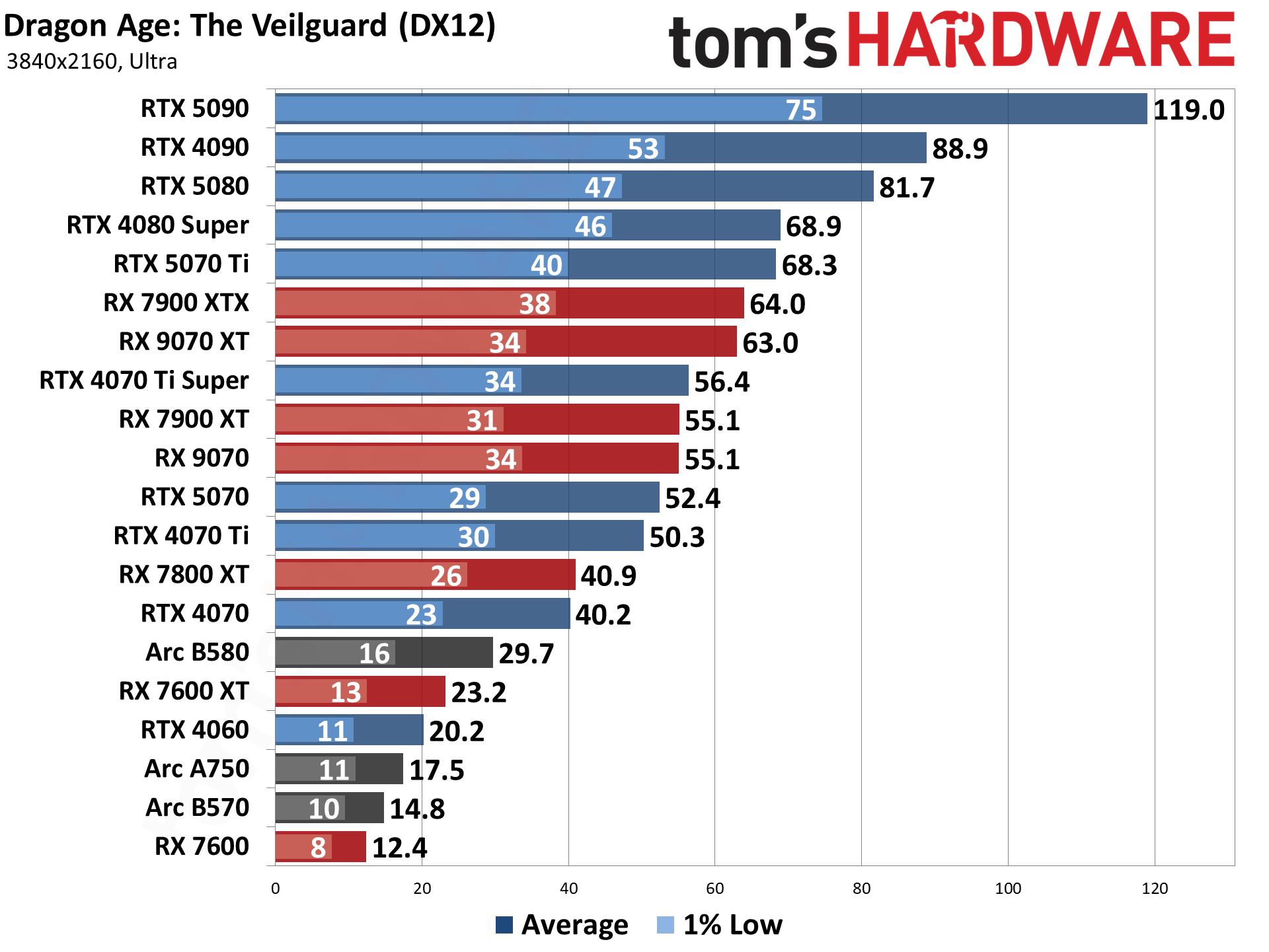
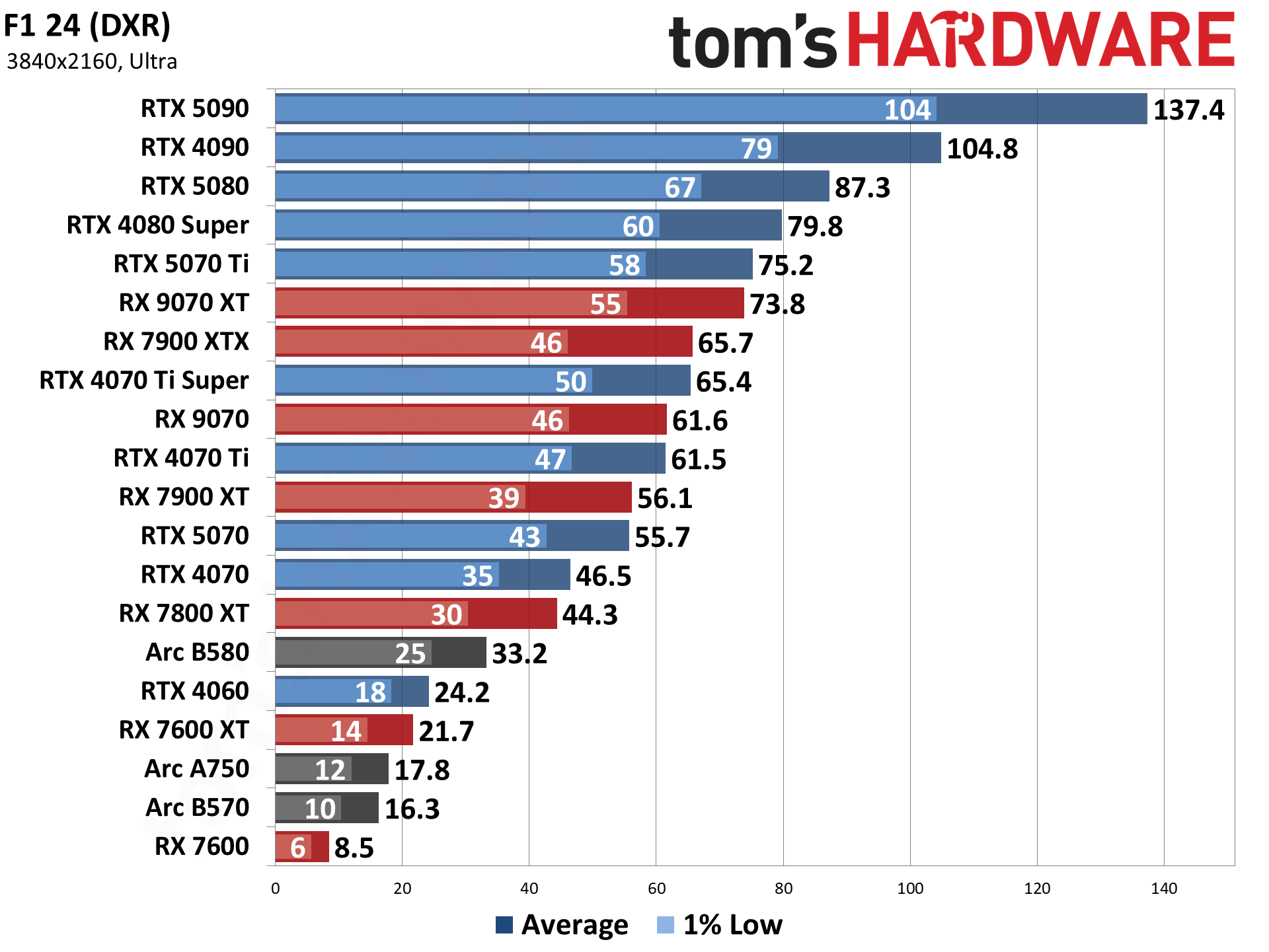
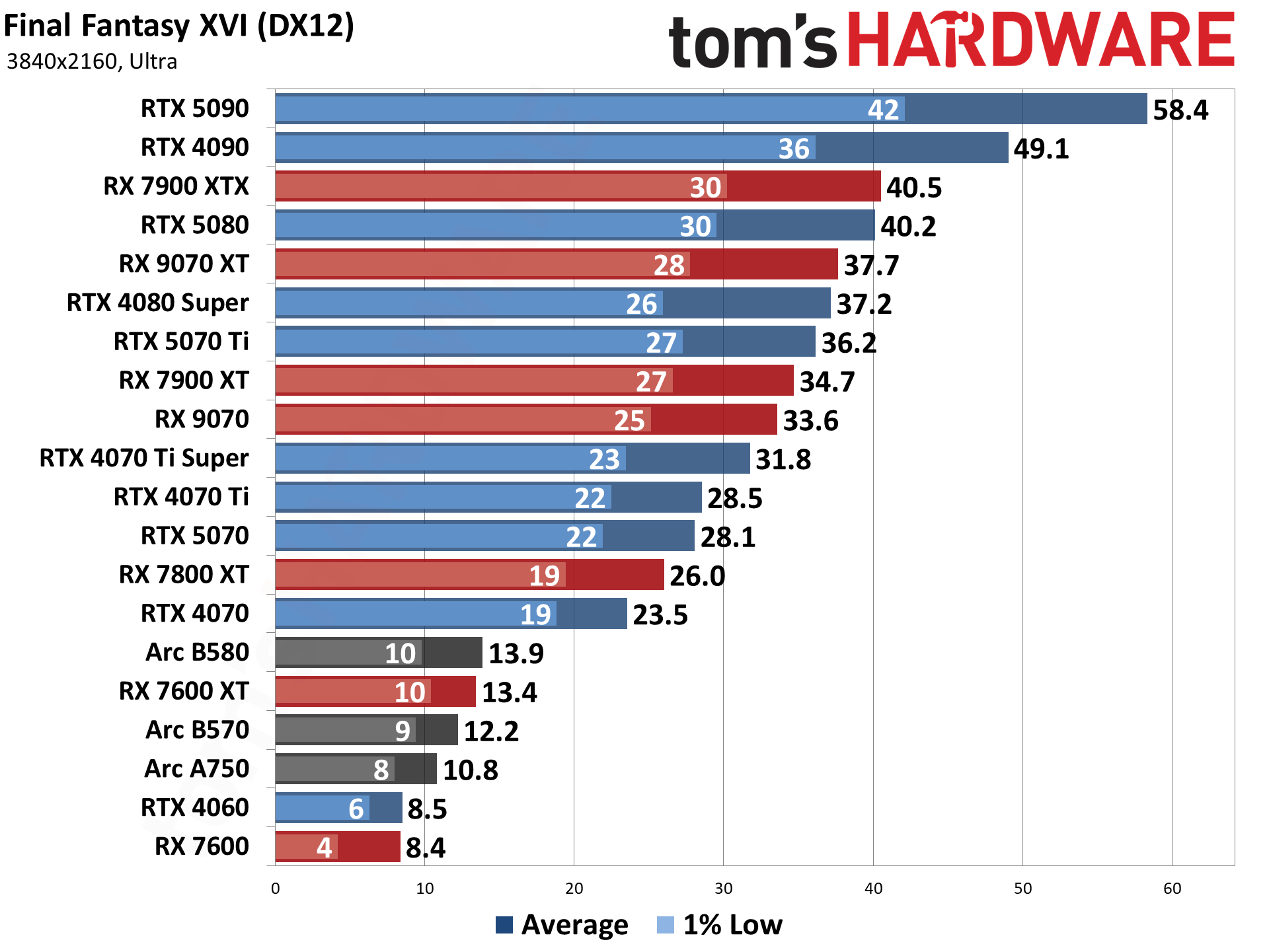

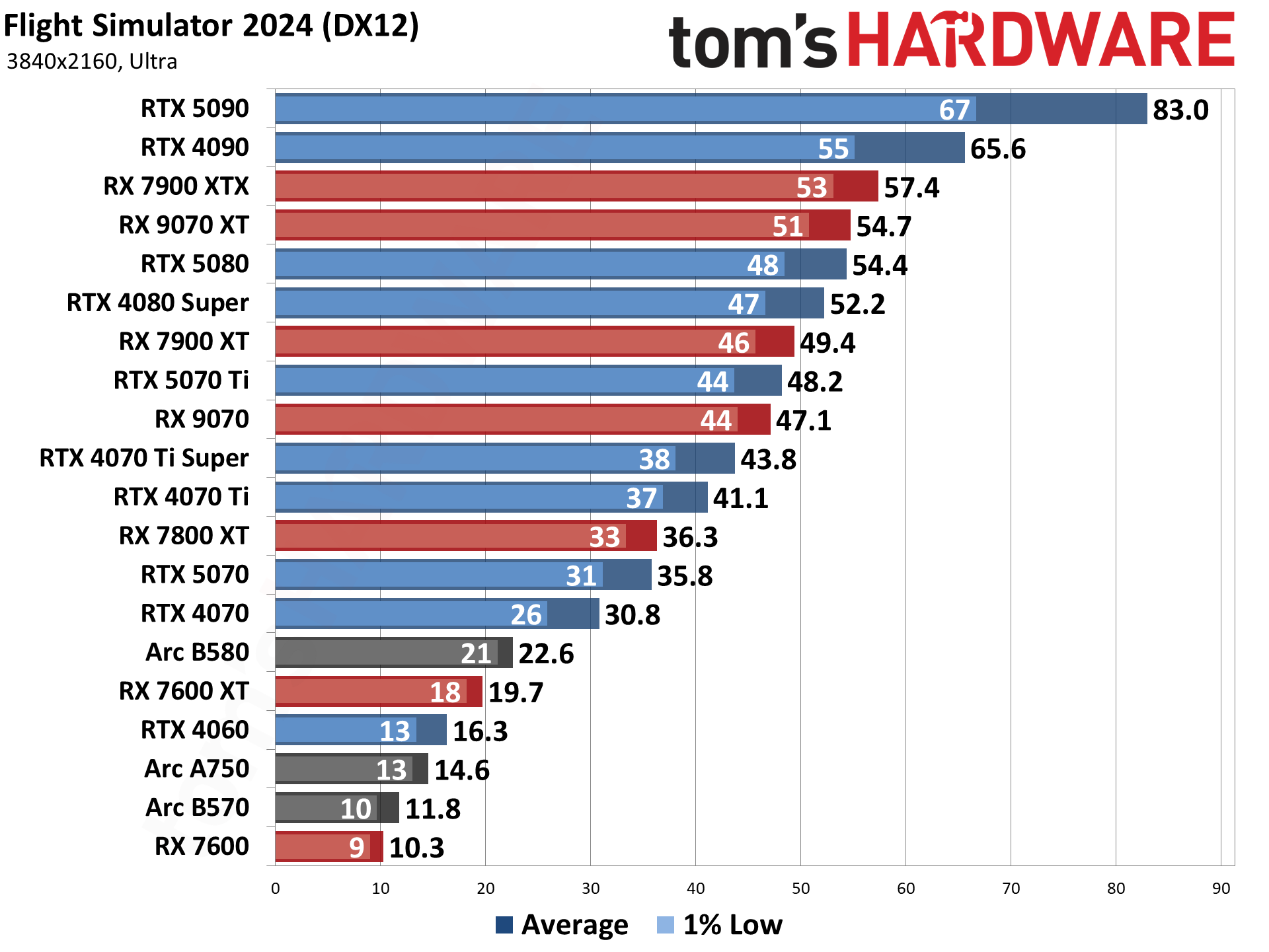
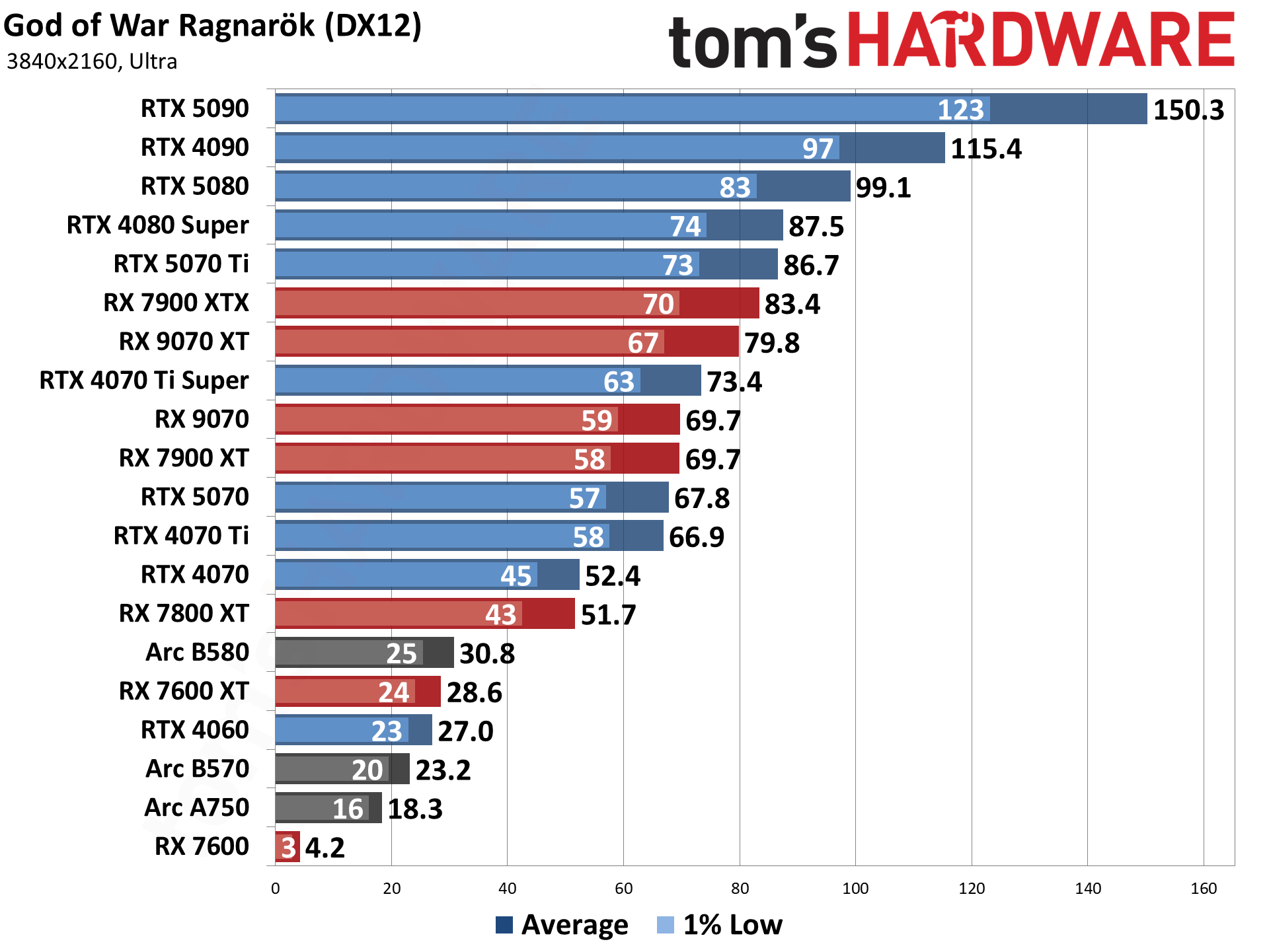
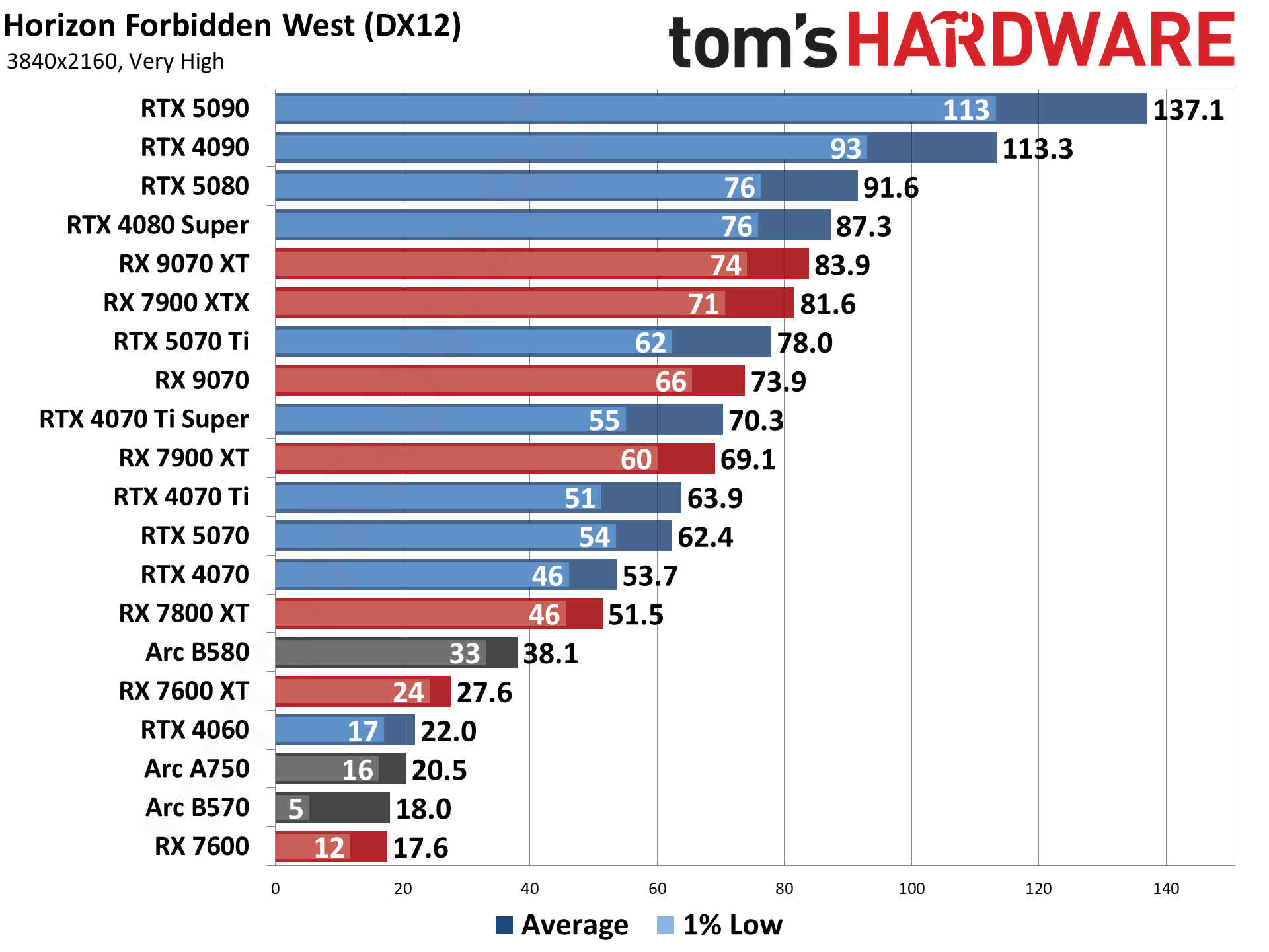
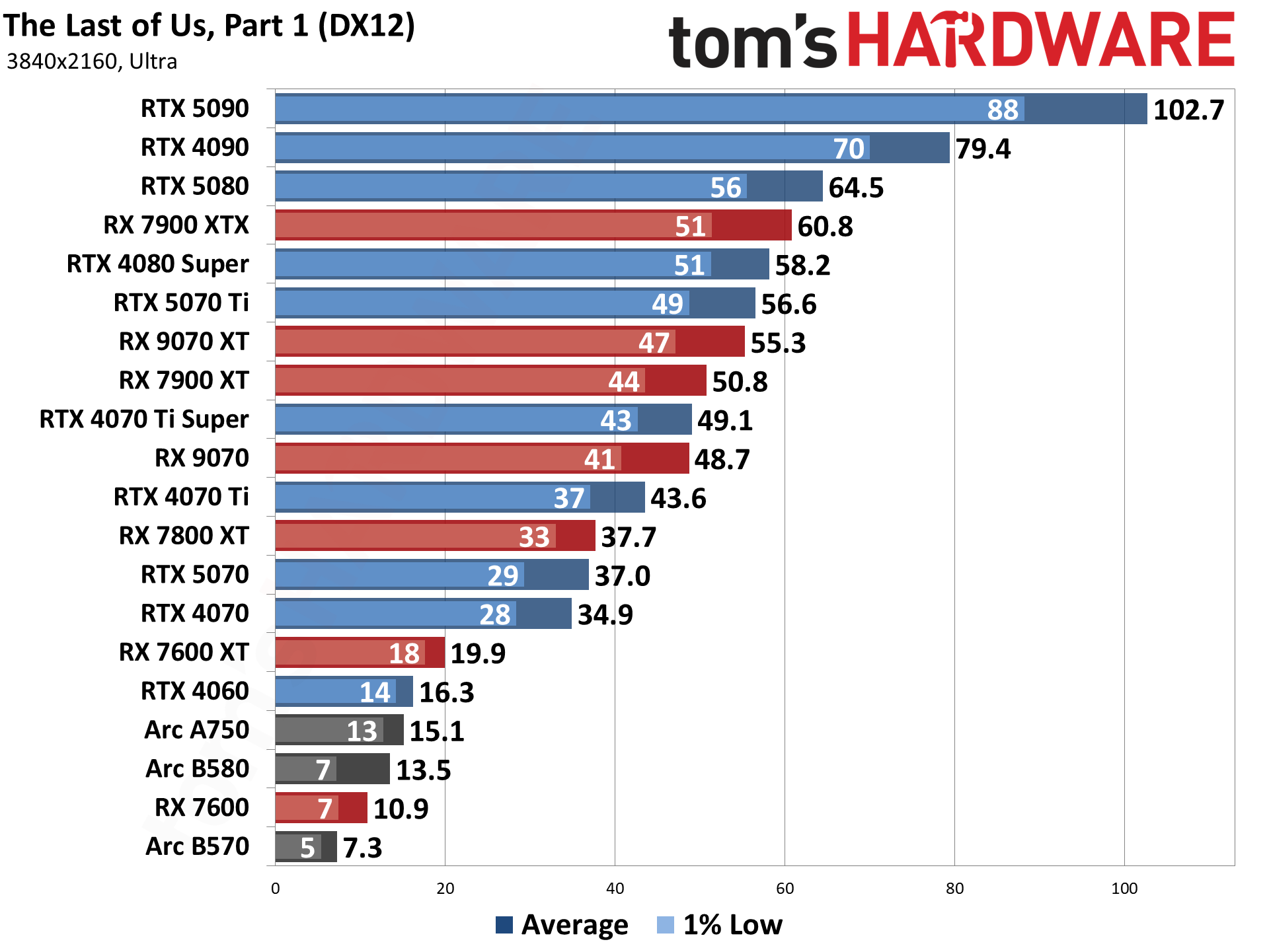


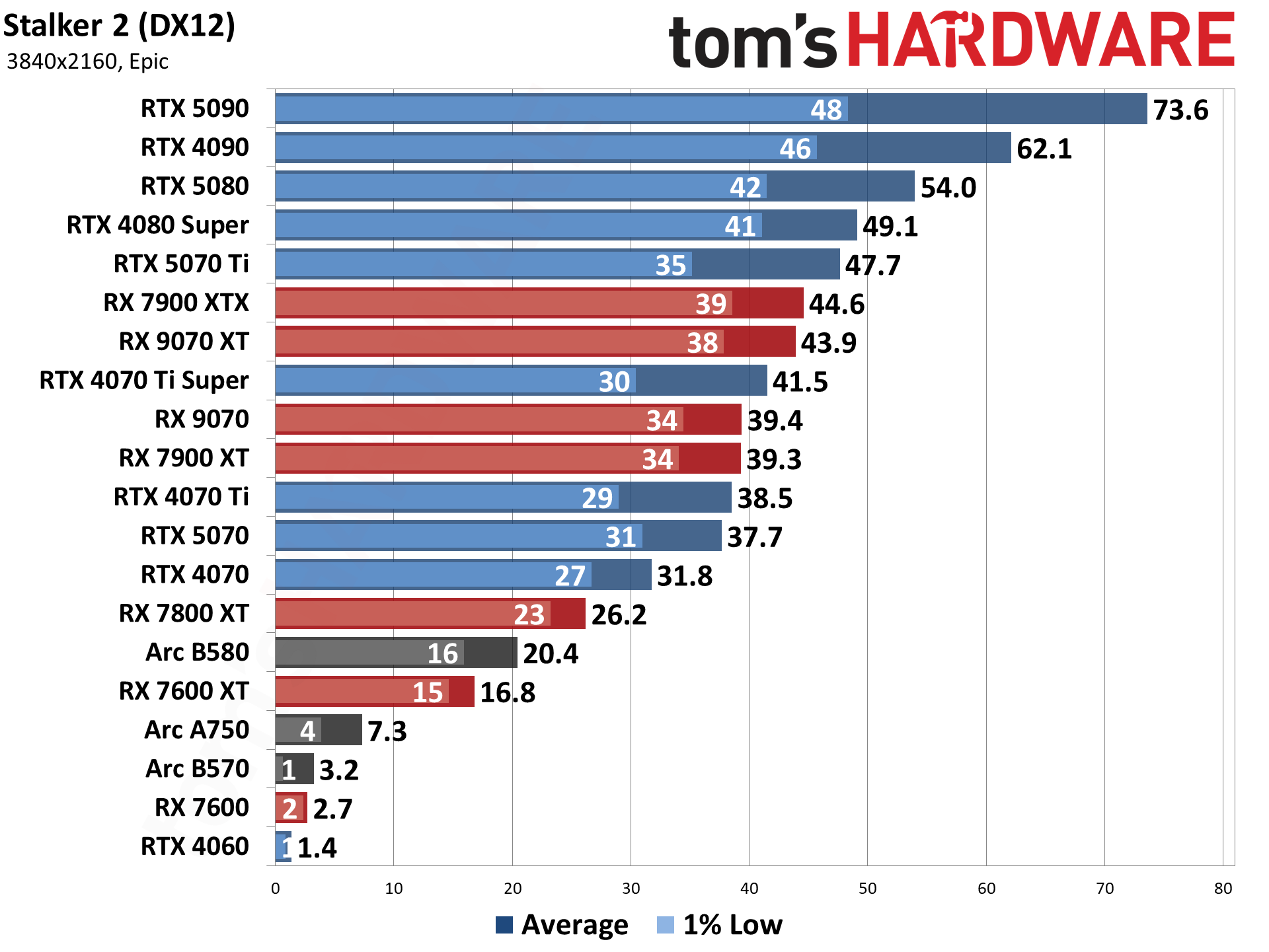

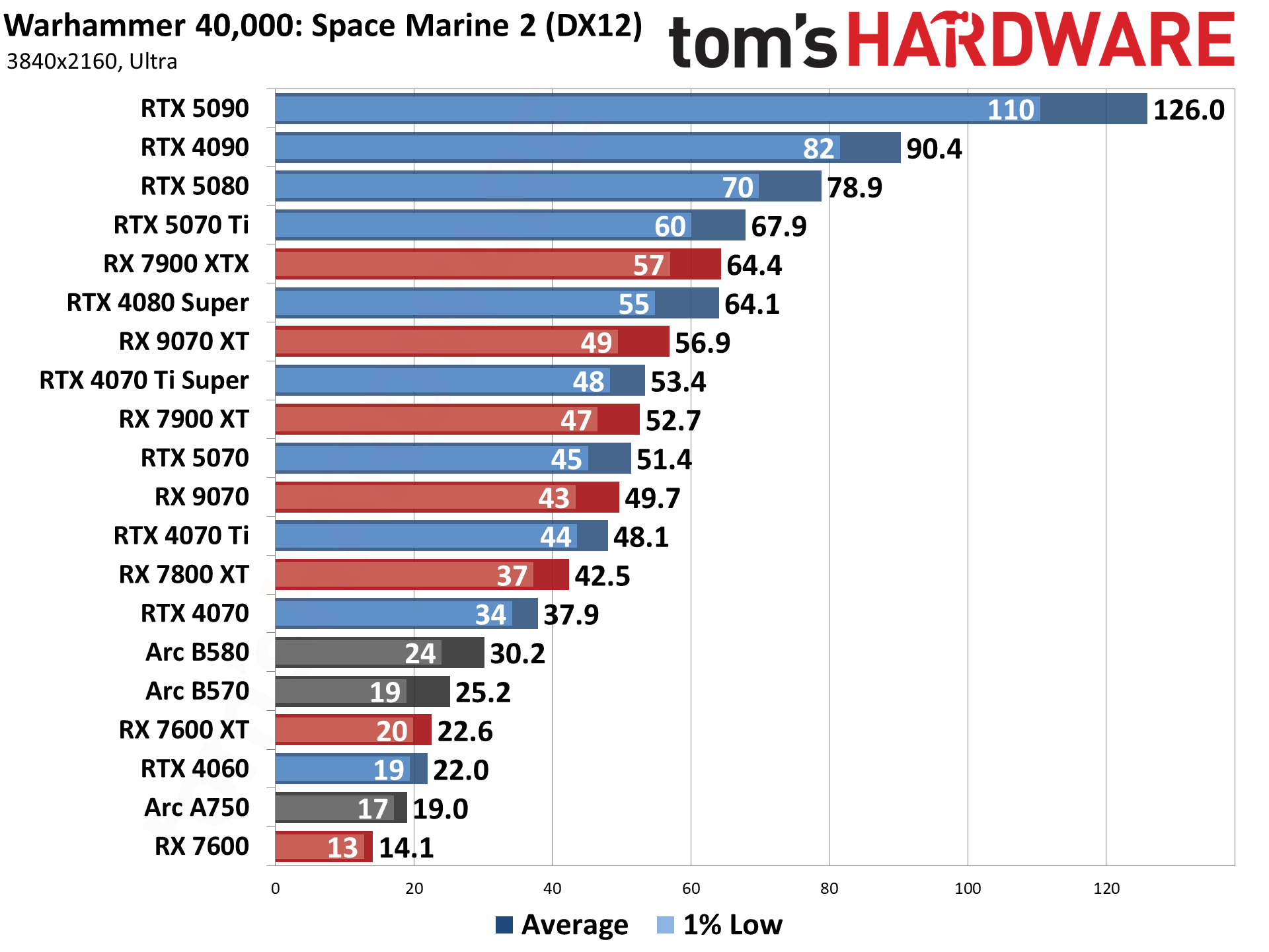
Top Graphics Cards - Performance, Speed, and Cooling
Our primary focus has been on performance so far. However, for individuals keen on exploring power and other GPU aspects, we have prepared relevant charts. These charts will be presented in descending order, starting from the highest settings, as 4K ultra settings typically pose the most demanding tasks for these GPUs.
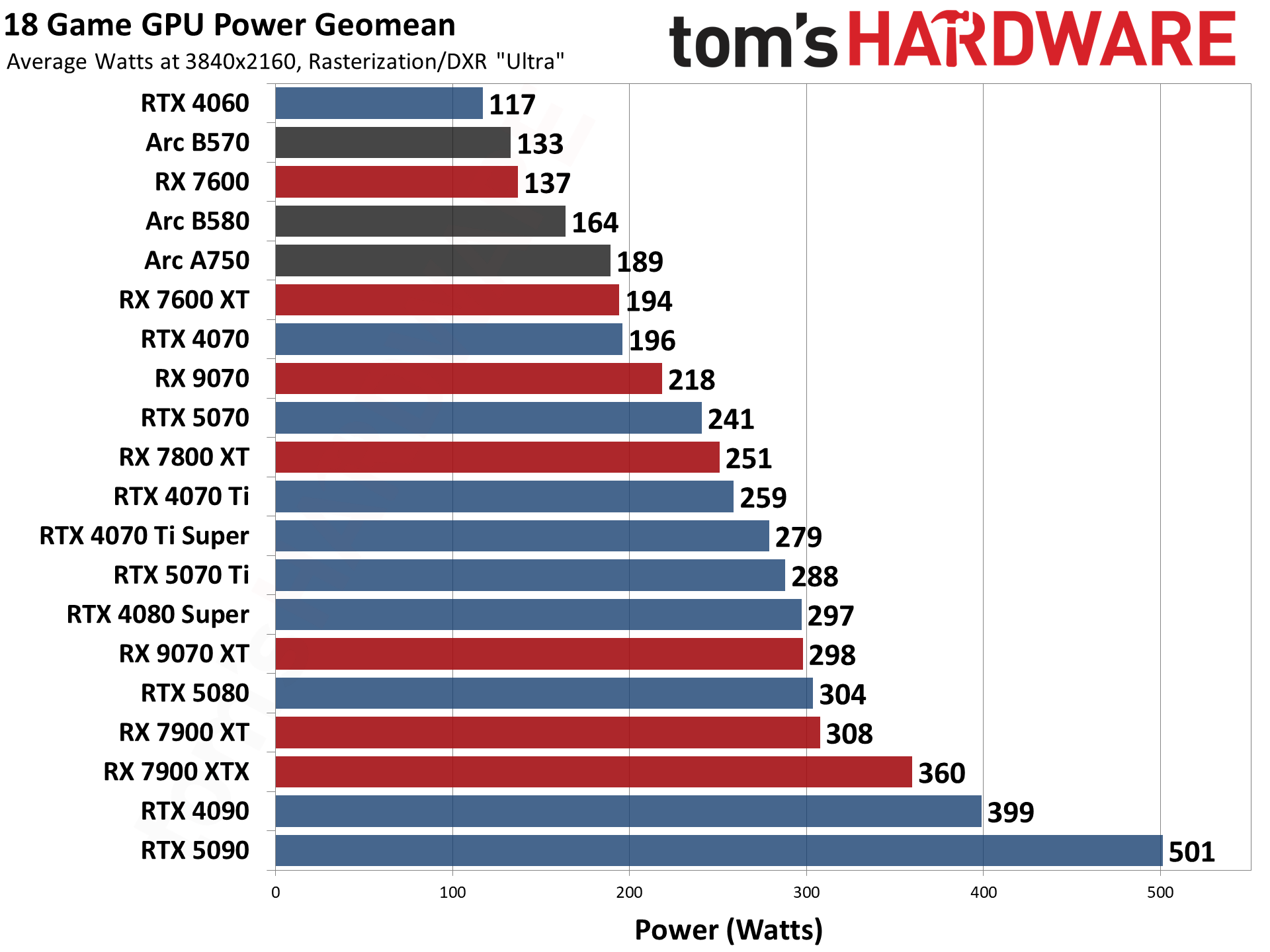
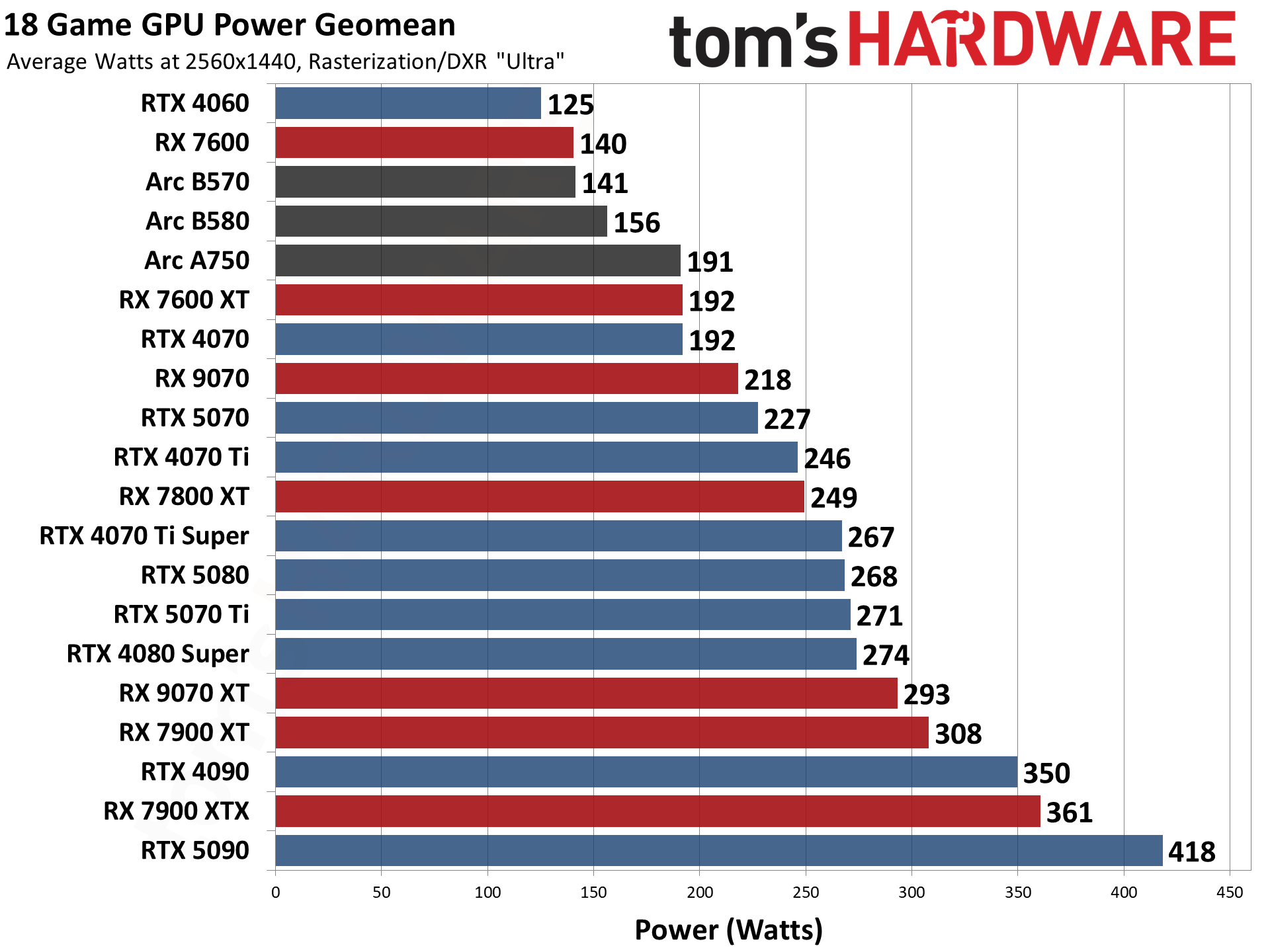
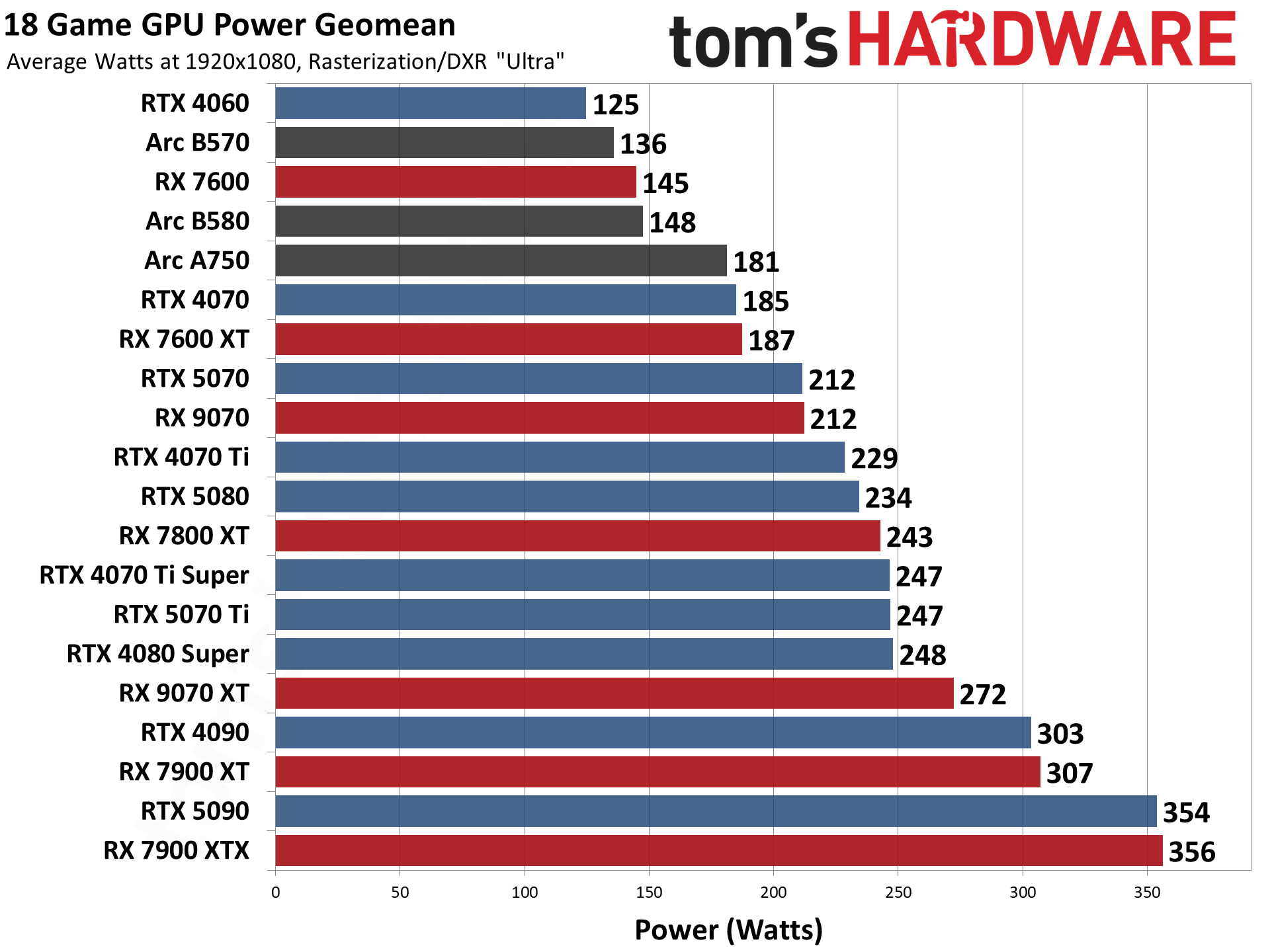

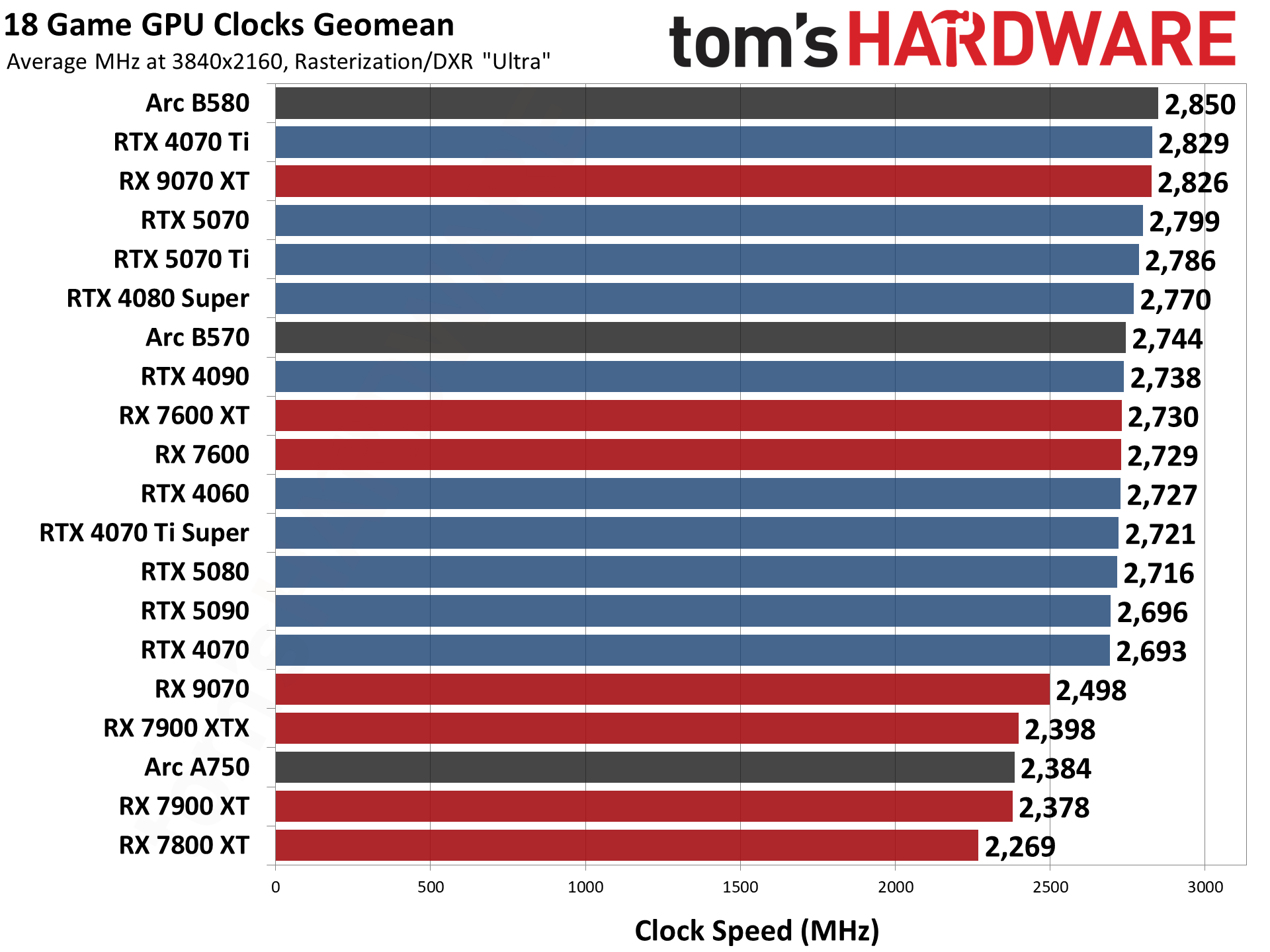
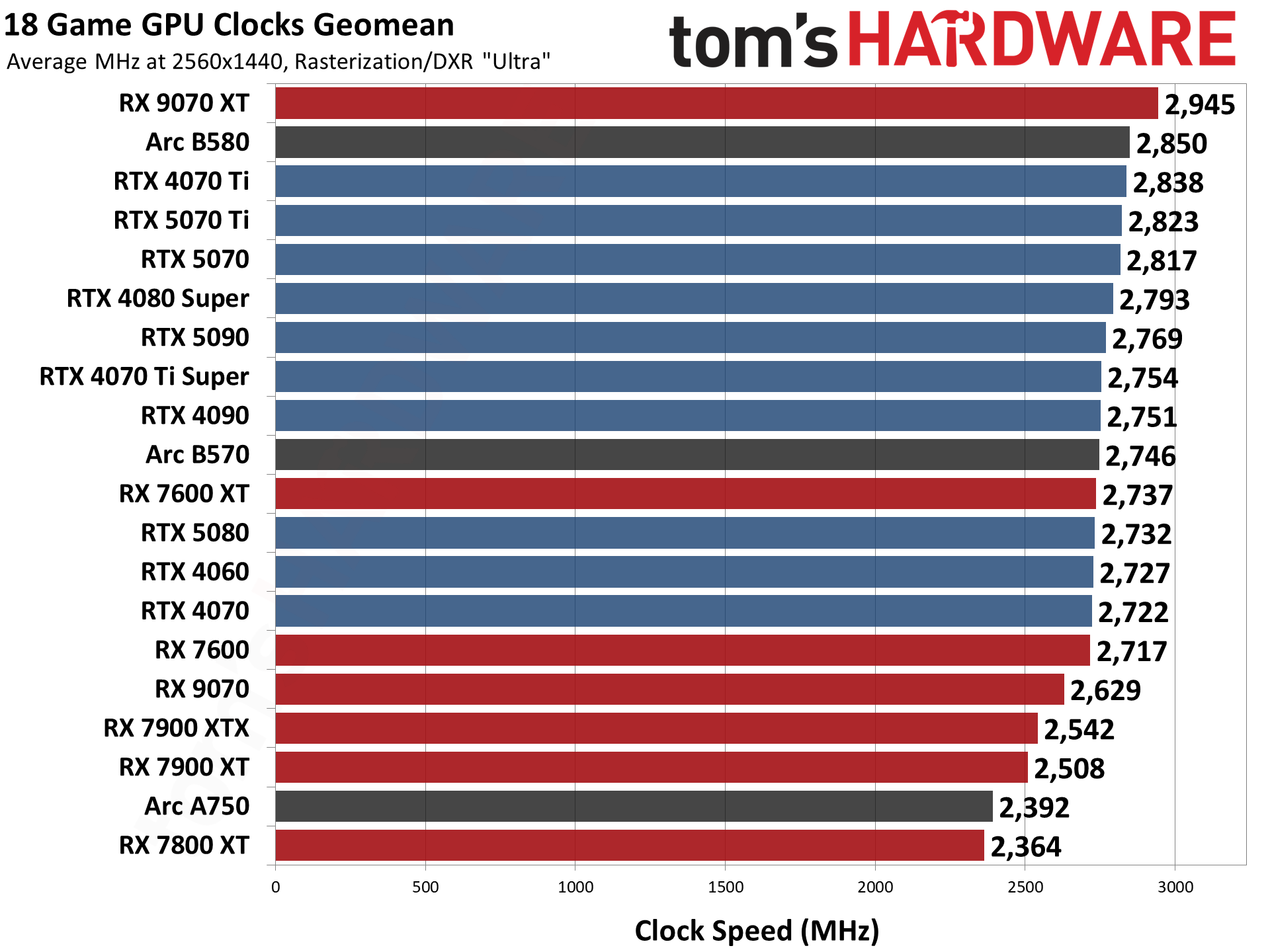
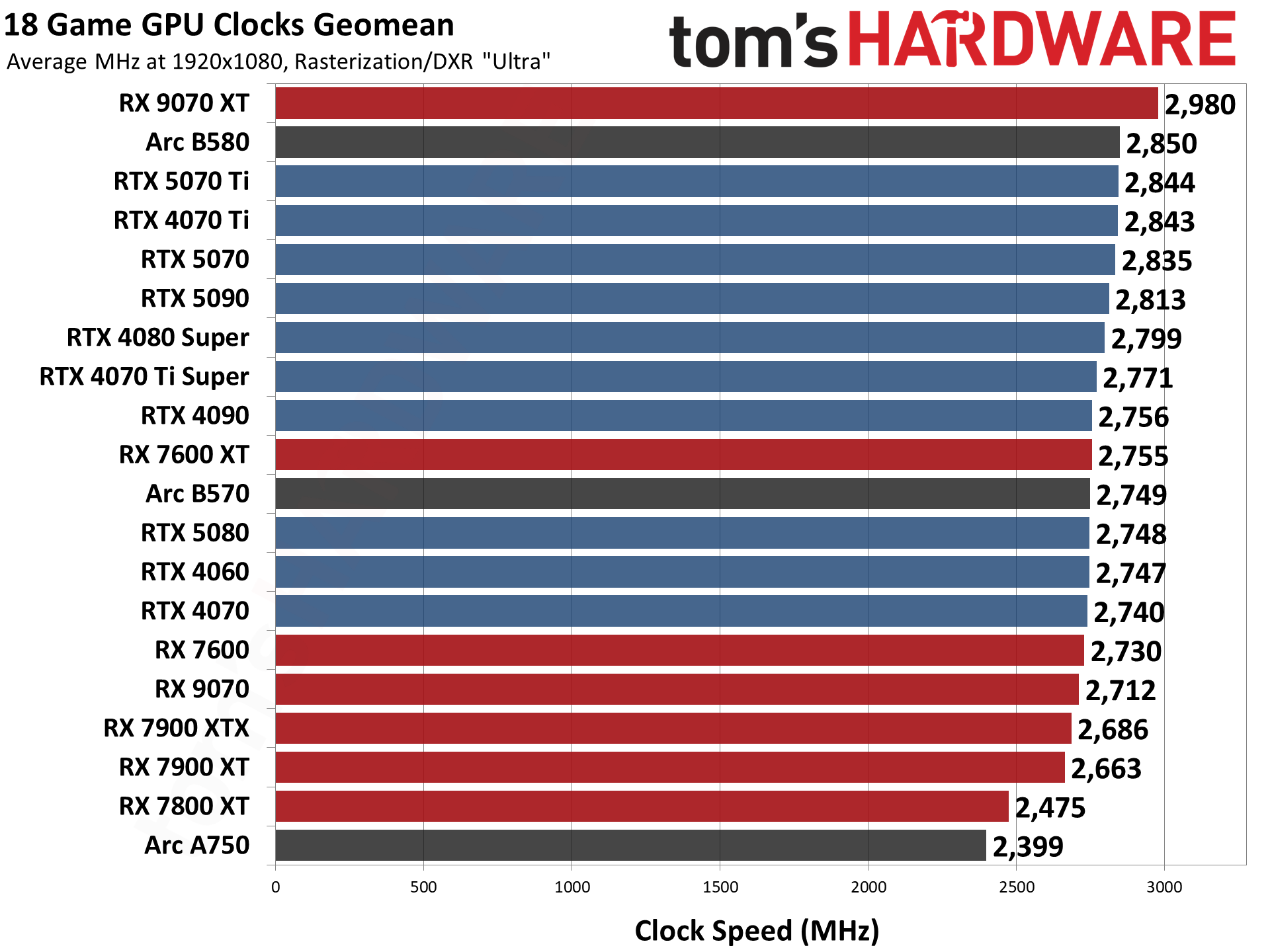
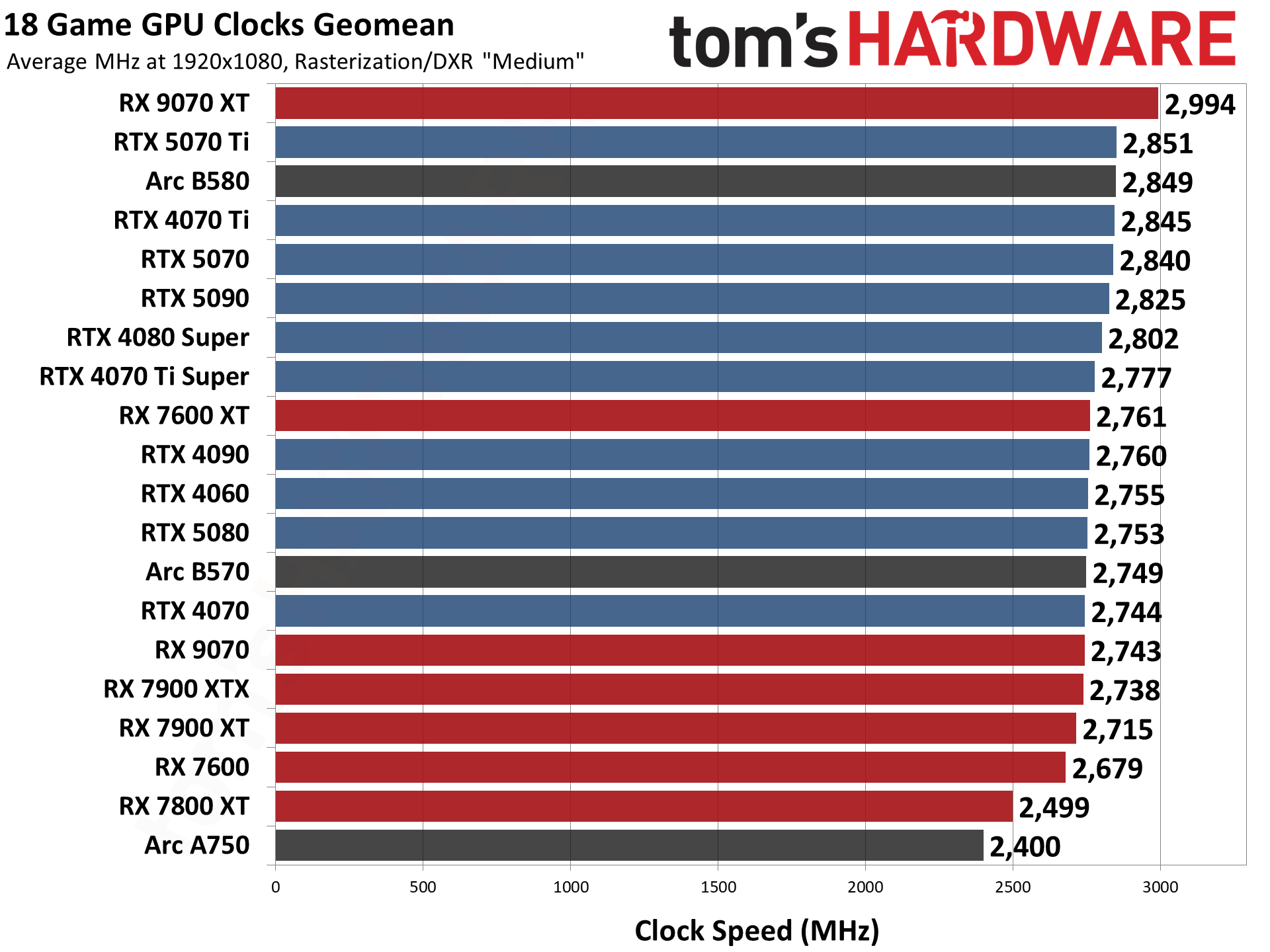

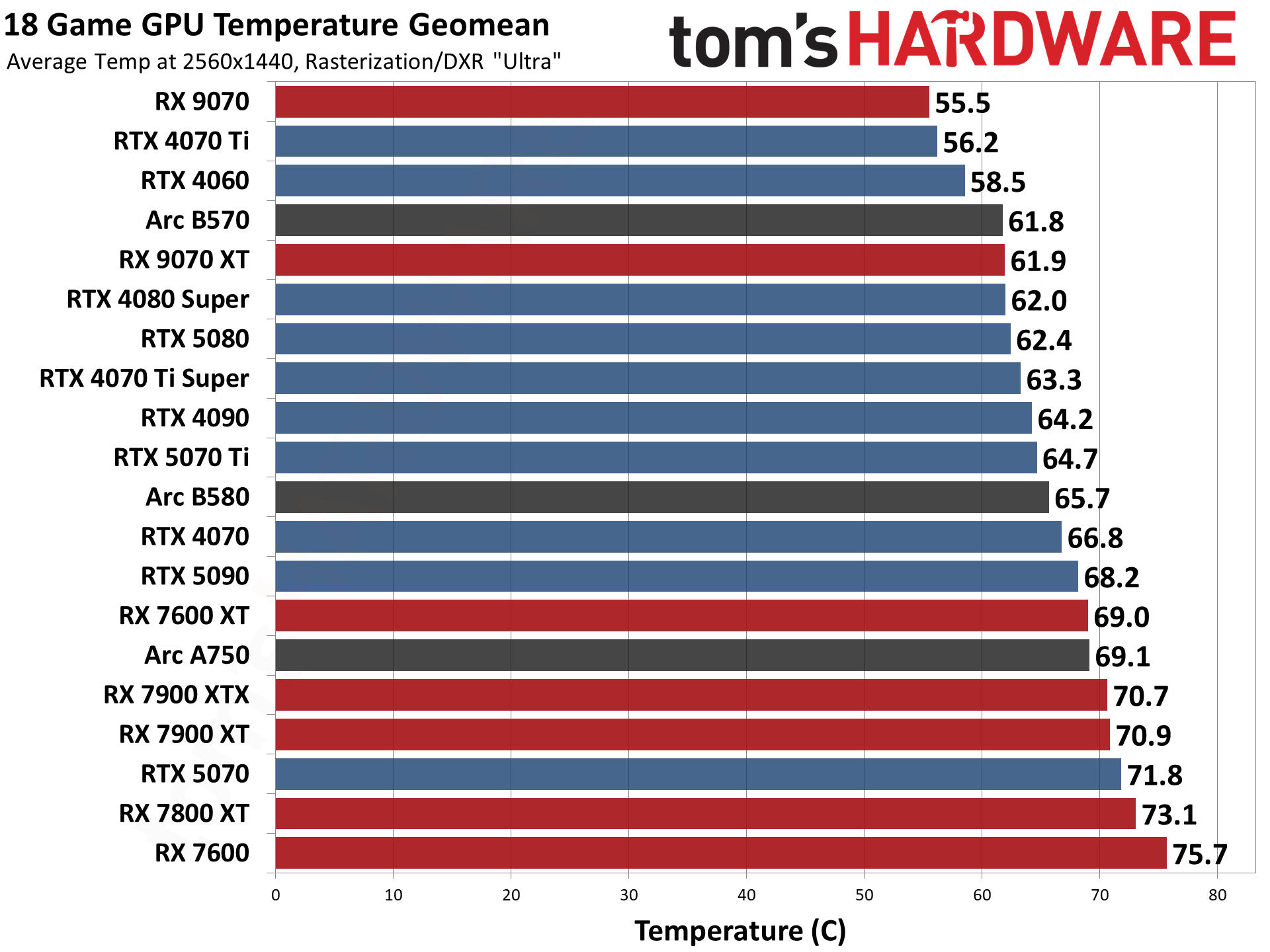
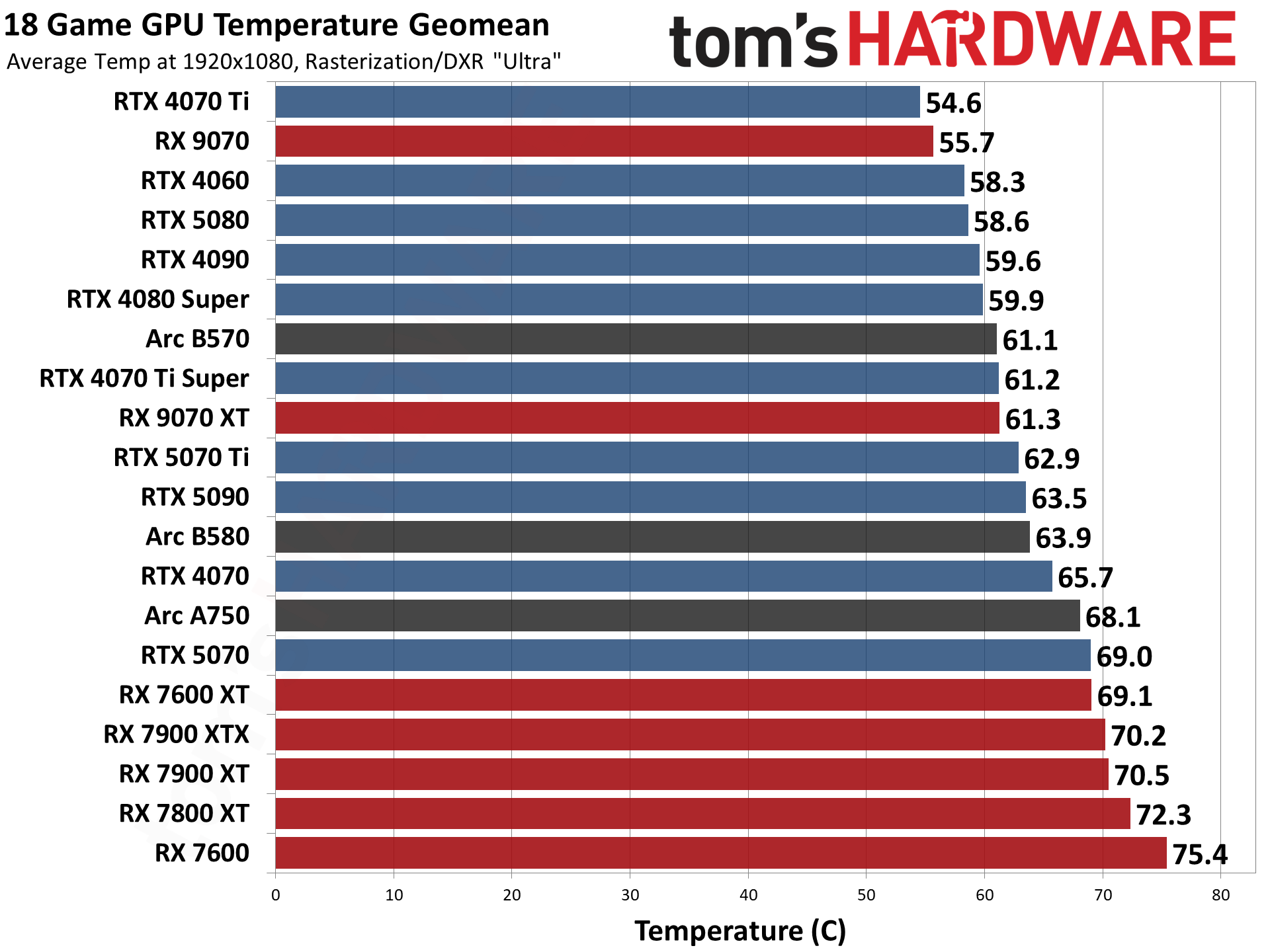

Choosing among the best graphics cards
We have carefully selected eleven top-performing graphics cards, acknowledging the possible similarities among them. Due to the current scarcity of the latest GPU models and the incomplete lower tiers of new product lines, our list incorporates some options from the previous generation, which remain viable choices until the new ones become more widely accessible.
We have compiled a selection of the finest graphic cards currently on the market, complete with up-to-date online prices that we monitor closely.
GPU prices guide
Given the current high prices and limited availability of cards, it may not be the most opportune moment to consider an upgrade. While we anticipate a positive shift in the market, our recommendation is to avoid overpaying for outdated technology. If an upgrade is necessary, it's best not to delay indefinitely, as technological advancements are constant.
When focusing on gaming, the CPU is crucial. Even with a top-tier GPU, an outdated or weak CPU can hinder performance. Ensure your CPU matches your gaming ambitions for optimal results.
Best CPUs for Gaming
page, as well as our
CPU Benchmark
Establish a structured system to select the appropriate CPU based on your desired gaming performance level.
Our latest suggestions are based on the dynamic GPU market landscape, considering all the mentioned aspects. We rank the GPUs subjectively, considering their performance, pricing, features, and efficiency. This approach may lead to slower GPUs ranking higher on our list.
Additional Shopping Tips
When
buying a graphics card
, consider the following:
• Resolution
To achieve optimal performance, consider the GPU power required to support higher pixel resolution for an enhanced gaming experience.
1080p
.
• PSU
: Make sure that your
power supply
Adequate power supply with correct 6-, 8-, and/or 16-pin connectors is essential. Nvidia, for instance, suggests a 550W PSU for optimal performance.
RTX 3060
For optimal performance, ensure your setup includes an 8-pin connector and possibly a 6-pin PEG connector. Some newer RTX 40-series GPUs may require a 16-pin connector, but they typically come with 8-pin to 16-pin adapters for compatibility.
• Video Memory
For optimal performance, consider a minimum of 4GB VRAM, but 6GB models are preferable, with 8GB or higher strongly advised. While some games may require 12GB VRAM, they remain uncommon.
• FreeSync
or
G-Sync
Variable refresh rate technology synchronizes your GPU's frame rate with your screen's refresh rate for smoother visuals. Nvidia endorses this feature.
G-Sync
and
G-Sync Compatible
displays (for recommendations, see our
Best Gaming Monitors
list), while
AMD's FreeSync tech
works with Radeon cards.
• Ray Tracing
and
Upscaling
: The latest graphics cards support
ray tracing
, which can be used to enhance the visuals.
DLSS
Enhance performance without compromising image quality using advanced upscaling and anti-aliasing features exclusive to Nvidia RTX cards, not available on AMD.
FSR
Compatible with almost every GPU, offering upscaling and enhancement for a specific set of games. Introducing a new feature set to elevate your gaming experience.
DLSS 3 with Frame Generation
and
FSR 3 Frame Generation
, along with
Intel XeSS
Introducing a new range of supported games, DLSS 3 now extends DLSS 2 compatibility to RTX GPUs outside the 40-series.
Finding Discounts on the Best Graphics Cards
Now that GPU shortages have eased, keep an eye out for some enticing deals. Explore the newest offers available. Newegg promo codes , Best Buy promo codes and Micro Center coupon codes .
Interested in sharing your thoughts on our top gaming visuals? Share your thoughts on Tom's Hardware Forums .
Stay ahead of the curve with the latest Tom's Hardware Newsletter.
Receive top news and detailed reviews from Tom's Hardware directly in your email.
Jarred Walton is a senior editor at Tom's Hardware focusing on everything GPU. He has been working as a tech journalist since 2004, writing for AnandTech, Maximum PC, and PC Gamer. From the first S3 Virge '3D decelerators' to today's GPUs, Jarred keeps up with all the latest graphics trends and is the one to ask about game performance.
